Youth Employment Magazine

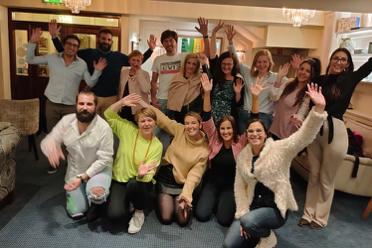


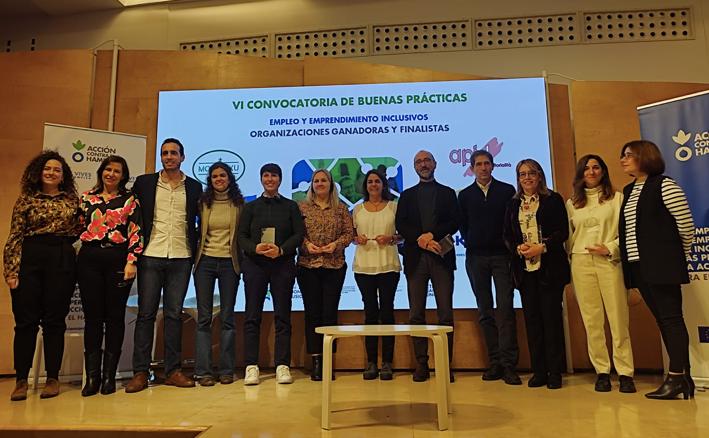
NOVEMBER 2022 N. 21 ISSN 2704 6540
Credits: YOUTHShare Yenesis, StayOn, SEPAL
Director’s Editorial Diversity and Inclusion or Adversity and Exclusion
The Fund Operator at the EFTA House among the EEA/Norway NFPs
YOUTHShare Mini Conference: The “detemporalisation of youth” and other aspects of youth unemployment
YOUTHShare: The hybrid Open Event Cowork4YOUTH and its Baseline Study at the YOUTHShare Open Event
Success stories
Let’s NEET Together #6!
YENESIS Award
Garlic as a bridge between generations - the story of a young farmer from the village of Dolni Rakovets
Success story David Garrido: from being part of one of Casarrubuelos’ first trainings to be hired as gardener ‘NEET’ the documentary film: Official Premiere Women4IT – Shaping the future of digital Youth Employment Online Magazine & Tirana European Youth Capital 2022 - The best moments of our cooperation
Themes of the month Diversity and Inclusion for a Stronger Workplace
The value of diversity in business Diversity is a blessing, not a burden Diversity is a value - sharing international experiences among NEETs in the StayOn project How promoting diversity and inclusion benefits young people in the labour market
Temporary work abroad: How could your Project support exchanges among the members of the YE Family? Promoting the value of diversity and inclusion among young people in the labour market, especially those pertaining to race/ethnicity, gender and gender identity/expression, religion, age, sexual orientation, socioeconomic class, and disability. (Project FOLM)
Promoting the value of diversity and inclusion among young people in the labor market, especially those pertaining to race/ethnicity, gender and gender identity/expression, religion, age, sexual orientation, socioeconomic class and disability. (Project YES!)
Promoting the value of diversity and inclusion among young people in the labour market, especially those pertaining to race/ethnicity, gender and gender identity/expression, religion, age, sexual orientation, socioeconomic class, and disability. (Project L.I.K.E.)
Diversity and inclusion: YOUTHShare diversity a “huge machine” for labour market integration
Fostering diversity and inclusion: the employment of young people with disabilities in Spain
News from the Projects
Creative Center Ruse participares in Tourism Expo 2022 - Destination Varna
HRDA upgrades CODE project achievements
Creative Center Ruse continues the training of students from the National Art School "Prof. Veselin Stoyanov" – Ruse
Make Regional Collaboration Work Interview with Àlex Sastre, the General Director of Youth
1 Youth Employment Magazine
Contents 3 6 8 10 13 16 18 18 20 21 23 24 25 26 28 29 31 33 35 37 38 40 44 46 48 49 49 50 51 52 54
Opportunities for Roma Youth in Spain
Need for NEETs in local communities –Young Service Steward Program
On nudges, pushes and shoves: The rise and fall of projects
StayOn 2nd Knowledge Transfer Workshop - Ireland
Blue Generation Project updates
“Evaluation should be for people” – conclusions from 3rd International Evaluation Congress in Poland
Youth entrepreneurship in accelerating climate action
Second edition of the evaluation workshop serie in Poland is completed!
Young adult NEETs aged 25-29 in Poland, Czech Republic and Slovakia
Excellence Programme evaluation results roundtable in Poland
A learning organization or how can evaluation help us learn?
Evaluation from the perspective of donors and NGOs – Do we even care about the same thing?
How to conduct evaluation with active youth, and how to with the inactive ones?
“NO LIMITS”
Impact evaluation in small and medium-sized organizations. Is it possible?
Creative techniques in evaluation
Ex-ante evaluation – or why and how to conduct evaluation before the project begins
2023: European Year of Skills and the YOUTHShare Project Singular or Plural? Understanding the multiplicity on EU employment policy
The Cowork4YOUTH Baseline Study: an interview with Dr. Elish Kelly
Youthwise: An initiative by the OECD Casarrubuelos in the RAISE Youth project (2018-2022)
RAISE Youth - Rural Action for Innovative and Sustainable Entrepreneurship for Youth. A final reflection from Constanta & Tulcea counties
Contributors & Credits
2 Youth Employment Magazine
58 60 62 63 64 66 68 69 70 71 72 74 75 76 77 78 79 80 82 85 88 89 91 93
Director’s Editorial
Dear Friends,
it is with a high satisfaction that I am glad to present you all our last issue for this 2022, which is the 21st. This year has been an important one and we have made our best to involve you, especially considering the strict link with the European Year of Youth, considering the thread that links these issues with the main target of the Fund: our Youth And, I have to say it, it was great to see the involvement of different Youth Employment Fund’s direct involvement into this initiative with several activities. I am very happy and thankful for having ‘closed’ these last months in Greece – Rhodes, with the YOUTHShare Project, where also Cowork4YOUTH was present and with the Project YES! as a special guest (another YE event listed in the EYY2022 interactive Activities’ Map, a platform managed by DG EAC): we are now beyond the classic working relationship, we became Friends – as happened with the majority of the Projects – and this is, to me, one of the best ways to celebrate the end of another year together.
Not surprisingly, we decided, together, to dedicate this month’s theme – being the last 2022 issue – more directly to youth, and particularly to the importance of exchanges and of their identity, going beyond gender, religion, age, etc., while focusing on inclusion.
Maybe, in the next future, we will see real exchanges among the Funds’ beneficiaries? Of course, I am not only talking about travel exchanges, but about all the possible meanings that ‘exchange’ can have. For sure, with all the best and inspiring successes achieved also this year by the Projects, the framework of the Youth Employment Fund can be a great source.
And I believe that, now that, hopefully, no other lockdowns will come, the Projects themselves have a lot to say, a lot to tell. They are incredible containers of success stories, human stories. Why not calling them ‘special boxes’? Or, better, human boxes to be positively exchanged through their stories.
Stories… I am talking a lot about stories especially after having known the topics of the communication workshop which our FO’s communication officer participated at. As far as I understood, but how not to agree with that, the EEA & Norway Grants Family is a big one with different programmes, projects, funds; but, after all, communicative efforts can be shared regardless of the specific area of interest. So, why not talking more, in the next future, about #OurStories?
I am sure that some news about this hashtag will come to you soon.
But creating and telling stories is still a skill, a competence. Each good story needs our heart; but – as in all things – to be more compelling, one has to ‘study’ how to do it, how to promote it, how to follow at the best the concept of storytelling (such as we did with Tara last year involving the communication officers of the project directly).
It is not a surprise I am talking about skills and competences: we are at the end of 2022, the year dedicated to youth, and 2023 will be the European year of skills and competences. I think I can talk on behalf of all of you: to work with and especially for youth needs good competences. And that is why I believe this is the moment to start shaping our best stories and future skills in the interest of our common goals, the Fund’s goals.
3
Youth Employment Magazine
Those concepts were highlighted during the 6th joint meeting of the European Year of Youth National Coordinators and stakeholders, I was there together with representatives of DGs, youth units and organisations, national coordinators and, in few words, the motto has been ‘be prepared!’. You could ask me ‘prepared to/for what?’. And thinking to that event I can just tell you that the meaning is ‘start thinking how to improve your competences’.
This doesn’t mean that what you did isn’t enough. I am convinced that our ‘special boxes’ are great collectors of innovative solutions, that they developed in first person. But their, our work is the link between society and policy makers: that is why we always have to ameliorate, to have better policies.
Better job policies are needed, especially after the pandemic. Just few days ago, the 20th, the international day of the rights of children and adolescents (World Children’s Day) was celebrated and I believe that we must keep starting from that to have better skills and competences. Without talking about the dangerous effects of these last years on their mental health (another topic that, sooner or later, I would like to discuss with you, maybe early next year?).
Talking about international days, another mention goes to the European Day of Persons with Disabilities. I participated at the conference of the 2022 edition, the 24th and 25th November, and these are other urging issues we (as Fund) also face. An event that brought together more than 400 policy-makers, experts and disability advocates, hearing concerns and aspirations of people with disabilities. The goal? Making sure that persons with disabilities enjoy equal rights and opportunities.
Last but not least… the 25th of November was the International Day for the Elimination of Violence against Women!
I just want all of us to reflect: how many young women, how many young with disabilities, how many young with mental health problems we know today? What can we do more for them?
This means also, as was underlined several times during the several meetings I mentioned, that we still have important competences to develop for a better education of our youth, for better trainings. As was said by Ioannis Malekos, from DG EAC, during the EYY National Coordinators and stakeholders meeting, there has been ‘impressive mobilisations to create new opportunities for youth, with more than 5.000 activities, with a potential outreach of more than one hundred and 50 million Europeans’.
With those numbers, I would like to thank you again because I am strongly convinced that our shared efforts lead you there, you and your Project’s activities are part of this figure.
And again, I am sure you will be an active part of the future European Year focused on skills and competences, continuing to make your youth protagonists, as we have been doing during these last moths’ country-national meetings.
Last but not least, I have been invited to represent the Funds, and therefore you all, at the European Year of Youth 2022 - EYY National Coordinators and Stakeholders meeting taking place on 5th December, and to the 'Claim the future' EYY Legacy conference, taking place at the European Parliament in Brussels on 6th December 2022. I am looking forward to share with each one of you the results of that meeting and, as usual, I will do my best to represent you and your successes.

4
Youth Employment Magazine
I think I have expressed a lot of concepts and I want to give you the right time to ‘absorb’ them, to start together a new, impressive year. And, talking about next years, about our future, let me congratulate to the next European Youth Capital 2025.

There has been, few days ago, the European Youth Capital 2025 Award Ceremony in Tirana: Lviv (Ukraine) is the selected one, while I also want to thank, on behalf of the entire Fund Operator, the National Youth Congress of Albania for having shared with us their successes and best practices these months, hopefully our Mag has been a good place for them. And while saying “arrivederci” to Tirana allow me to great next year European Youth Capital 2023, “benvenuta” Lublin. Let’s hope we will be able to shortly witness the passing of the “baton”.
I leave you with some pictures taken in Rhodes with YOUTHShare, since I hope to be invited and be able to go soon to other Projects sites.


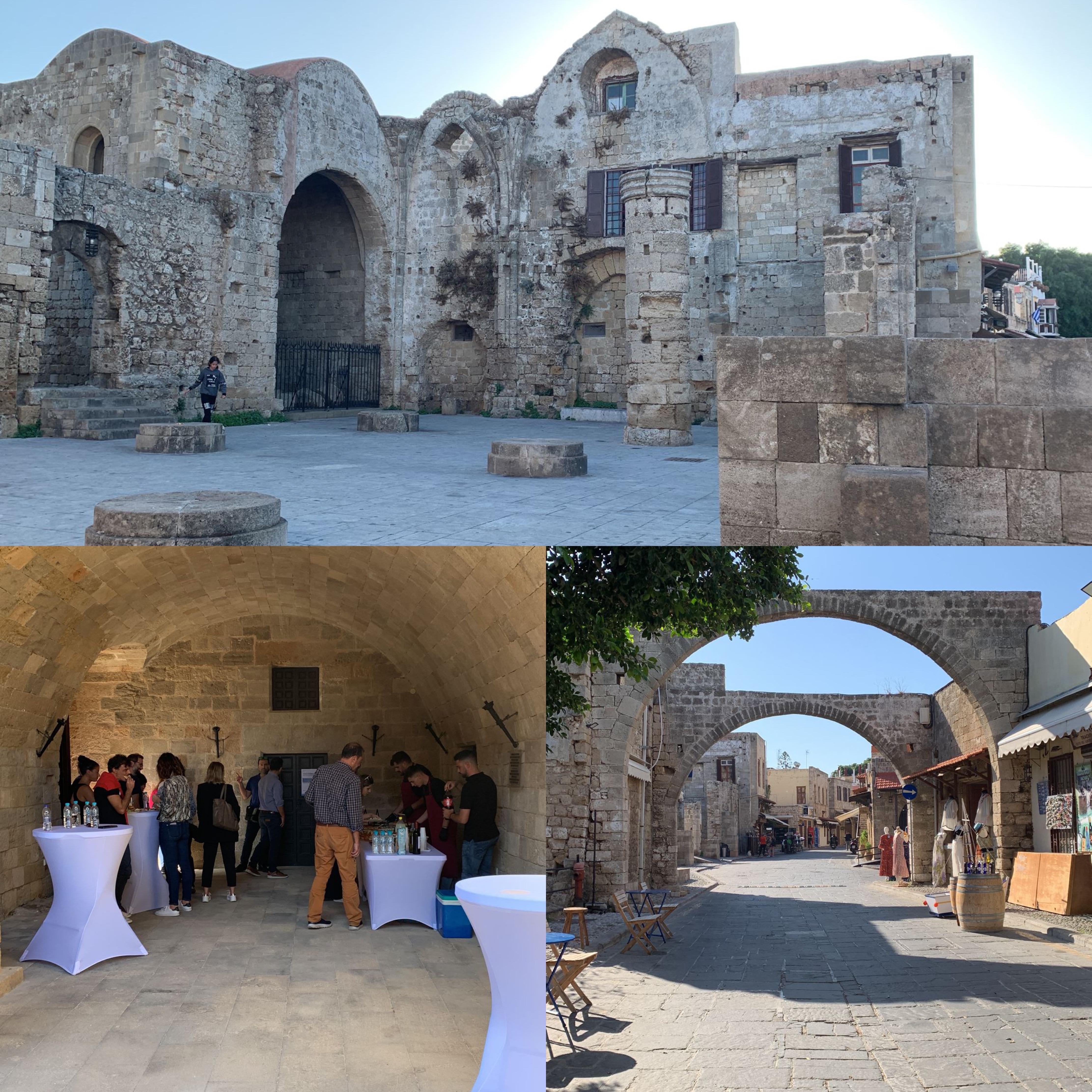 Luca Bombarda The Fund Director
Luca Bombarda The Fund Director
5
Gian
Youth Employment Magazine
PS: make sure you attend the 4 Regional Funds Annual Seminar
Diversity and Inclusion or Adversity and Exclusion
Edward Kennedy
The fanfare that launched European Youth Year (EYY) is now a receding echo as we approach the year’s end. Different juries will take the opportunity to pronounce on its successes, failures and value. Soon it will be time for you all to take stock and to analyse your own inputs, via your projects, to the different goals of the EYY. It will also be an occasion for you to hold to account the different institutions, organisations and political entities that involve themselves in youth affairs.
As I reread the eloquently scripted Goals and attendant statements and promises that kicked off the year in such optimistic fashion, I regret to say that there is not too much of that in play, or in spirit, at the World Cup Finals in Qatar. The host country’s actions and reactions are, perhaps - given their record on human rights, inclusion and diversity -, not a surprise, but the spineless, submissive reactions by the international football association and national football associations is shameful. Here on the biggest global stage, with a multimedia audience of billions, was an opportunity to make some brave and bold commitments for inclusion and diversity. They failed miserably.
In any discussion on sensitive issues such as inclusion and diversity it is always helpful to
understand the context within which we work and the framework in which policies are made.
Let us remind ourselves of the underlying values upon which the European Union is founded:
• Human dignity . Human dignity is inviolable. It must be respected and protected. The dignity of the human person is not only a fundamental right in itself but constitutes the real basis of fundamental rights.
• Freedom. Freedom of movement gives citizens the right to move and reside freely within the Union
• Democracy. The functioning of the EU is founded on representative democracy.
• Equality. Equality is about equal rights for all citizens before the law. The principle of equality between women and men underpins all European policies and is the basis for European integration. It applies in all areas.
• Rule of law
• Respect for human rights, including the rights of persons belonging to minorities.
While the aims of the EU within the wider world are:
• Uphold and promote its values and interests
• Contribute to peace and security and the sustainable development of the Earth
• Contribute to solidarity and mutual respect among peoples, free and fair trade, eradication of poverty and the protection of human rights
• Strict observance of international law.
Looking at inclusion and diversity from a different angle: today, investors, consumers, employees, and civil society are all watchful as to how businesses respond to the diversity, equality and inclusion challenges they, and we all, face. Companies are expected to act beyond compliance and to take a real stand on inclusion. The global pandemic has radically disrupted the employment market. It has exposed the fault lines of the deeply rooted inequality in our society and has broadened the social divide.
“An equal, diverse and inclusive workplace is a key driver of resilience and recovery."
Manuela Tomei, Director, ILO Conditions of Work and Equality Department
6
Youth Employment Magazine
“What divides us pales in comparison to what unites us.”
Inclusion in the workplace is about valuing people from di ff erent countries, di ff erent ethnicities, different backgrounds, and, thus, creating a strong sense of connectedness and belonging. It is the recognition that diversity of experience and thought can benefit business productivity and the ability to connect with customers.
trap of them and us. Gender is for women;
Racism is just about #BlackLivesMatter and so on. Lack of opportunity or inequality is usually not the result of single, distinct factors. Often it is the outcome of intersections of different characteristics, power relations and experiences.
A recent report from the International Labour Organisation (ILO) explored the fundamental principles governing inclusion: ‘At its heart, inclusion at work is about making all members of an organisation feel valued and allowing equal opportunity to connect, belong, and advance. It is about people being supported and encouraged to contribute to the organisation to be an important element in its ethos, advance their skill sets and careers, and feel comfortable and confident being their authentic selves. Inclusion is going a step beyond just diversity – it is when the differences of all come together to create an environment where people feel they can truly be themselves. A truly inclusive workplace understands this diversity and how to bring out the best in its people, teams and culture.’
“An individual has not started living until he can rise above the narrow confines of his individualistic concerns to the broader concerns of all humanity.”
Martin Luther King, Jr
The tendency is to think of diversity in singular terms. However, by doing so we fall into the

It seems as if there are many stations on the journey to meaningful inclusion and diversity in our societies, but we must keep travelling forward, inspired perhaps by the below Islamic proverb:
“A lot of different flowers make a bouquet”.
 Thomas Mc Grath Our Irish Journalist
Thomas Mc Grath Our Irish Journalist
7
Youth Employment Magazine
The Fund Operator at the EFTA House among the EEA/Norway NFPs
The Regional Fund Operator Communication Officers, represented by Mateusz Wiśniewski and Francesca Bombarda, have been invited to the communication workshop (the autumn edition) organised by the Financial Mechanism Office, held in Brussels, last 2nd and 3rd November.
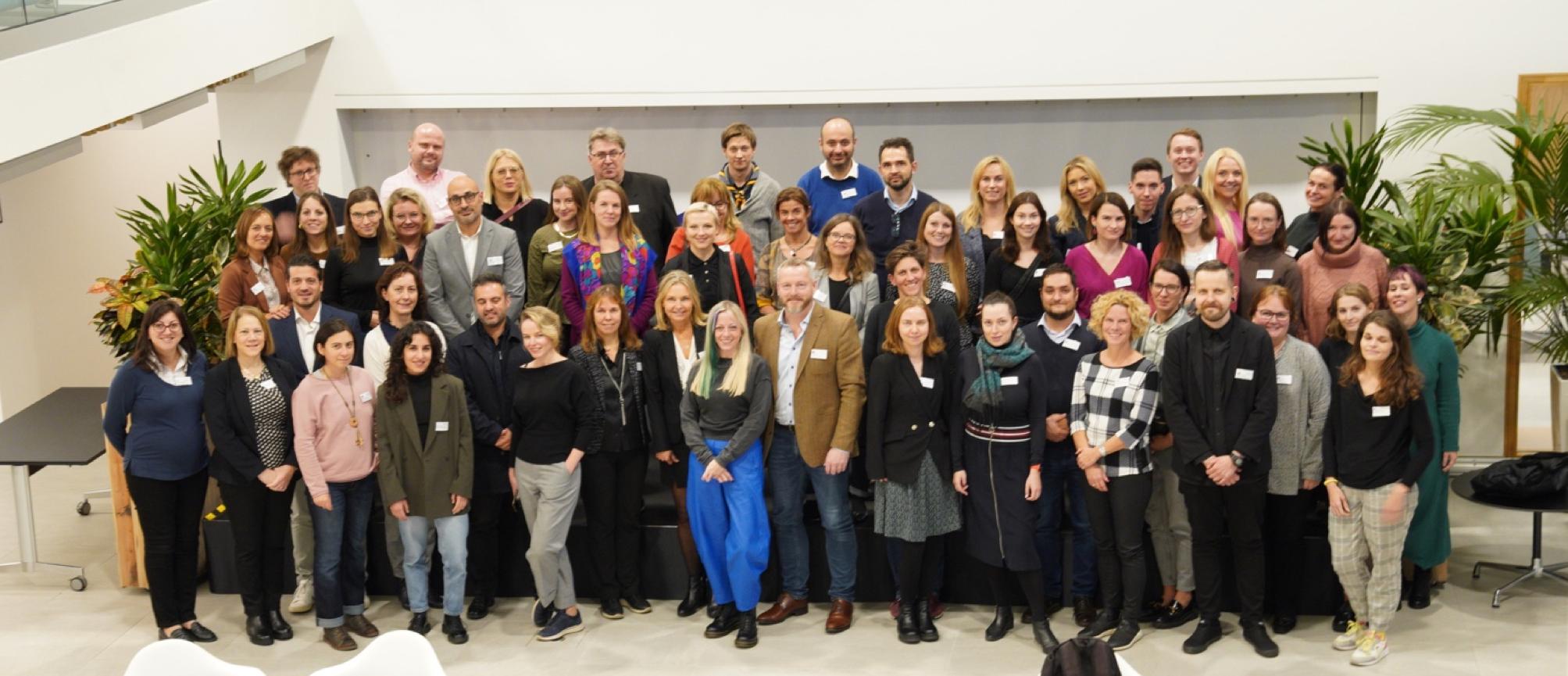
It was the first time that the Fund Operators were invited to the workshop, organised every year for the National Focal Points and the Donor Embassies. A lunch-to-lunch meeting full of inspiring practices shared by the different countries represented. New faces for the Fund Operator, but, in a certain way, shared challenges and, particularly, goals.
The result? A growing network. And for sure, full of communication, new efforts thought to better showcase the successes achieved. And related to that, guess? Mateusz and Francesca were there to represent the two Regional Funds’ Magazines, the Youth Employment and the Regional Cooperation Online Magazines, which are still there thanks especially to the interest, dedication and – above all – projects’ work.
Different questions were asked: our Mags are made by the co-funded Projects directly, it is a space to showcase their activities and success stories, enriched by some external pieces contributing to our goals. Not a ‘classic’ newspaper neither a simple newsletter. But it is precisely for this reason that they have been presented as a successful, innovative experiment.
8
Youth Employment Magazine
But the FO, in that workshop, was only one part – for sure important – of this big puzzle (that among us, as you all know, is called Family :) ). It was focused on storytelling, thus retracing a bit our same line we presented to the Projects during end 2021. There have been different presentations coming not only by FMO representatives, but also from the NFPs themselves.
The shared spirit towards effective communication outputs lead the participants to recognise that we have many things in common, giving thus the opportunity to exchange ideas, problems, solutions.
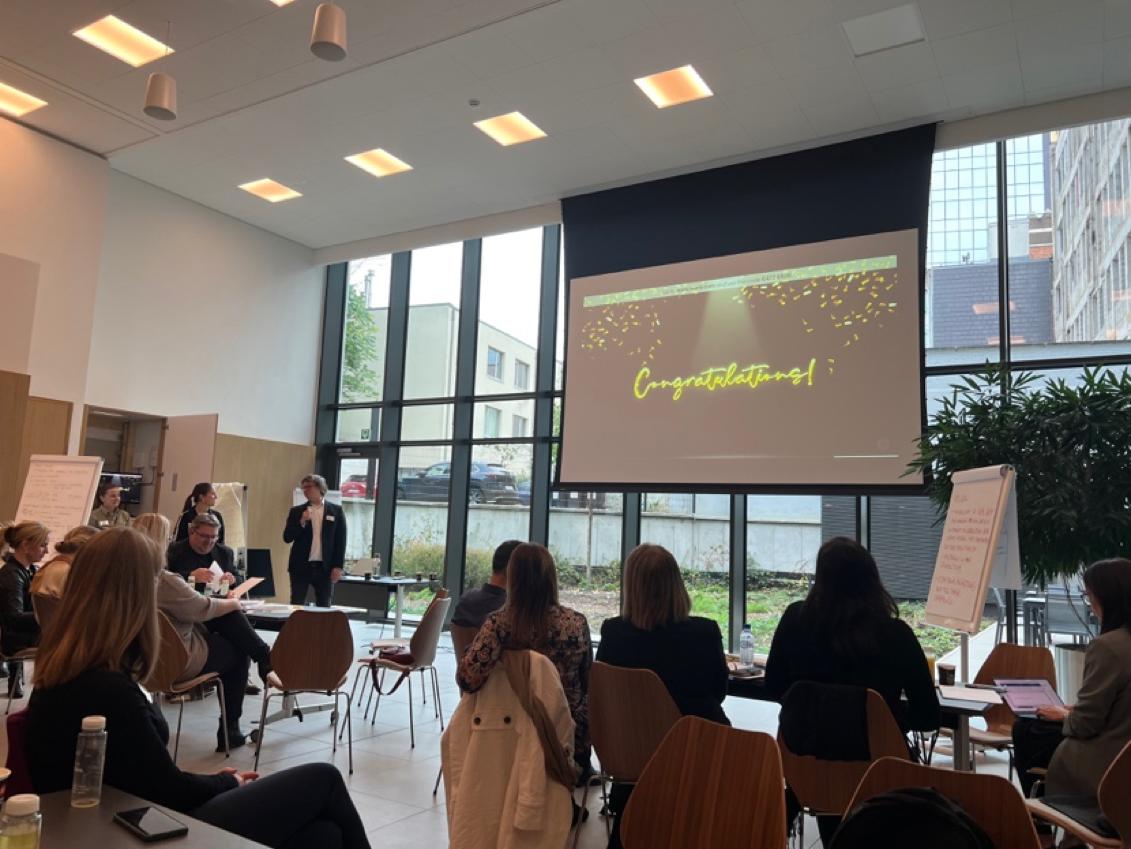

In short, this has been a fruitful workshop full of stories. And this is the best term to conclude with. Stories. Stories coming from the National Focal Points, from internally the FMO sharing their campaigns’ results, and from our YE and RC Projects. Stories from the ground.
This is the direction where the future communication goals want to go. Collecting our successes, our best practices coming from the ground, showcasing them at the best we can.
In one word, or better in one hashtag: are you ready to share #OurStories?
Be ready and stay tuned, some news about that will come in the next months. For the moment, you can just think which is, for your Project, the best story to tell and the best way to do that. The important is to think about compelling stories in a human and emotional way, starting from the local level while highlighting our cooperation with the Donor States. Again, the important will be to… tell #OurStories !
Our Mags are for sure a great and excellent source to draw from.
9
Youth Employment Magazine
Francesca Bombarda Fund Operator
YOUTHShare Mini Conference: The “detemporalisation of youth” and other aspects of youth unemployment

unemployment, labour and labour force identity formation. In his speech titled “Space, Youth and Work”, Dr Farrugia approached the relationship between youth and its spatiality, and young workers in the production of space. He noted that youth is a phenomenon spatially distributed, as well as structurally and institutionally organised. More precisely, three epistemological and ontological considerations were underlined in the relation between spatiality and youth: Youth as developmental time, youth as a governmental project and the legacy of youth transitions in the youth and work correlation. For example, when youth is considered as a governmental project, it means that projects that have the goal to embolden political change or economic development by placing youth as “agents of economic growth” in the Global South, then “young people’s cognitive and emotional development is seen as a synonymous to their capacity to produce value and compete within global marketplaces”.
On Saturday November 5th, the second day of the two-day event “4 Years of Research and Social Intervention for Young NEETs”, the YOUTHShare Colloquium/ Mini Conference took place. A hybrid event with esteemed participants joining either on site, the Hospice of St Catherine in the Medieval of Rhodes in Greece, or online. The aim of the event was to provide a live forum to renowned scholars, academics and researchers from various institutions and backgrounds to confer on youth employment, with focus on young NEETs, and relevant policies, as well as define the structural and socio-spatial parameters of youth unemployment and precariousness in the labour market.
The interesting colloquium started with the keynote speaker Dr David Farrugia from Newcastle University, Australia, member of the Newcastle Youth Studies Network and sociologist, with specific focus on
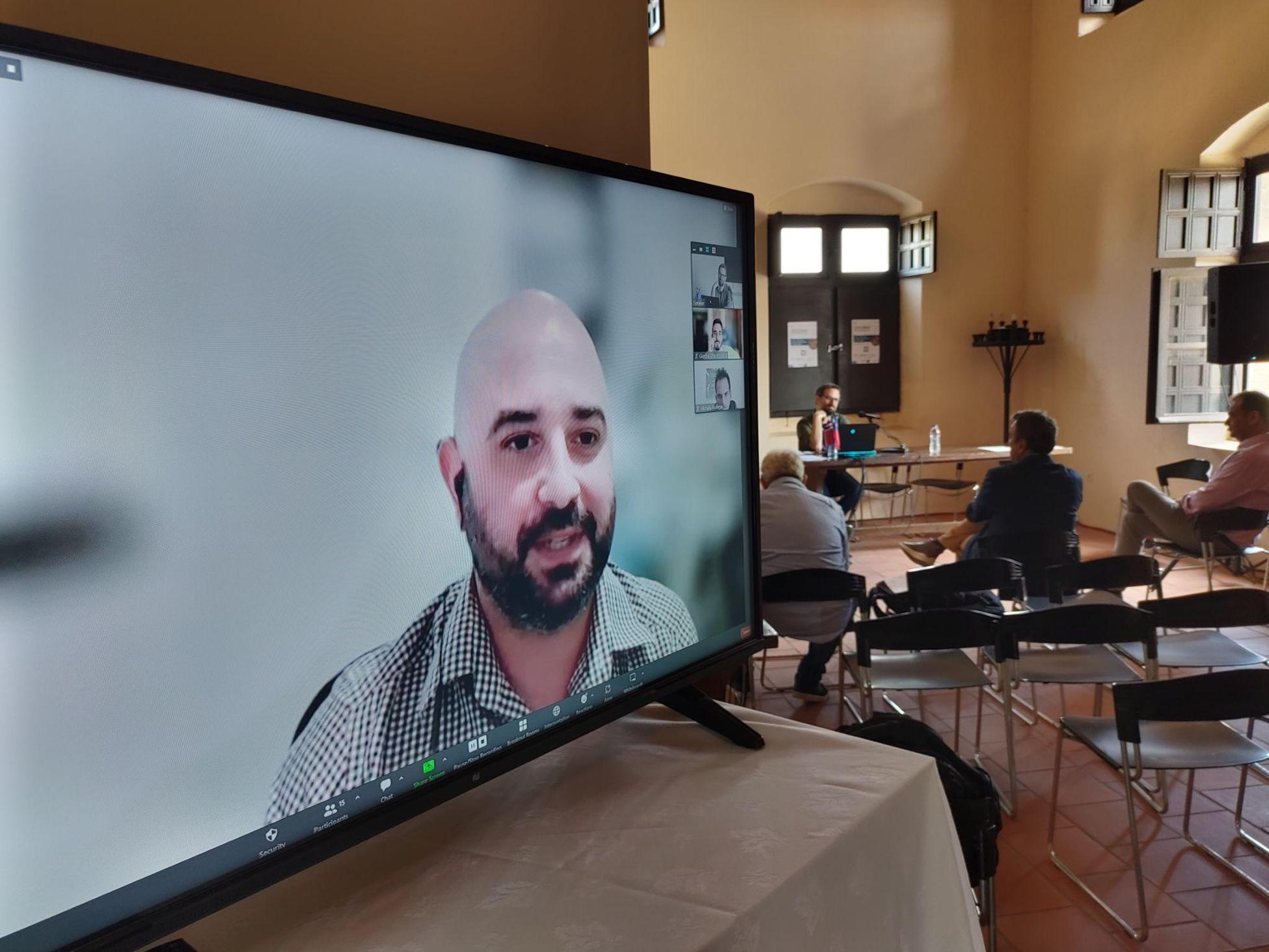
10
Youth Employment Magazine
In his speech, Dr Farrugia introduced also his concept of “detemporalisation of youth”, or the “evaporation of any legible temporality to young people’s biographies”. Youth are learning through education, “global notions” of development, considered, in a global context, as the key to escape poverty and grow economically. But missing the local and temporal contextualisation, means that education, under that light and as a tool to enhance one’s life condition, results in graduate unemployment and limited professional time in the labour market.
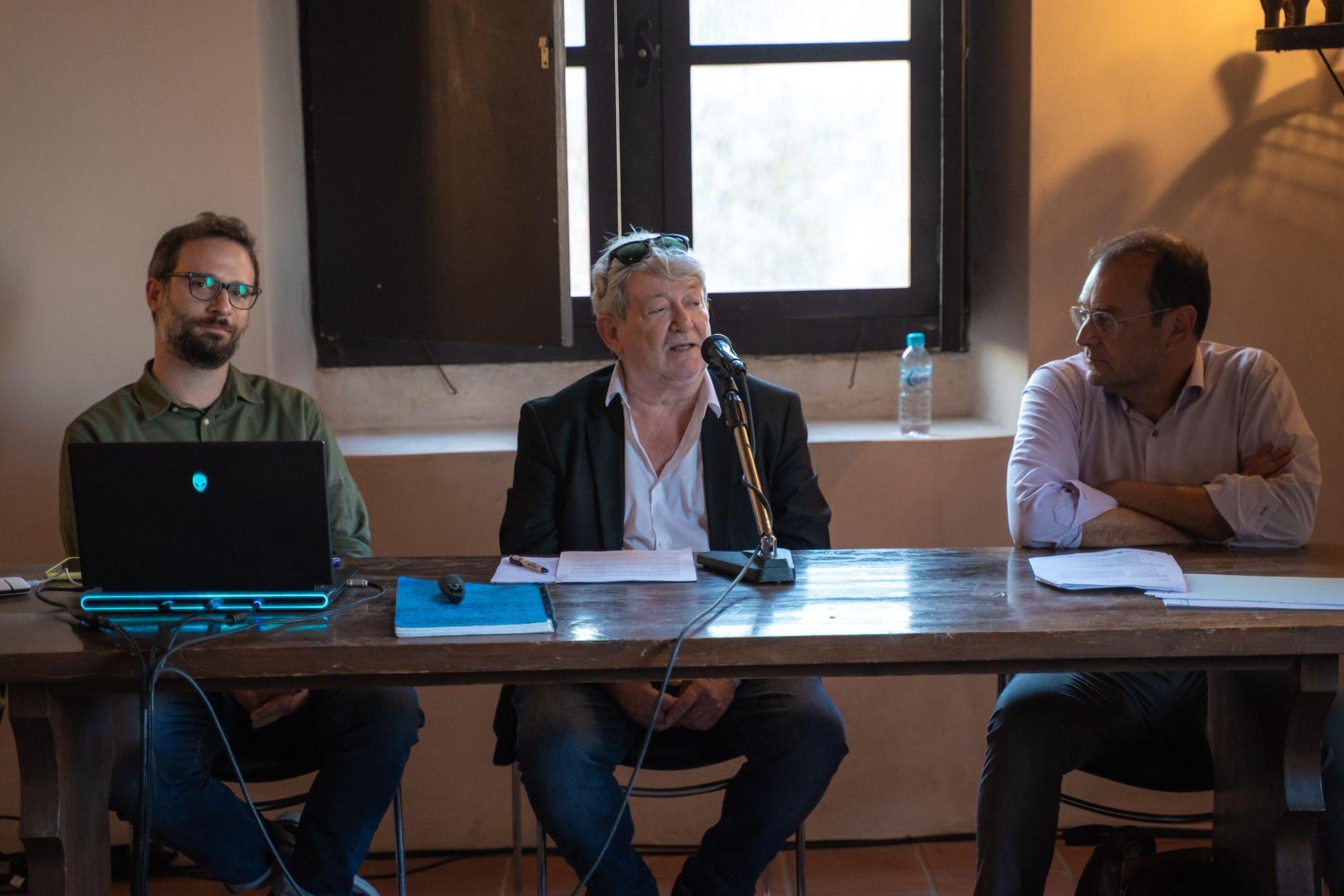
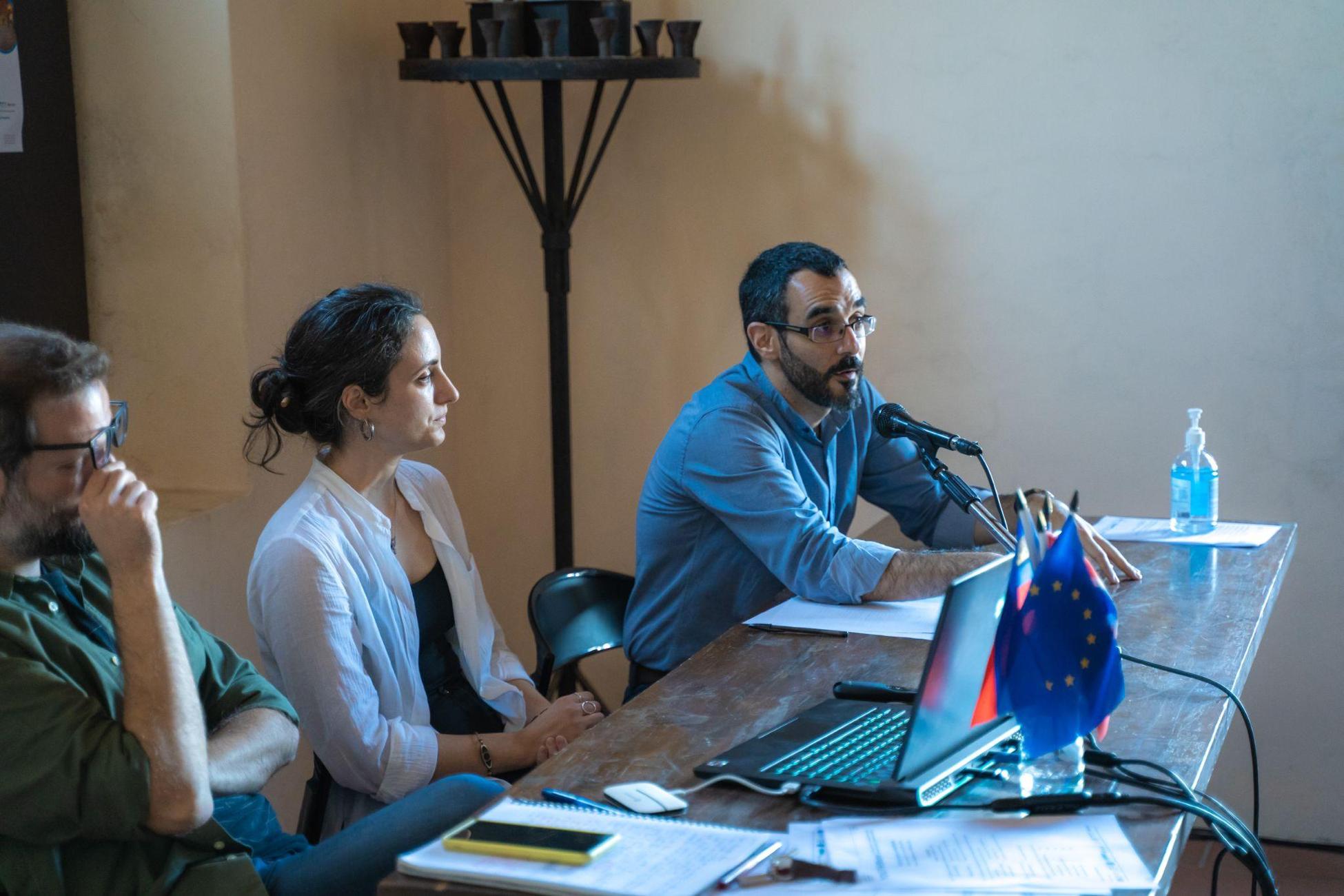
Following keynote speech, the rest of the Colloquium was divided into two sessions, the first one titled the“NEETs entrapped by labour market policies in the European Union (EU), and the second “NEETs and youth employment, challenges and policy responses” with young and experienced researchers as presenters and respondents. The topics discussed in the first session concerned socio-economic drivers and gender divisions about NEETs in the EU South, and youth labour markets. The subjects of the second session were about the challenges vested with the NEET identity in the EU South, youth unemployment and inactivity in
The event was addressed by Dr Stefanos Drakos, Vice-Mayor of Rhodes for Cultural Monuments and Urban Planning and was attended by representatives of the local authorities, academics and researchers institutions. The event concluded with questions that led to interesting discussions about tackling youth unemployment among the participants. The Colloquium/ Mini Conference was organised with the support of the Ministry of Culture and Sports - Dodecanese Ephorate of Antiquities and was part of the events for the European Year of Youth.
Project YOUTHShare
11
regions experiencing energy transition, and a critical overview of the EU employment policy.
Youth Employment Magazine
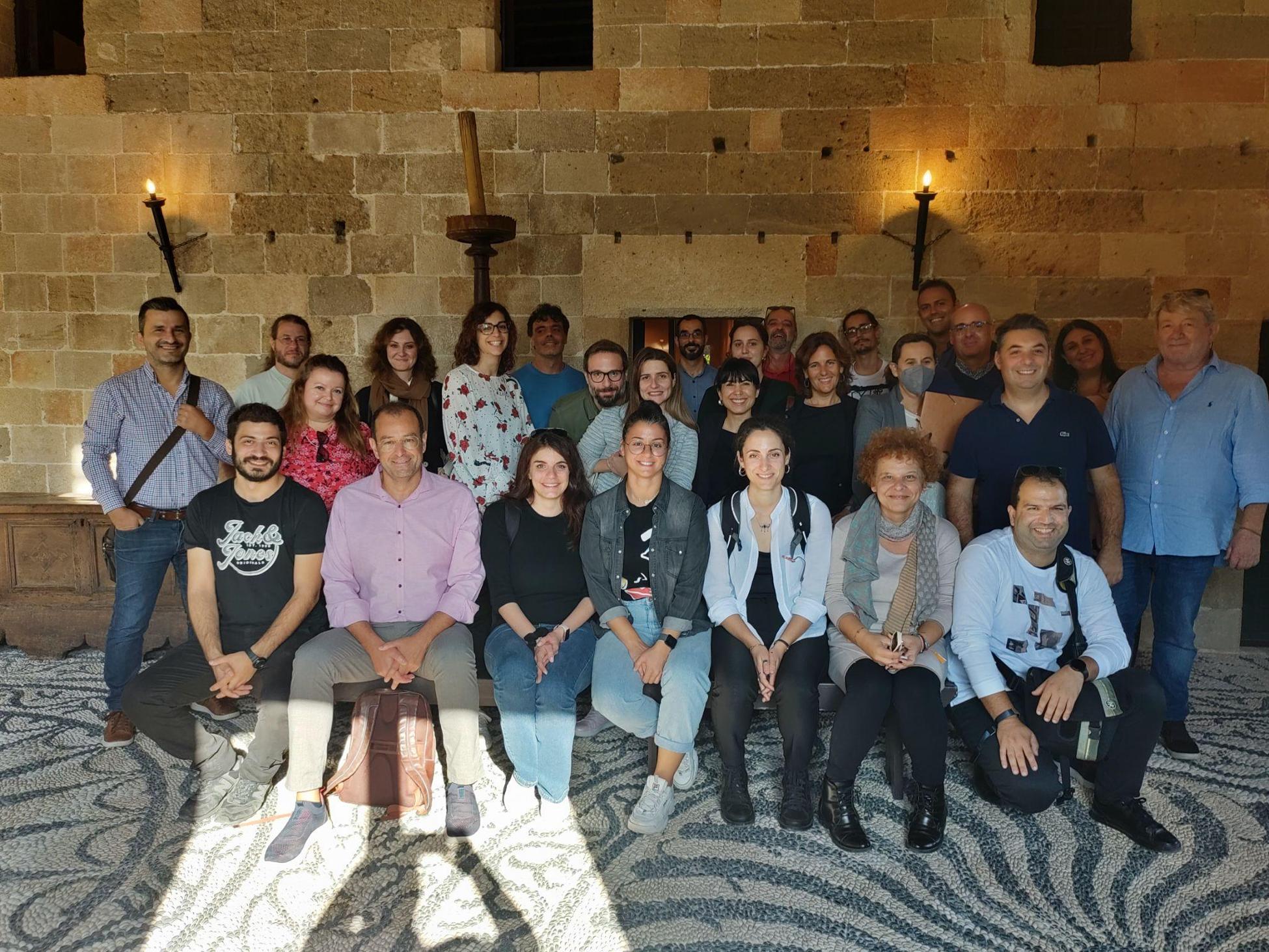
12 Youth Employment Magazine
YOUTHShare: The hybrid Open Event


Friday November 4th was a significant day for the YOUTHShare project, as the Open hybrid Event marking the four years of the project’s implementation took place, at the Hospice of St Catherine, in the Old Town of Rhodes in Greece. Prominent researchers from around the world and local authorities’ officials, either with a live presence or online, assessed and discussed the successful points and the shortcomings of YOUTHShare, presented best practices from different projects and contributed with important insights about policies needed for tackling youth unemployment.
The Open Event entailed two sessions, each devoted to a special thematic. The first one regarding the YOUTHShare project focused on the role of the Key Account Managers (KAMs) and of the Transnational Employment Centre, the training of beneficiary NEETs and the facilitation of their entrepreneurial endeavours. The session elucidated the key factors for the success of the project including the transnationality of the project in its research and intervention legs across 4 countries (Spain, Italy, Cyprus and Greece), the selection procedure and the close monitoring of the KAMs in each branch of the centre, the high quality and research-based training materials and tools, the mobility schemes for vulnerable NEETs, and the platform based intervention, with respect to training (e-learning platform) or to mentoring and networking (Join2Share).
13
Youth Employment Magazine
The second session, ‘Social Innovation and the Fund for Youth Employment Projects’, entailed presentations of two fellow Fund for Youth Employment projects, Cowork4YOUTH and YES!: Young Entrepreneurs Succeed, followed by the YOUTHShare spin-off project, e-ResLab Aegean, an Observatory of Geo-spatial technologies and analyses for employment and resilience in Med EEA area. Ms Anna Saroukou, former beneficiary NEET of the YOUTHShare project and currently research staff of the e-ResLab Aegean as well as Greek co-representative at the EEA and Norway Grants Youth Forum 2022, provided insights on how WebGISbased observatories may enhance the e ff orts of tackling youth employment. Purpose of the second session lied beyond parallel monologues and focused on the exploration of productive synergies. The e-ResLab Aegean, being a spin off project has congenital links with the YOUTHShare project. It started as a need for immediate action of the latter during the first months of the COVID-19 pandemic and since then it has been constantly providing valuable data on the peripheral dimension of youth unemployment. The Cowork4YOUTH project, following the common event in Potenza, Italy in May 2022, reiterated the support to the vision shared with YOUTHShare project, that includes sharing of data, expertise
and transfer of know-how. The Open Event was an opportunity for the exploration of new collaboration with the the project YES!: Young Entrepreneurs Succeed. After confirming the shared values, the details of common use of YES!’ mentors’ databases and YOUTHShare’s mentoring platform were laid down.
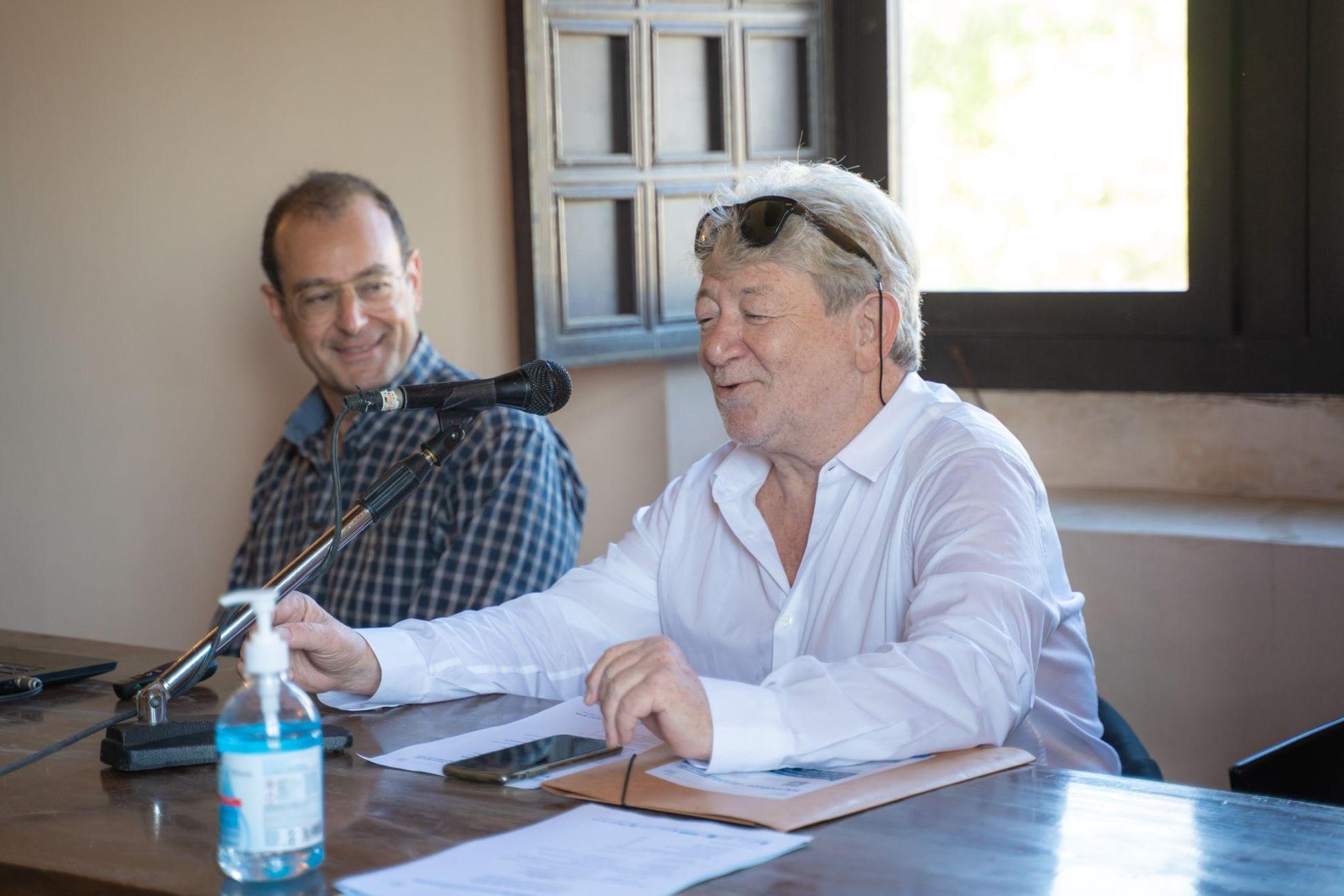

The day concluded with Q&A for all projects presented, which led to fruitful and interesting interactions and discussion between the participants, both on site and online. The presence of Mr Gian Luca Bombarda, Director of the FO of the EEA and Norway Grants Fund for Youth Employment played a significant role in putting the whole discussion in the framework of the common goal of addressing youth unemployment.
Apart from Mr Gian Luca Bombarda, the Open Event was addressed by Mr Konstantinos Taraslias, Vice Mayor of Rhodes for Communication, Press and Etiquette, Professor Ioannis Seimenis, Dean of the School of Humanities of the University of the Aegean, Professor Elena Theodoropoulou, Vice Rector of the University of the Aegean for Academic Affairs and Students’ Welfare, Mr Kostas Boukouvalas, Researcher at the
14
Youth Employment Magazine
The Open Event was organised with the support of the Ministry of Culture and Sports - Dodecanese Ephorate of Antiquities and was part of the events for the European Year of Youth.
Project YOUTHShare

15
Labour Institute of the Worker’s General Confederation of Greece and Ms Ioanna Lytrivi, Managing Director of the National Organisation for the Certification of Qualification & Vocational Guidance.
Youth Employment Magazine
Cowork4YOUTH and its Baseline Study at the YOUTHShare Open Event
being a young NEET, in regions classified as non-metropolitan, remote, based on one-sector economy or in energy transition, is the one that Cowork4YOUTH is trying to tackle, by enhancing knowledge on current relevant policies, and in later stages to influence transnational policymaking with substantial policy recommendations.
On November 4th, the Cowork4YOUTH project was proud to participate in the hybrid Open Event organized by YOUTHShare, a fellow Fund for Youth Employment project. Online participants joined academics from various parts of the world and representatives of local authorities in the Hospice of St. Catherine in the Medieval Town of Rhodes, Greece, for an event supported by the Dodecanese Ephorate of Antiquities as part of the events for the European Year of Youth.

The project manager of Cowork4YOUTH, Ms Aggeliki Demertzi, along with the Communication Manager, Mr Savvas Alexandros Pavlidis, talked about its objectives, main challenges, as well as its transnational value, and concluded with findings of the recently published Baseline Study on Impact of Youth Employment Policies. The multifaceted challenge of
The presentation was part of our synergies policy, aiming to achieve the best possible results through cooperation and exchange of ideas with other Fund for Youth Employment projects. Besides the hosting YOUTHShare project, and Cowork4YOUTH, the event also featured the participation of one more Fund for Youth Employment project, “Yes!”, as well as academics and practitioners from Europe and even as far away as Australia. Although the opportunity to promote our work at Cowork4YOUTH was welcome, the more important aspect of such events is the exchange of ideas and experiences. As a younger project, we have much to learn from the experiences of mature ones such as YOUTHShare and Yes!. On the subject of research, we hope that we were able to give back a little of the inspiration that we received from the presentations of the other participants and the discussions we had.
https://www.cowork4youth.org/
Project Cowork4YOUTH
16
Youth Employment Magazine
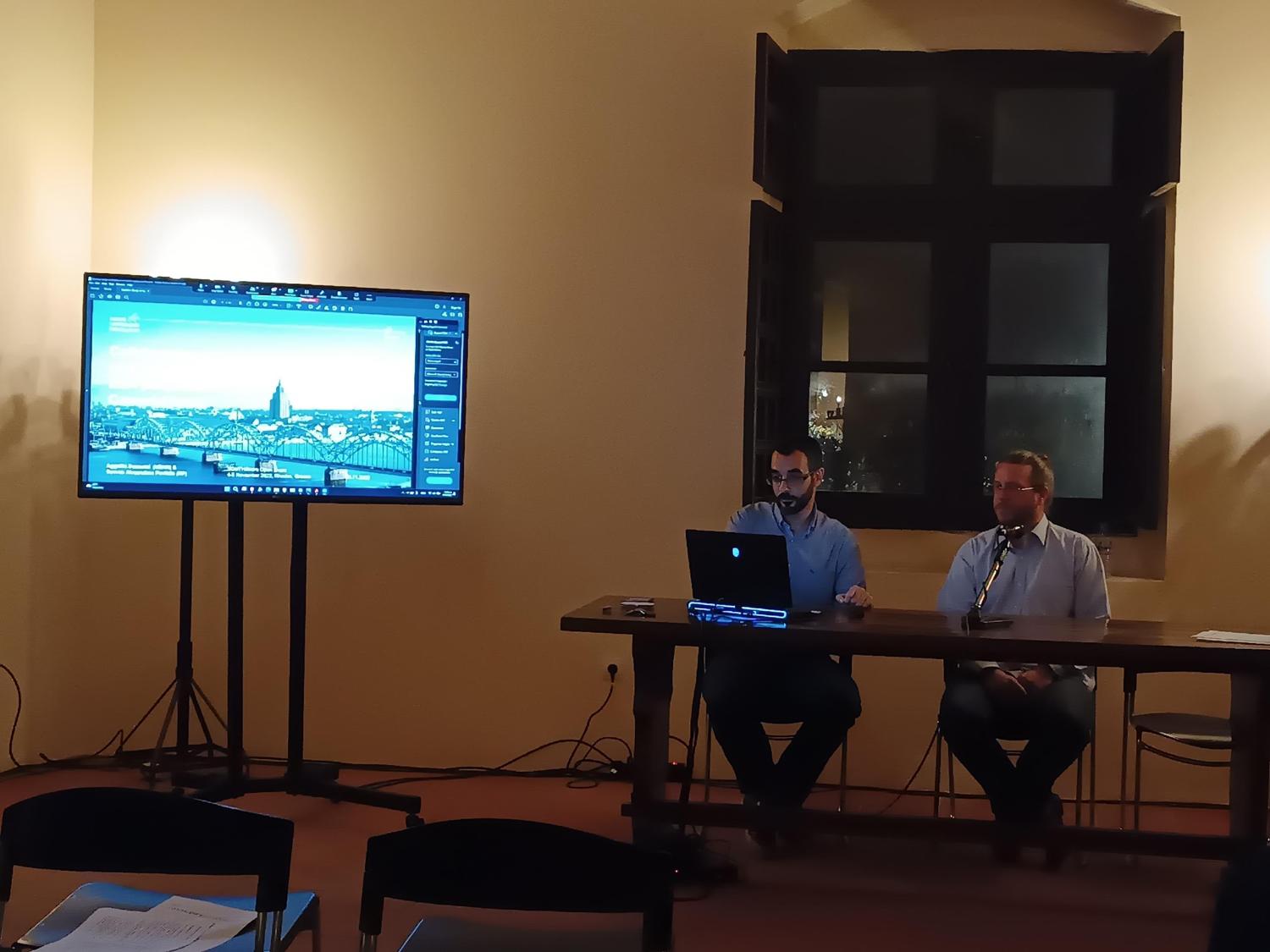
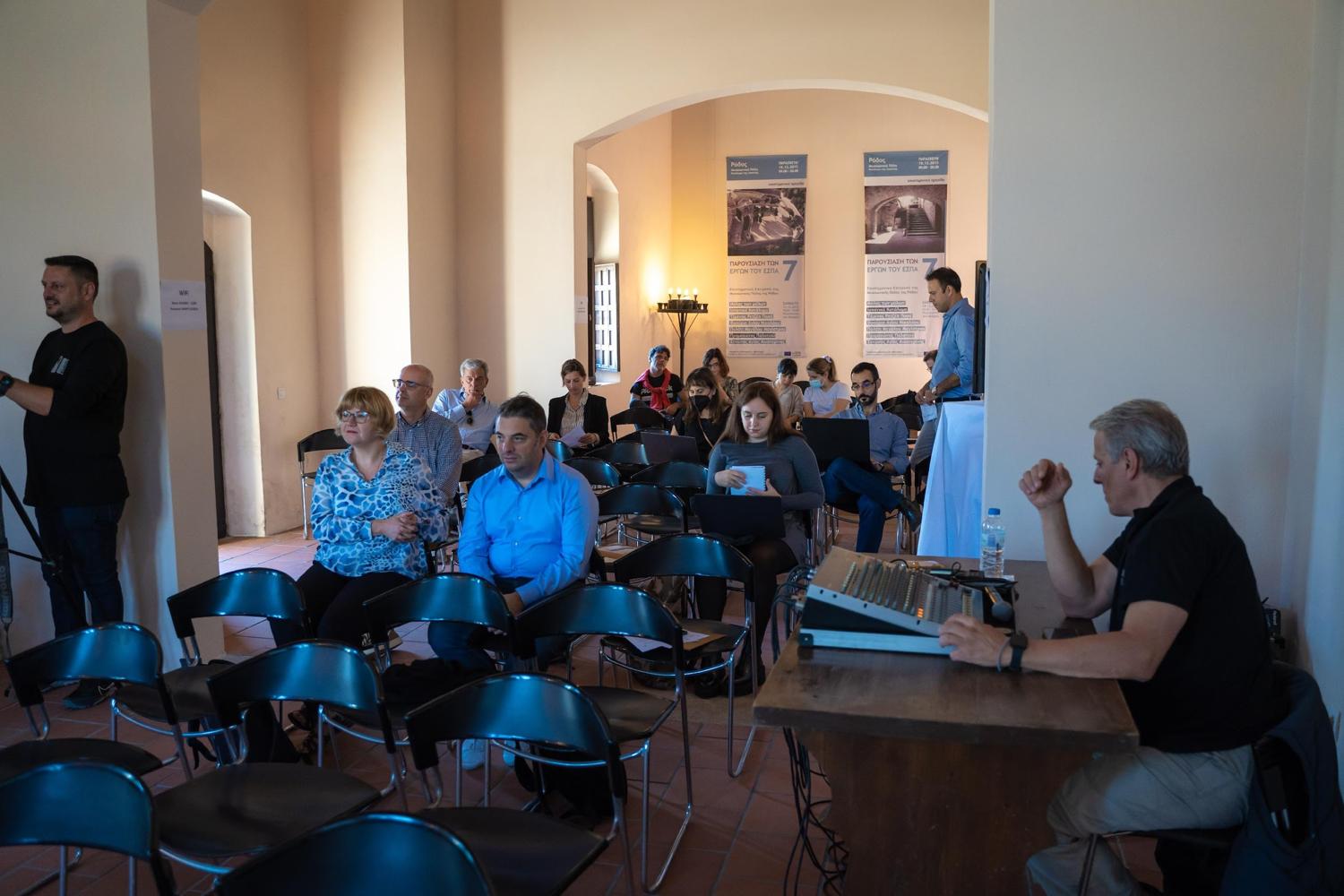
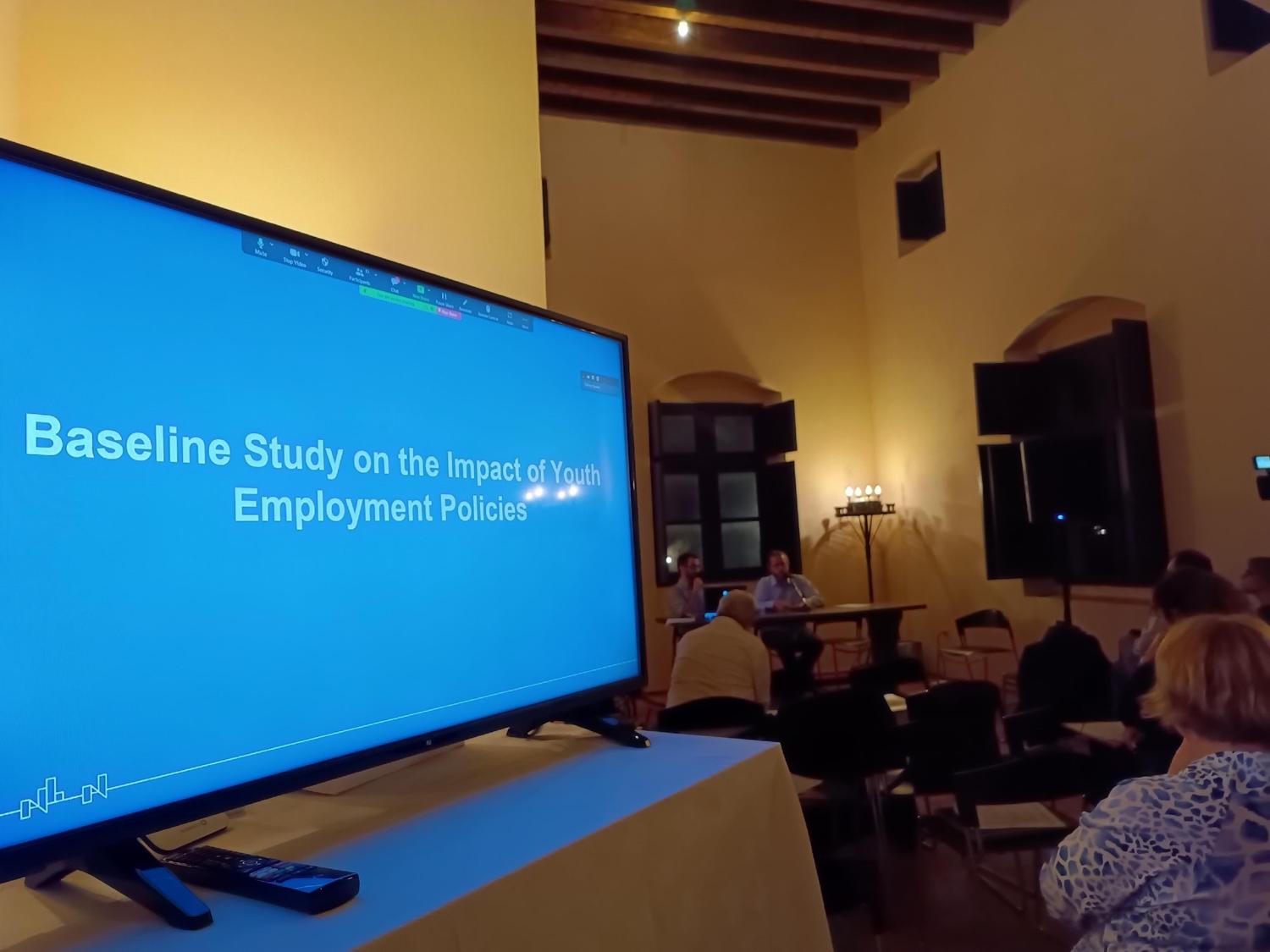
17 Youth Employment Magazine
Success stories
Let’s NEET Together #6!
so far, more than 300 participants, over 50 institutions and organizations around Europe, as well as 25 projects presented as best practice examples.
Adding more value from year to year, 50 more participants have joined us in this journey, on the 11th of October 2022, along 3 speakers from Hungary, Belgium and Romania, who’ve shared their expertise on how to support young NEETs on self-employment and entrepreneurship. The event was opened and moderated by Mr. Petru-Vasile Gafiuc, Bucovina Institute’s president, who presented the agenda, the speakers and the relevance of the webinar’s topic nowadays, along Ms. Alina Adomnicăi – communication manager within the institute.
In the same order of their presentations, we would like to introduce you to the 3 speakers who’ve accepted the invitation to be part of our mission:
For the 3rd year in a row, Bucovina Institute – lead partner within the 058SEPAL Project (Supporting Employment Platform through Apprenticeship Learning), has managed to successfully organize the 6th webinar under the series ”Let’s NEET together!”.
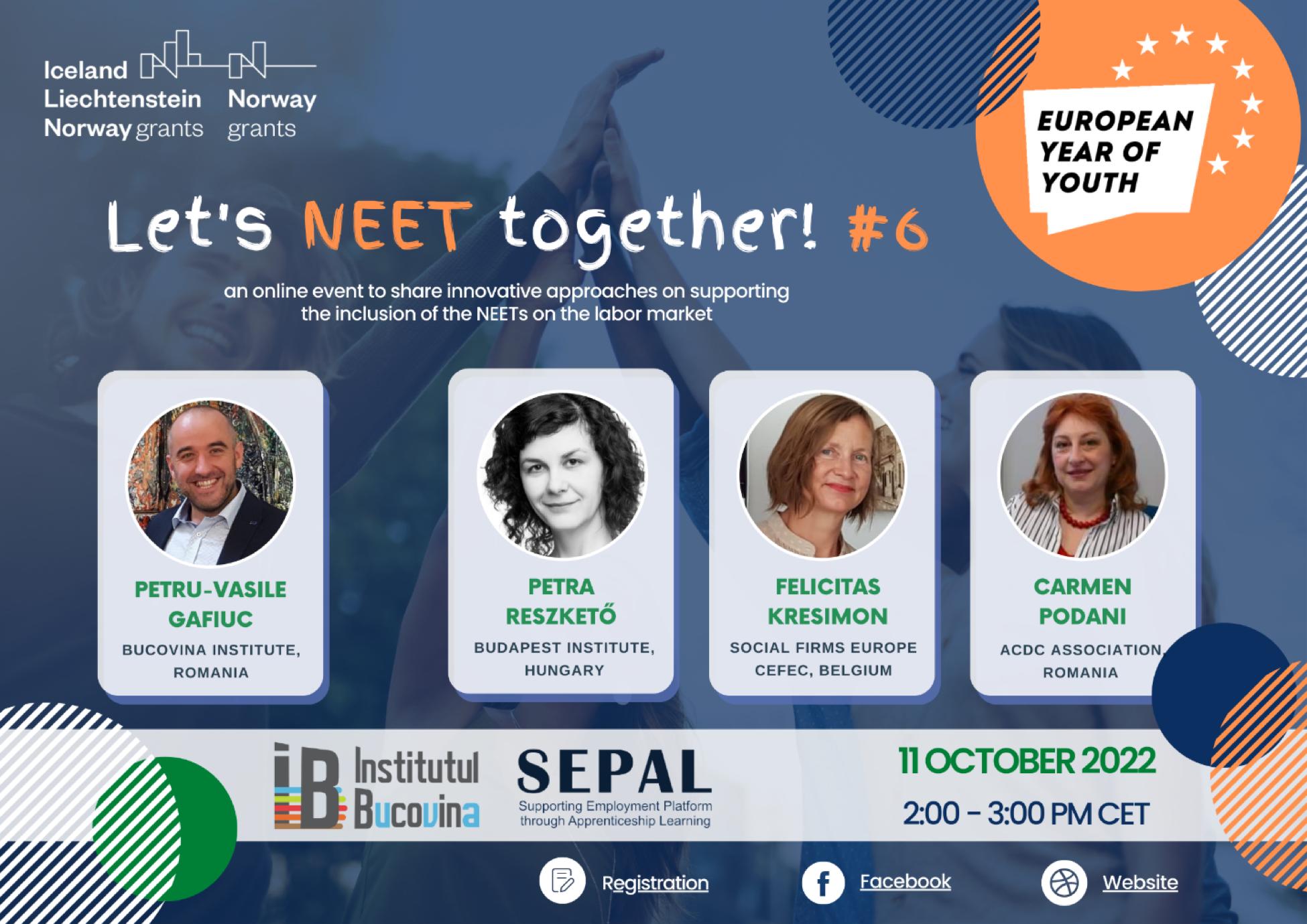
Started as a small online event to share innovative approaches on supporting the inclusion of the NEETs on the labor market, the series has rapidly gained popularity among specialists working in this field, reuniting
• Ms. Petra Edina Reszkető is co-founder and senior researcher at the Budapest Institute and lecturer at the Budapest Corvinus University. Her research focuses on the development of the business environment, promoting inclusive entrepreneurship (with special regard to youth, women, and ethnic minorities), and measuring government efficiency and transparency. For „Let’s NEET Together #6”, Ms. Petra’s presentation has focused on inclusive entrepreneurship – targeting youth, designing good incentives, covering topics such as EU 2020 agenda, policies, understanding the needs of young NEETs, as well as market entry, networking and follow-up services;
18
Youth Employment Magazine
• Since 2009, Ms. Felicitas Kresimon has been chairman of the board of Duemilauno Agenzia Sociale and since 2021 vicechairman, a social cooperative managing health, social and education services and services of job placement. In August 2021, after 2 years of presidency in SFE CEFEC, and a period as CEFEC development manager, she has been nominated as general secretary, working closely inside the management group with the special mandate of networking on EU level and enhancing CEFEC activities inside EU institutions. As partner within the Erasmus+ “M-Learn – Mentoring for Social Change and Life-Long Learning” project, she presented this initiative as a best practice example, which is aimed at allowing adult educators, teachers, tutors, mentors and entrepreneurs from 6 different countries, to exchange good practices ranging from using mentoring for community development and social inclusion of vulnerable groups;
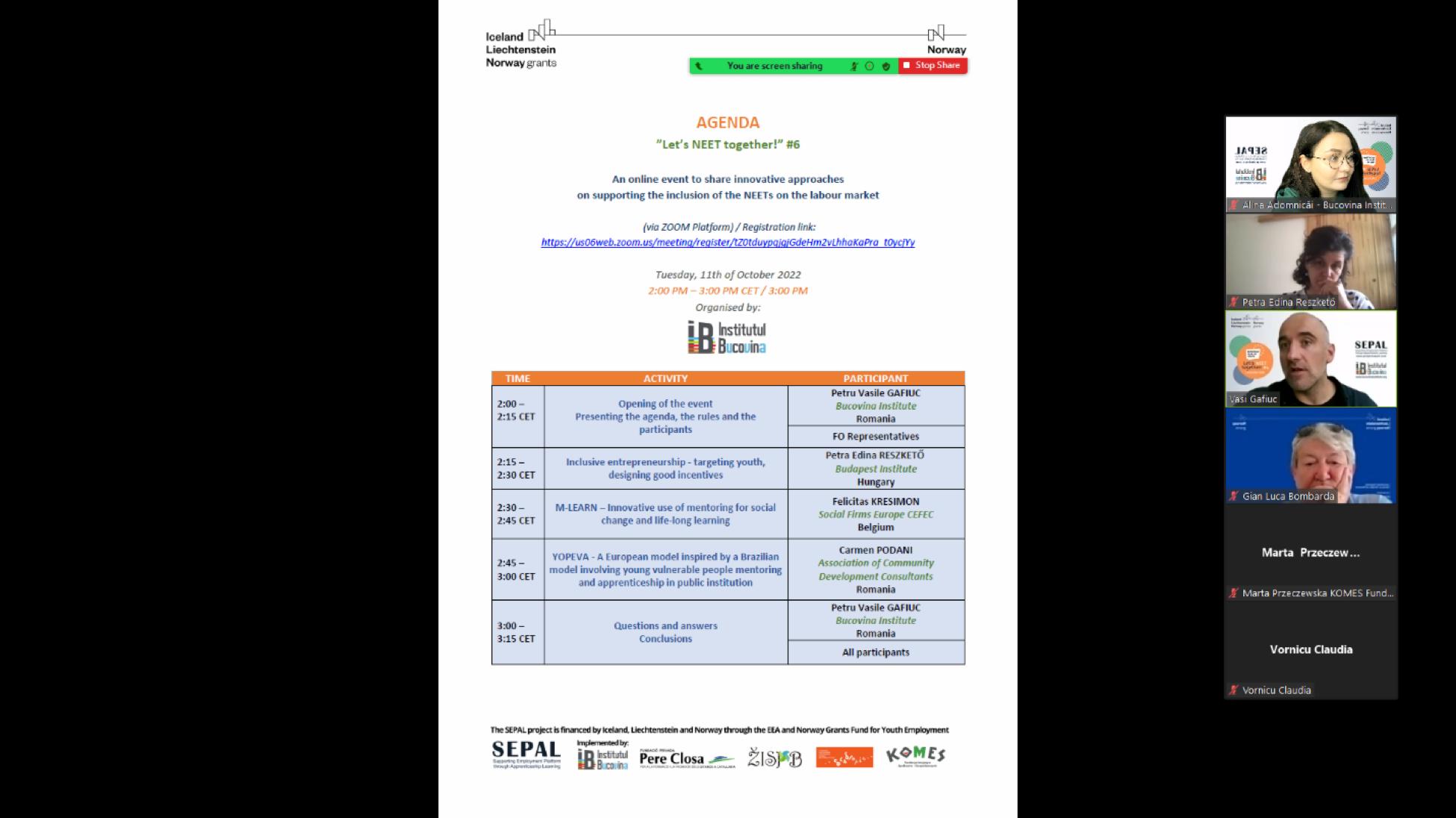
• Ms. Carmen Podani is a water engineer, holding an MBA from Kennesaw University in Atlanta, USA, with more than 30-years experience in international consulting industry. She worked as project director and consultant in projects funded by EU, USAID, World Bank, British Council. On the 11th of October, she promoted the Erasmus+ project “YOPEVA – Young People with Values”, talking about a EU model inspired by a Brazilian youth employment model. The aim of the project is to elaborate an European training program for young vulnerable people, out of the educational and labor structures, providing them with a solid value system, the adequate skills and competences to become integrated into the labor market or to re-join the standard educational path.
Present to learn from these experiences and models, “Let’s NEET Together #6” has gathered participants from 8 european countries (Belgium, Greece, Hungary, Italy, Lithuania, Poland, Romania, and Spain), such as teachers, professors, vocational counselors, researchers, journalists, directors and managers. Moreover, in the opening of the event, Gian Luca Bombarda – Fund Director, has congratulated partners on the extension of SEPAL project.
All in all, the series has once again turned out to be a success, promoting best practices aimed at helping young NEETs explore the employability path, through mentoring and EU policies designed for their benefit. Each year, the event is bringing us one step closer to solving the current labor market issues, by sharing innovative models that replicated, could make a real difference in today’s world.
Project SEPAL
19 Youth Employment Magazine
YENESIS Award
their participation in European programmes. The European Network for Innovation for Inclusion Awards are held annually, and they have been running for 6 years.
We are proud to have received the award as a recognition of the continuous work we do on helping young people in islands enter the green jobs market. On August 2022 the YENESIS project was granted additional and YENESIS 2.0 will continue to run for the next 14 months, helping young people in islands on their journey towards sustainable employment.
On Thursday, November 3rd, the YENESIS project received the finalist award under the category of Good Practices for Inclusive Entrepreneurship of the European Network for Innovation for Inclusion.
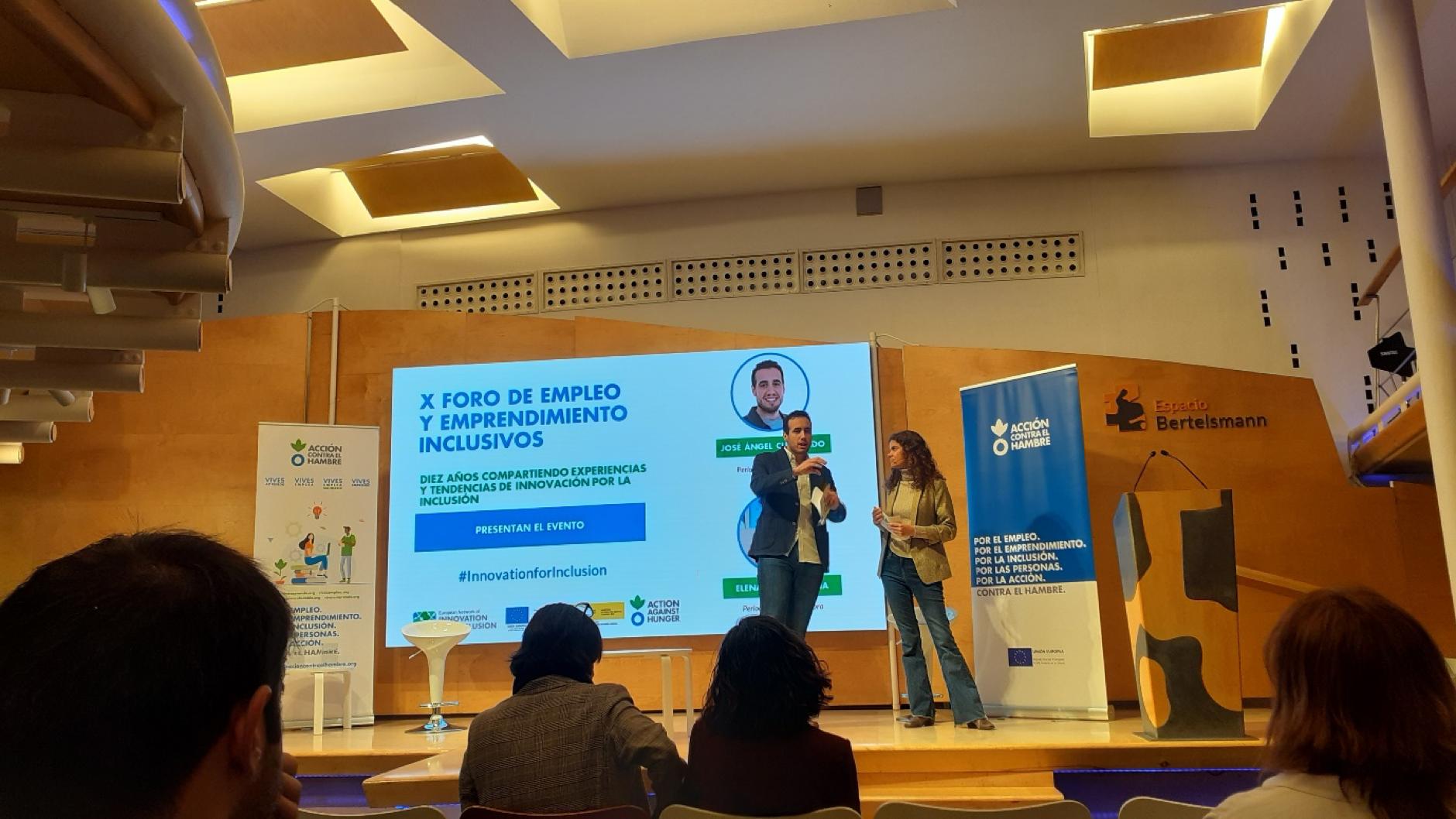
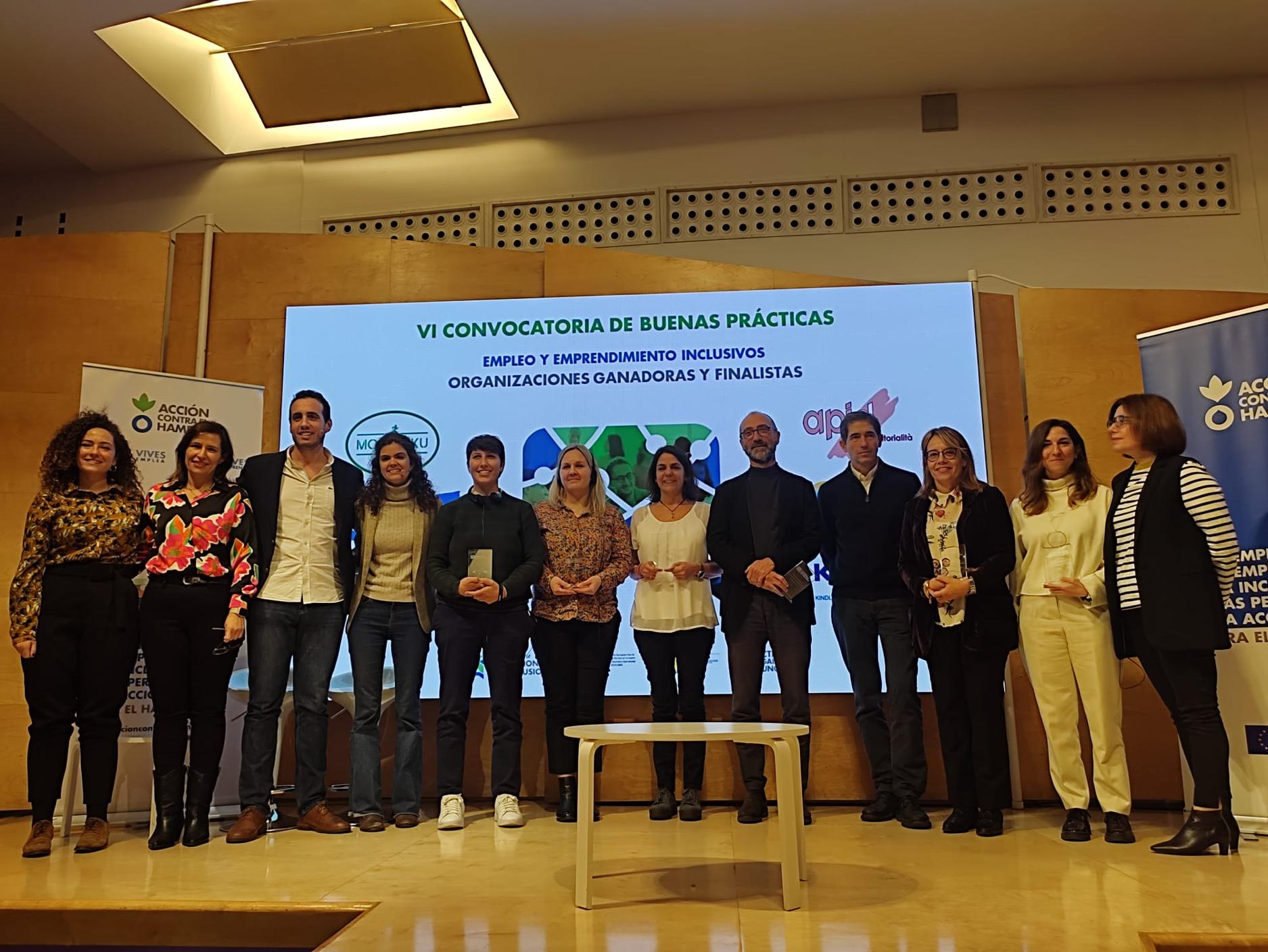
The finalists for this award are projects that aim for the socio-labour inclusion of disadvantaged groups by:
• Answering new challenges, using new methodologies and approaches
• Transforming difficult realities into opportunities Initiating social change…
The applications are measured by their Inspiration, Impact and Inclusion.
The European Network’s for Innovation for Inclusion work aims to help different organisations to develop successful European employment and entrepreneurship projects through the exchange of good practices and
20
Youth Employment Magazine
Project YENESIS
Garlic as a bridge between generations - the story of a young farmer from the village of Dolni Rakovets
Vladi. "Documents are constantly late, deadlines are missed, the paperwork is serious. Then comes the non-stop work in the field." During the first year, he works almost alone, and the lands he cultivates are scattered in several places in the village, and transportation proves to be a serious challenge. The harvest is a fact even then - there is garlic, but no onions, which the family had also planted. "It was difficult, but we motivated ourselves even more and didn't even think about giving up.” Vladi and his parents had no experience in farming when they started. His parents grew fruit trees in Spain, but for a short time, and his grandparents produced fruit and vegetables for their own needs.
The key to success here is the collective experience.
He is Vladimir Georgiev, and although he is only in his early twenties, he already has his own business in the village, and his ideas for expanding the family farm are endless. He is part of the new wave of daredevils who, while still very young, decide to try to create something of their own far from the big city and earn through hard work and a lot of enthusiasm for success.
Garlic has been a long-standing livelihood of the people of Dolni Rakovets. A large part of the fields have been planted mainly with garlic for years, as in the past every household grew it for its own needs, as well as for sale. The grandmothers of the village are on hand for advice - when is the time to plant and when to take out, what are the intricacies. Today, Vladi's family already knows the answers to these questions, because this knowledge has been passed down to them from previous generations. "It is important to catch the moisture at the beginning, and the easiest way to know that the garlic is ready is when the leaves themselves "lie down" on the ground," says the young boy.
While still in high school, Vladi and his sister decided that they wanted to have their own business, in which their whole family would participate. Their parents worked in Spain and this further motivates the young people to create conditions for their mother and father to return to Bulgaria. Their home village in Radomir municipality has a long history of growing and producing garlic, which motivated them to focus on this culture.
"Things turned out to be much more complicated than we imagined," says
His views, as well as those of his sister, differ greatly from those of the elders. They try to introduce new and different methods of promoting their work. They want to use modern technology, but also rely on manual labor, because it gives additional value to the whole process. Their garlic is part of the Slow Food Bulgaria network, which collects valuable authentic Bulgarian products, so together with their colleagues, they participate in a number of farmers' markets in the country and promote their product and activity.

21
Youth Employment Magazine
The combination of youthful enthusiasm and innovation with experience and tradition make the family a great team. Vladi says that he makes a number of presentations of his ideas to his parents until they gradually start to approve the idea.
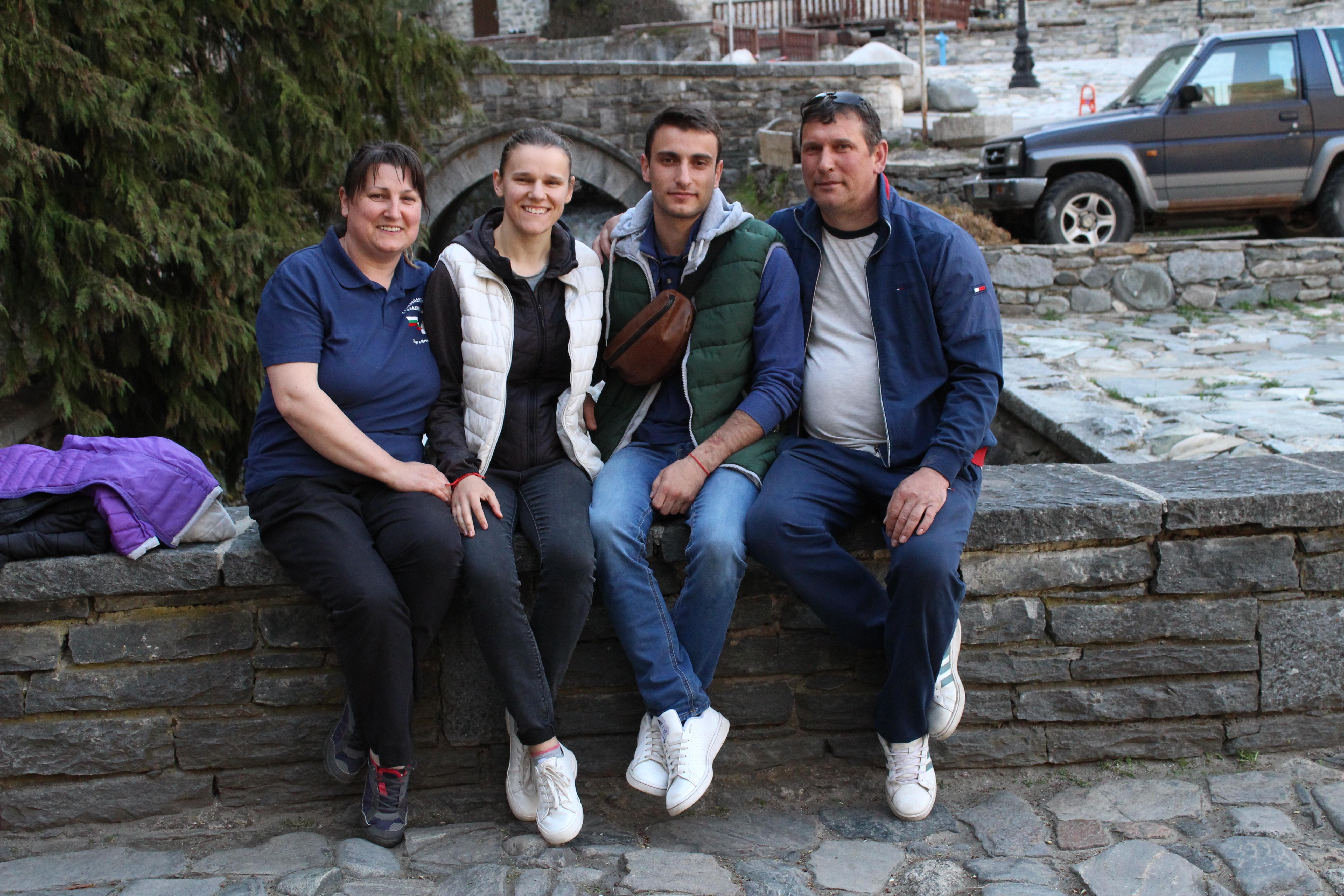
"The fact that we will all be in this endeavor contributed the most to our motivation," says the young man.
He deeply believes that he is yet to develop his agricultural livelihood, modernize the technique and working methods and reach even more distant markets, because he is convinced of the qualities of their product. He intends to start producing black garlic and promote it in Bulgariaundoubtedly it is something unknown and exotic, and it turns out to be many times healthier and has much more benefits than the ordinary garlic we know.
sector and to live in a village or in the countryside. However, Vladi breaks this stigma, because for him the village is a pleasant and easily accessible place. "Our fertile lands, our famous garlic and mineral water will bring many tourists and the name Dolni Rakovec will become very popular."
He relies on the support of his friends, who help him when needed. He also observes that more and more of his peers are showing interest in farming and hopes that this trend will continue. He is not interested in the general opinion, because according to him, once you have created a plan and believe in it, you just have to work, and you can develop both in the big city and in the countryside.
"It's more pleasant in the countryside for almost every person. The clean and fresh air, the freedom, the peace you have. You can't get those things in the big city, it's a pretty nice perk. The first step might be for people to gradually return to the village to live there. The rest will gradually happen."
Vladi advises his peers to never give up on their dreams, but to pursue them, whatever they may be. According to him, hard work, persistence and faith are very important, and "sooner or later, success comes"!
And why agriculture in the village? What will people say?
In Bulgaria, it is still considered unprestigious to work in the agricultural
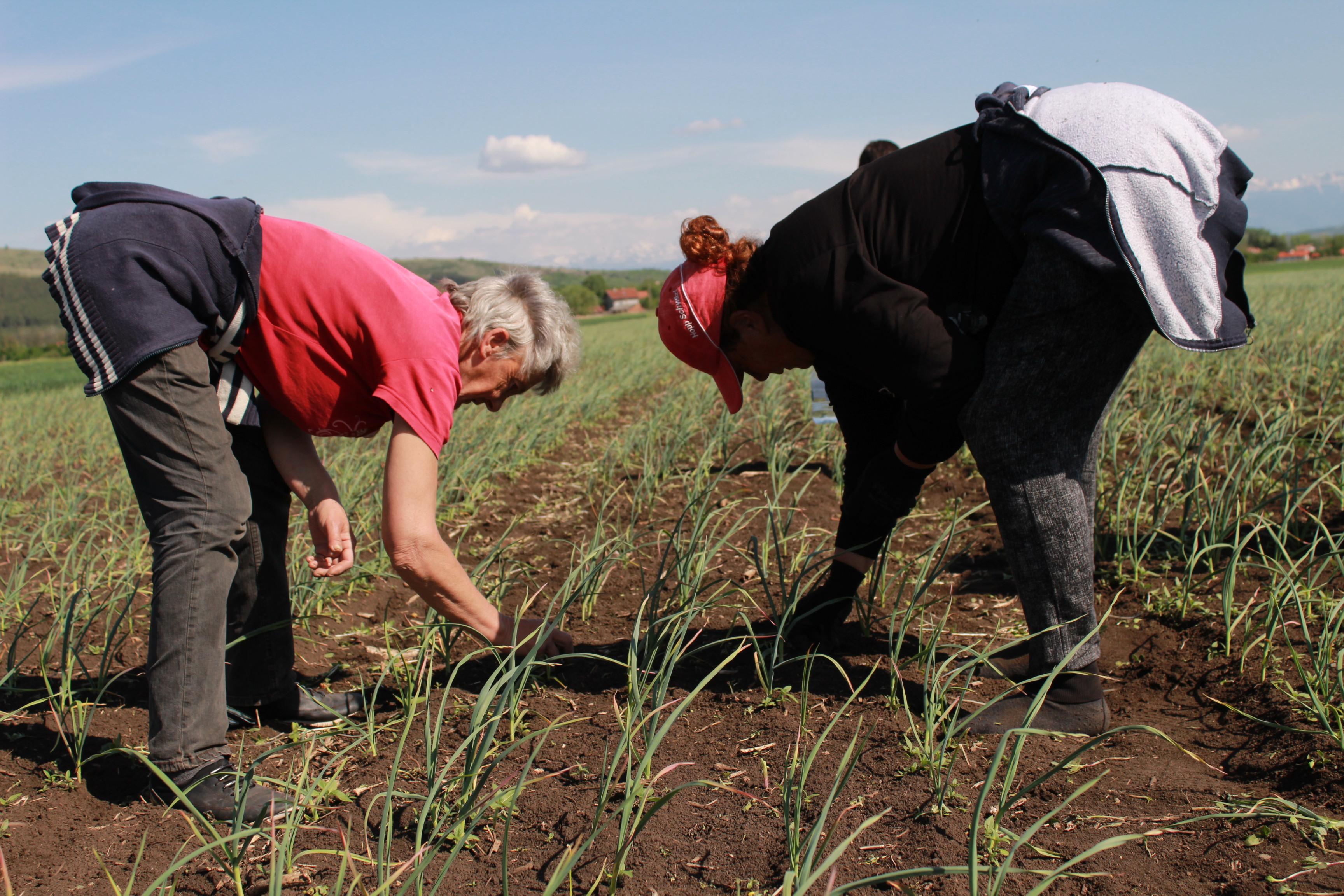
22
Youth Employment Magazine
Project RAISE Youth
Success story David Garrido: from being part of one of Casarrubuelos’ first trainings to be hired as gardener
also returned to visit our DEMO Center with his new fellow gardeners; he was pleasantly surprised to find a much more structured and professional demo centre, where numerous courses for young people, community activities, crop exchanges, free distributions of worm humus, etc. have already taken place, and now also with 14 urban gardens that give the space an important vegetable richness.
He is very proud to have also been part of our development and improvement process and wanted to convey this fact to us
David Garrido, was one of the unemployed young people who received one of the first trainings in composting and vermiculture that was given in the RAISE DEMO Center of Casarrubuelos in winter 2020. He was also part at that time of the group of young volunteers who contributed to the initial cleaning and conditioning of the RAISE DEMO Center of Vermiculture Casarrubuelos.
It witnessed, therefore, our beginnings as a demonstration centre in vermiculture and as a space for recycling organic waste through composting and vermicomposting; it also witnessed our beginnings as a training space for unemployed young people in composting, vermicomposting and gardening.
David has recently been hired as a gardener by the Casarrubuelos Town Council and continues his training in gardening and composting. He has

23
Youth Employment Magazine
Project RAISE Youth
‘NEET’ the documentary film: Official Premiere
Finding a job is only the tip of the iceberg. The interviews reveal, that, in reality, the psycho-social support and personal empowerment is the fundamental and necessary step towards their re-activation in the labour market.
Through the lens of Tom Mamakos, the personal stories of selected beneficiaries are followed before, during and after their involvement with the project, and corroborated through the interviews of the responsible Key Account Managers and the respective employers.
The film that closed both the 2-days event and symbolically the first period of YOUTHShare, was enthusiastically met by the audience.
See the documentary here: https://youtu.be/-incpc6thgo
After its exclusive preview, the time for the Official Premiere has arrived! The documentary film ‘NEET’, an output of the YOUTHShare project premiered on Saturday November 5th, the last day of the 2-days event in Rhodes, Greece.
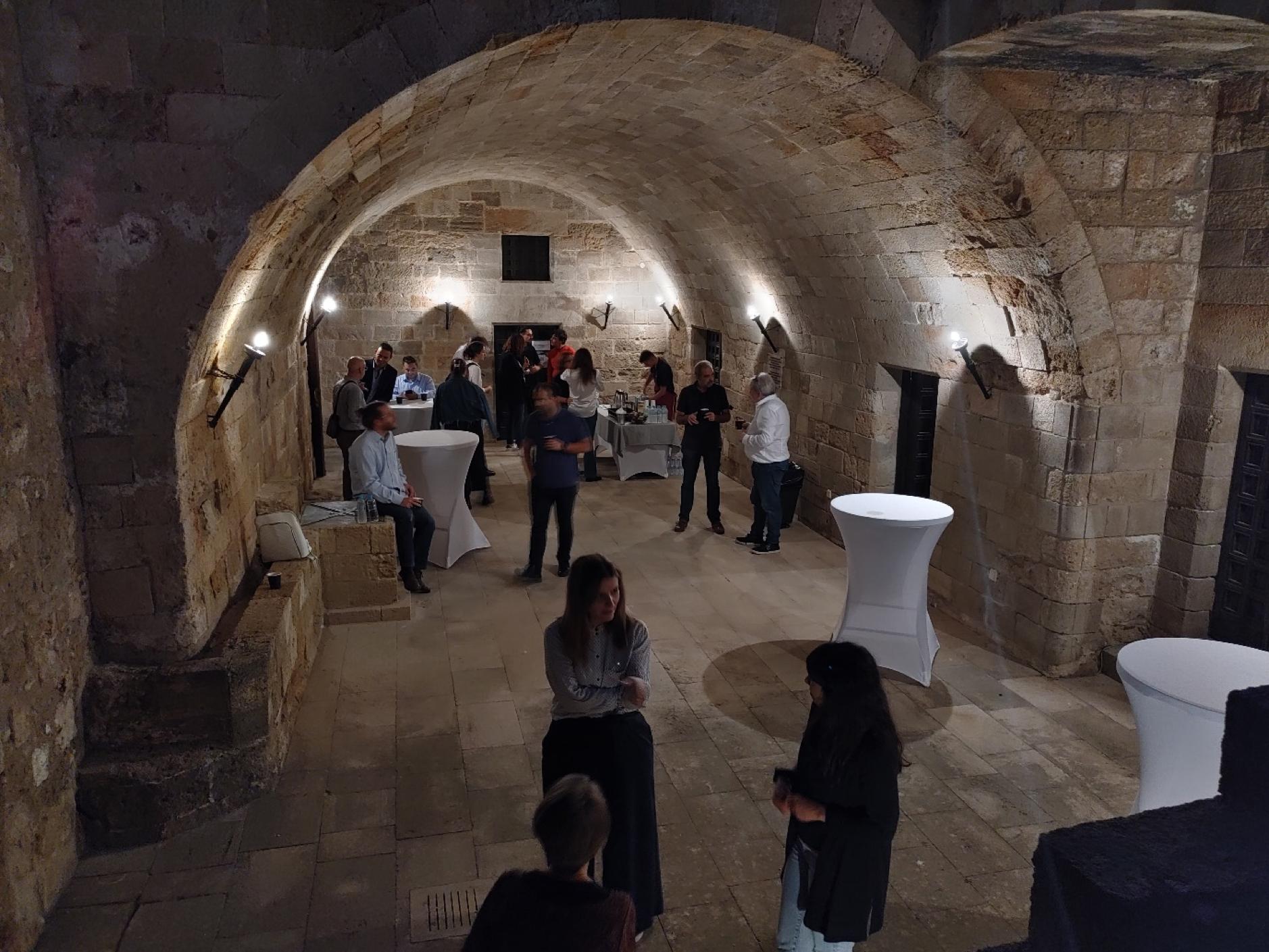
After two days of thought-provoking interaction during the social intervention and the research leg of the event, the audience, including academics, researchers, social workers, local authorities and other interested attendees, had the opportunity to unwind and watch for the first time the documentary film ‘NEET’.
Concluded at the end of August and already presented in exclusive preview during the 12th annual conference of IIPPE in Bologna on September 8th, the film made its official and open to the public premiere.
56 minutes of interviews with beneficiary NEETs and employers, unravel their fears, hopes and aspirations from the labour market in coastal and insular regions of Greece, Cyprus, Italy and Spain.
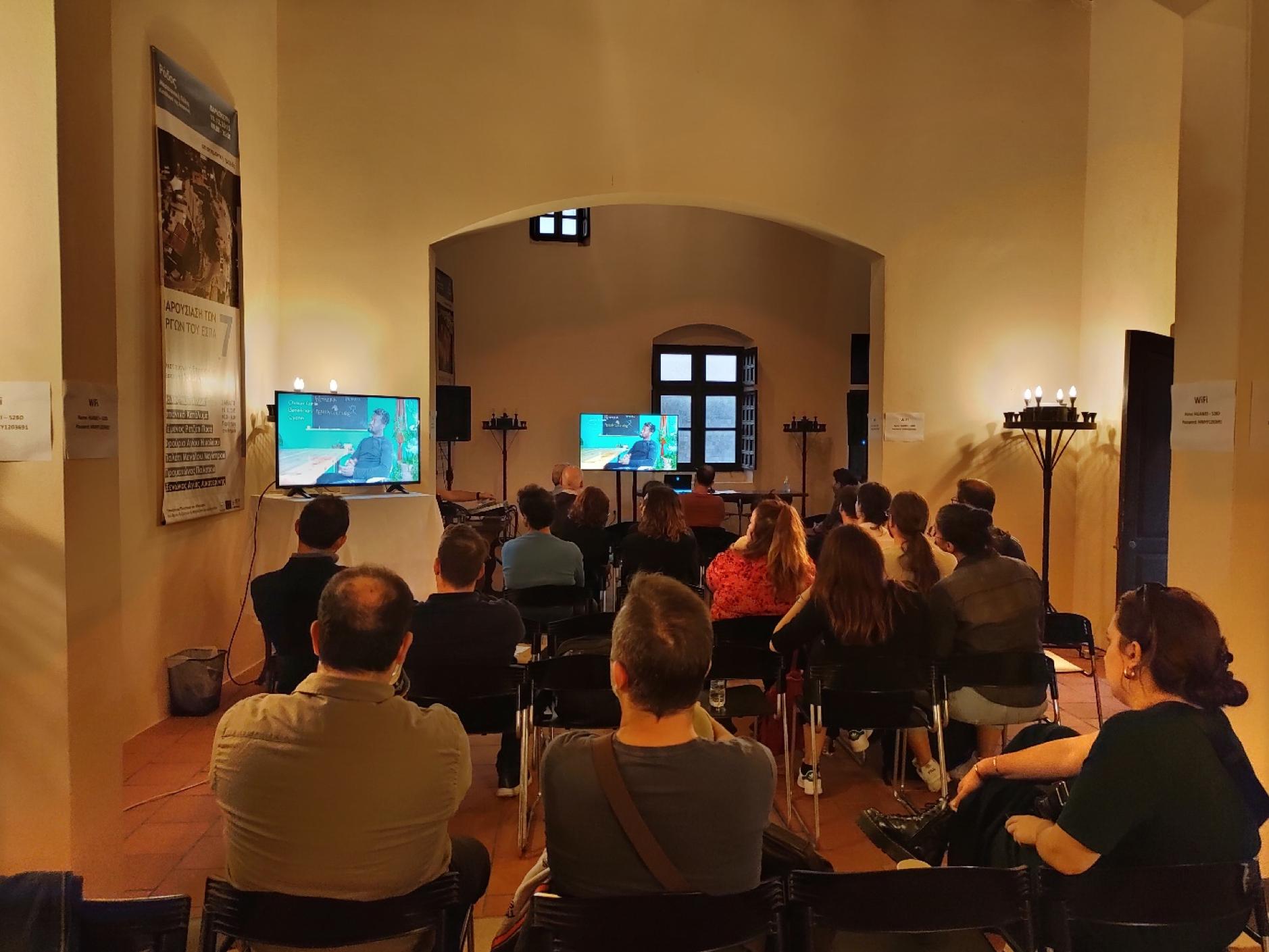
24
Youth Employment Magazine
Project YOUTHShare
Women4IT – Shaping the future of digital


experience and plans for a career in tech. We will also review how the EU currently performs in terms of fostering gender diversity in STEM and discuss the next steps in boosting the impact of initiatives like Women4IT».
«In an increasingly digitalised world, women continue to be underrepresented in STEM education and technology careers. Women4IT was created to change that».

This is how the Project Women4IT, aiming at empowering young women across Europe to become part of the digital economy presented its event, held in Brussels and online last 23rd of November,
By providing fully funded, individually tailored digital skills training that reflects current market needs, the Project has been working to equip women with a set of in-demand digital competencies and employability guidance, all to drive their career advancement and economic independence. In its pilot phase, the Project has retrained +900 women across Europe as programmers, data analysts and other ICT roles that are vital to reach our Digital Decade goals.
The upcoming event entitled Women4IT: Shaping the future of digital marks the end of our four-year project: «Together, we will look back at the project’s main achievements, good practices and lessons learnt, as well as hear first-hand from the Women4IT graduates about their
A video showing the results of this event, alongside the achievements of the Projects, thus including – among other best practices – the presence of European Commissioners especially from the DG EAC (such as Themis Christophidou | Director-General for Education, Youth, Sport and Culture of the European Commission and Dana Adriana Puia Morel | Coach, Trainer and Policy Expert, DG GROW, European Commission), is visible here: https://www.youtube.com/watch?v=GbvWOfkvJzk
More to come with the next Mags!
25
Project Women4IT Youth Employment Magazine
Youth Employment Online Magazine & Tirana European Youth Capital 2022 - The best moments of our cooperation
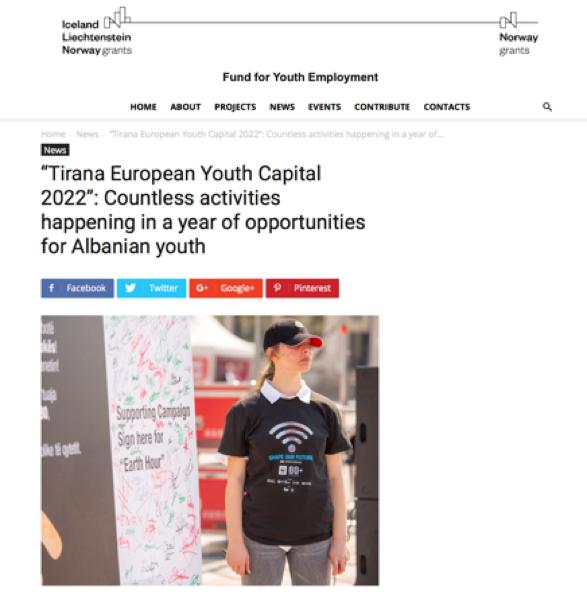


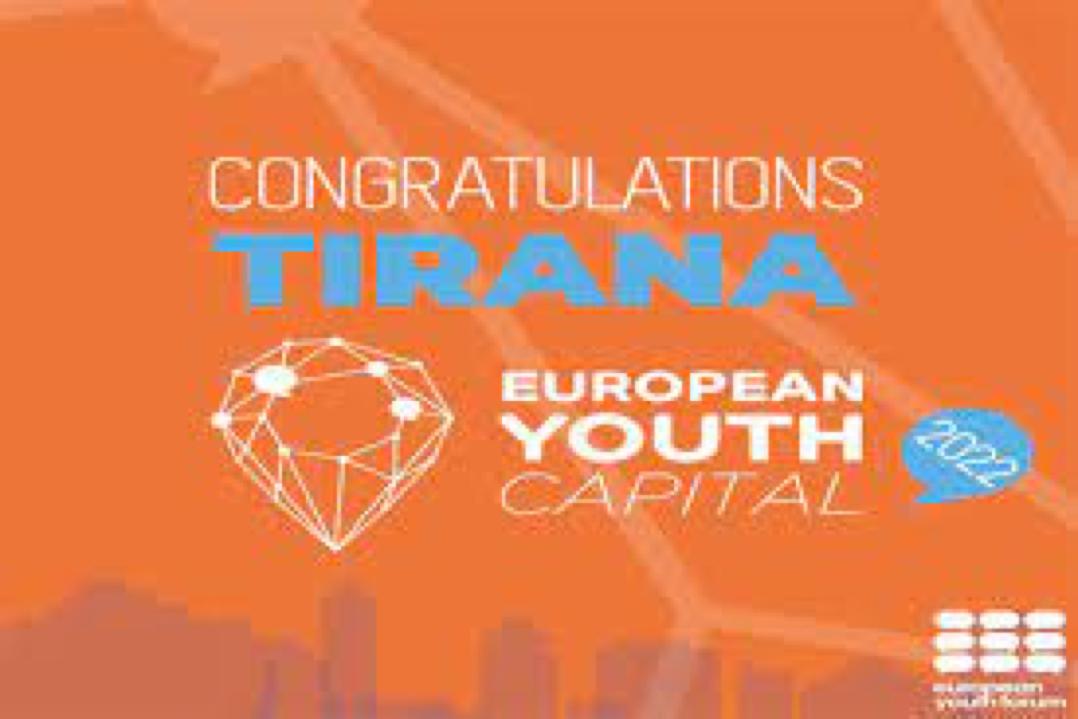
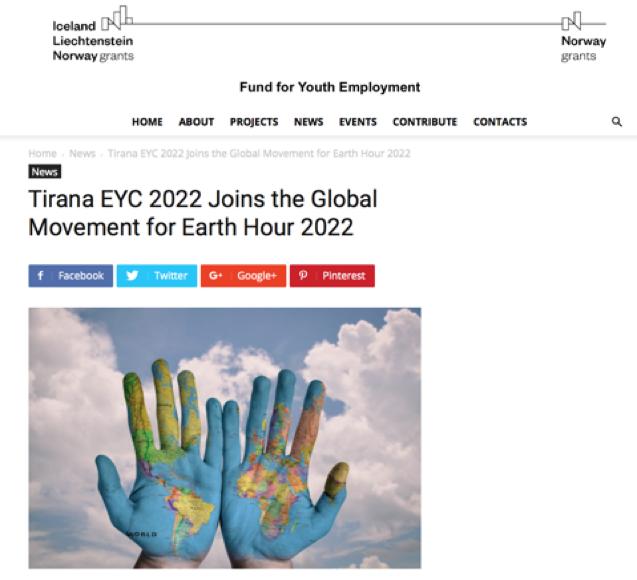
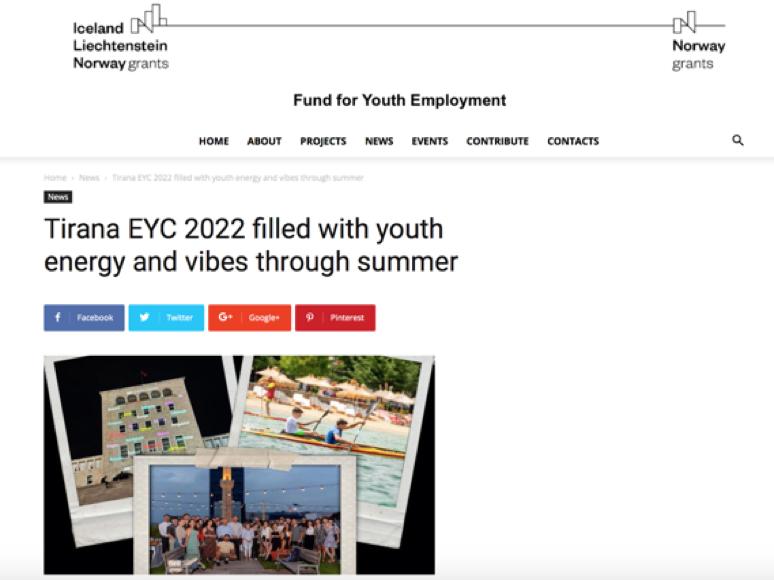
It was the beginning of 2022 when we welcomed Tirana, and therefore the National Youth Congress of Albania, on our pages. This is another demonstration of the Funds’ ability and interest in creating fruitful networks.
After all, what better place to talk about youth capitals, than our Mags (including sometimes also the Regional Cooperation)?
That is why we included their activities, their successes, their best practices achieved throughout all 2022.
Next year will be Poland’s turn, 2024 is for Ghent (Belgium) and, just some days ago, in Tirana with a great event, Ukraine with Lviv was the winner for 2025. The intention, and hope, is to continue this collaboration that started with Albania. Our Online Mags are, and want to be, special places where to showcase success stories.
Here, to thank again Tirana for having chosen us, some pictures retracing the most important moments we welcomed on our pages.
26
Youth Employment Magazine
The Editorial Team
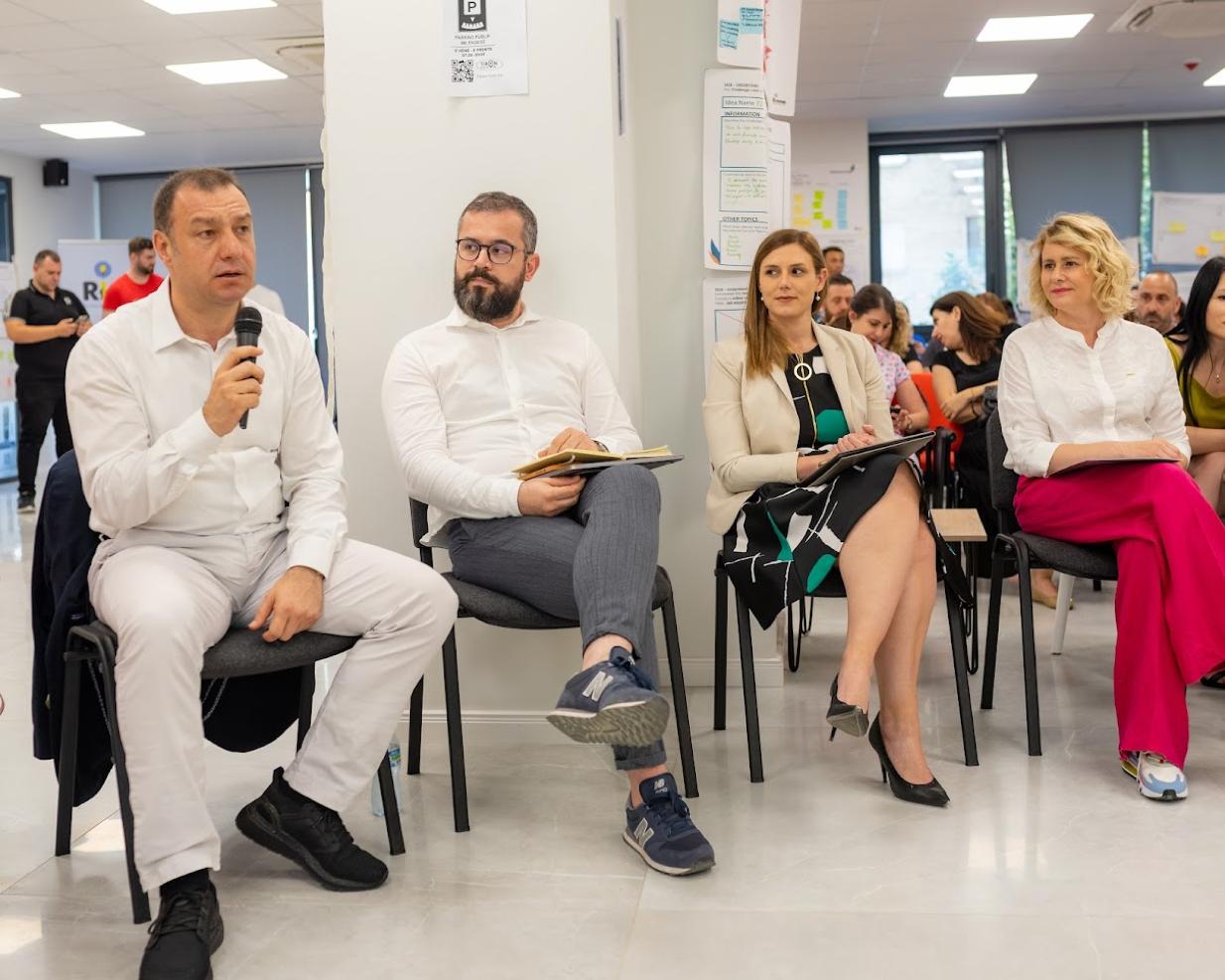
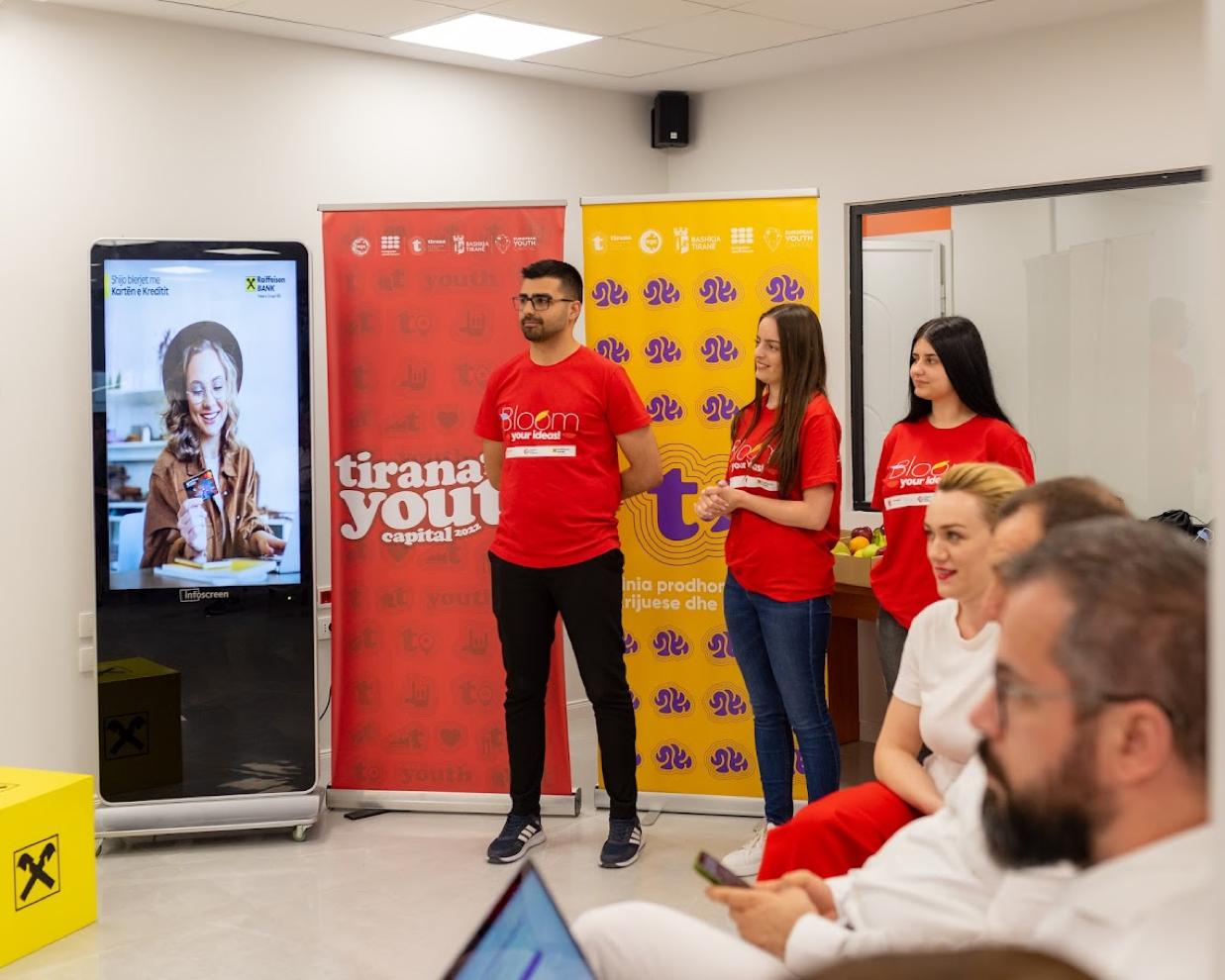
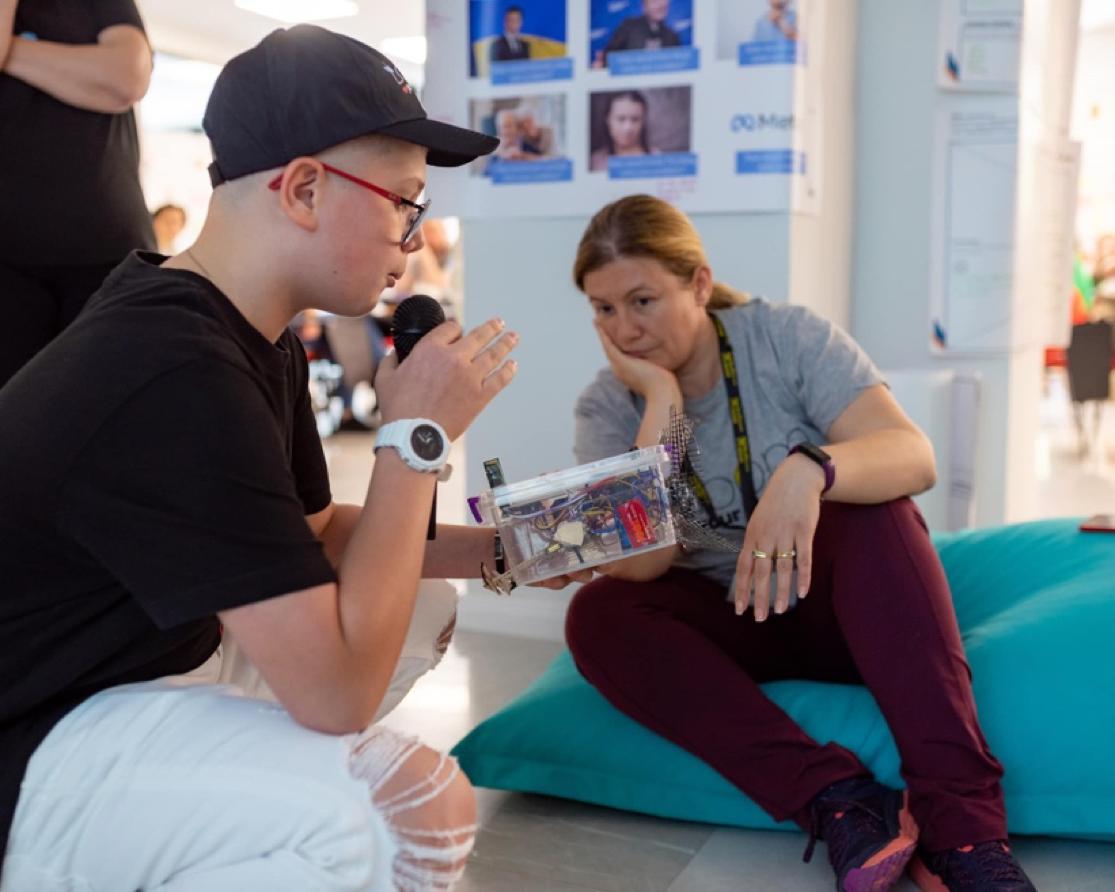

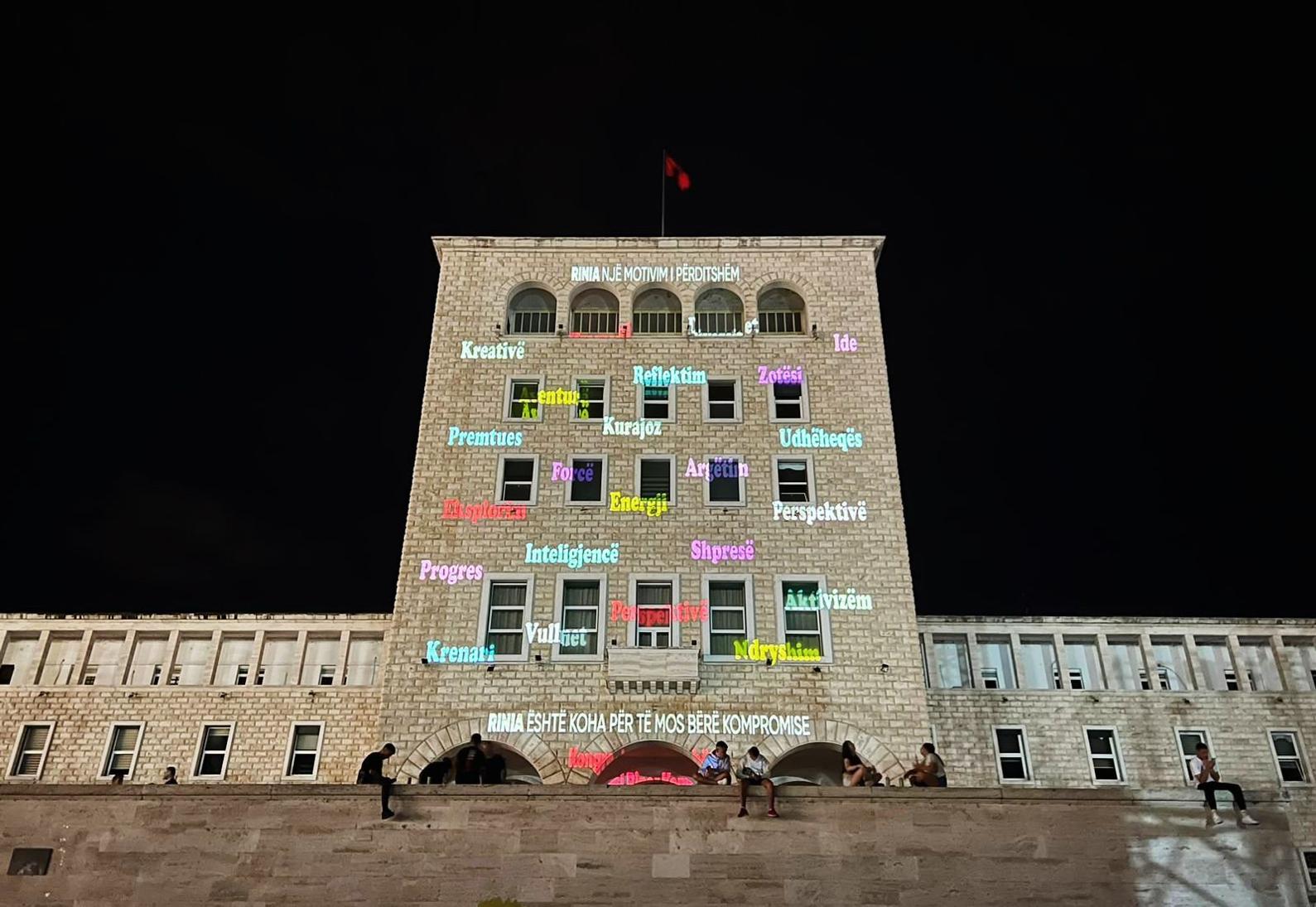

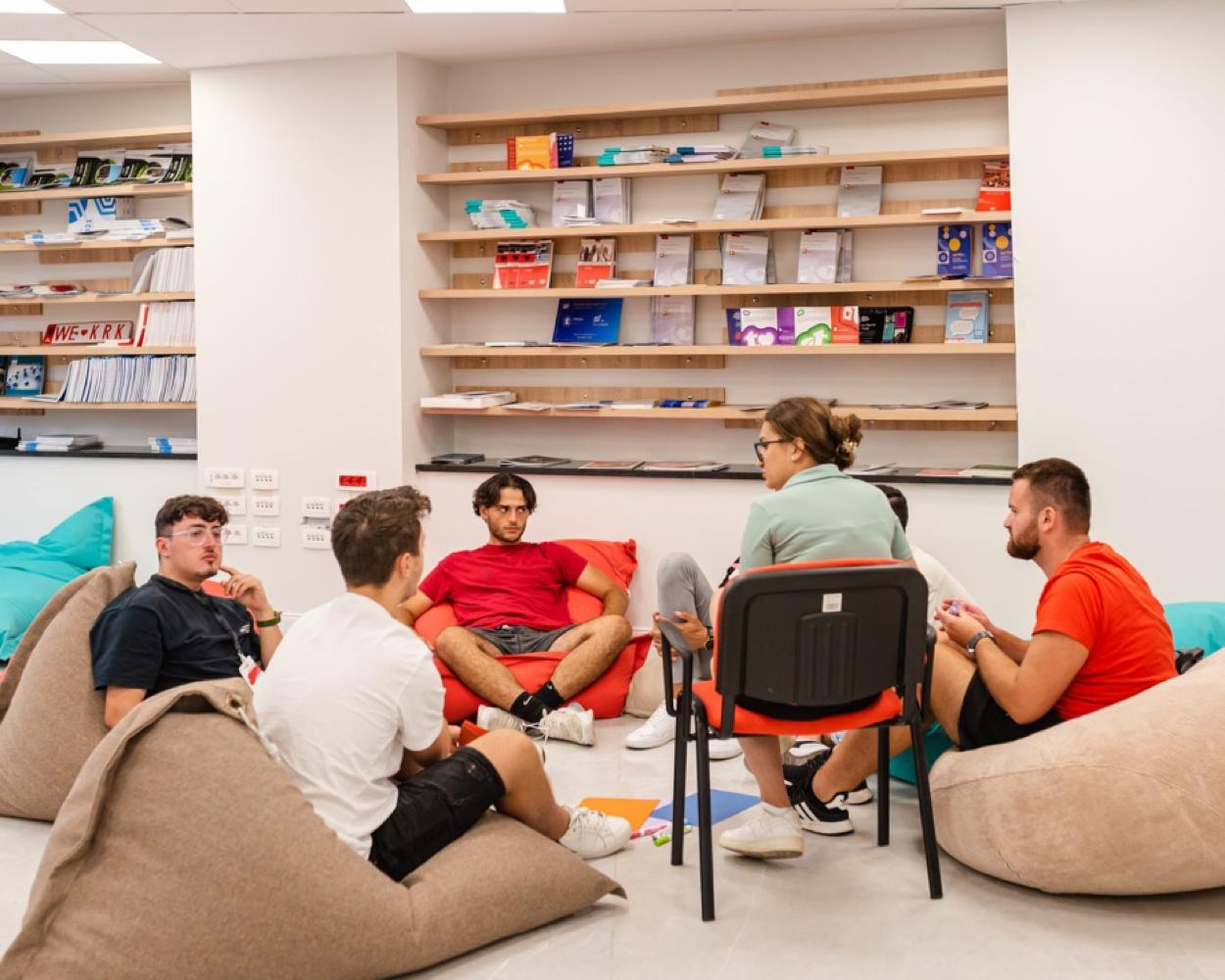
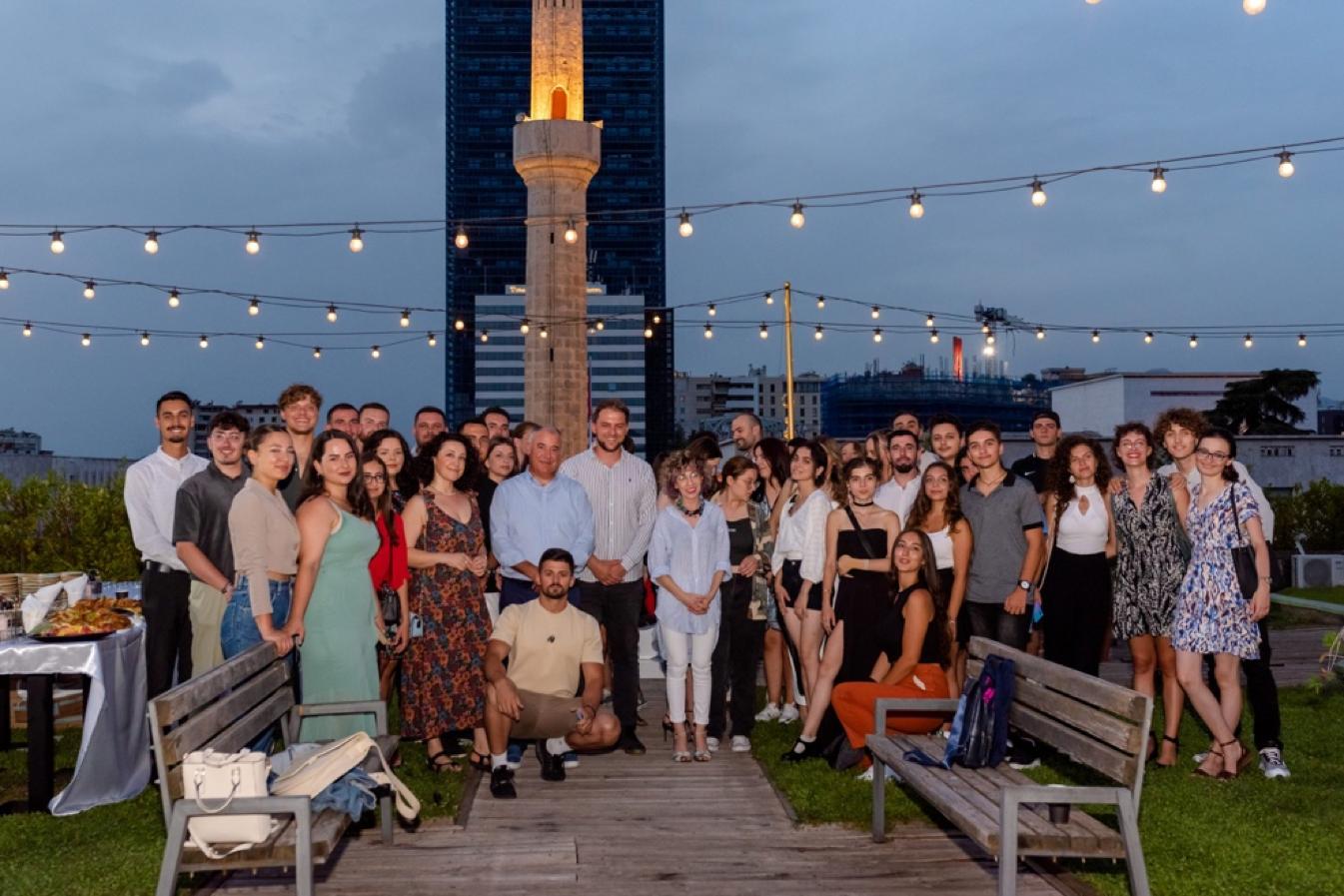
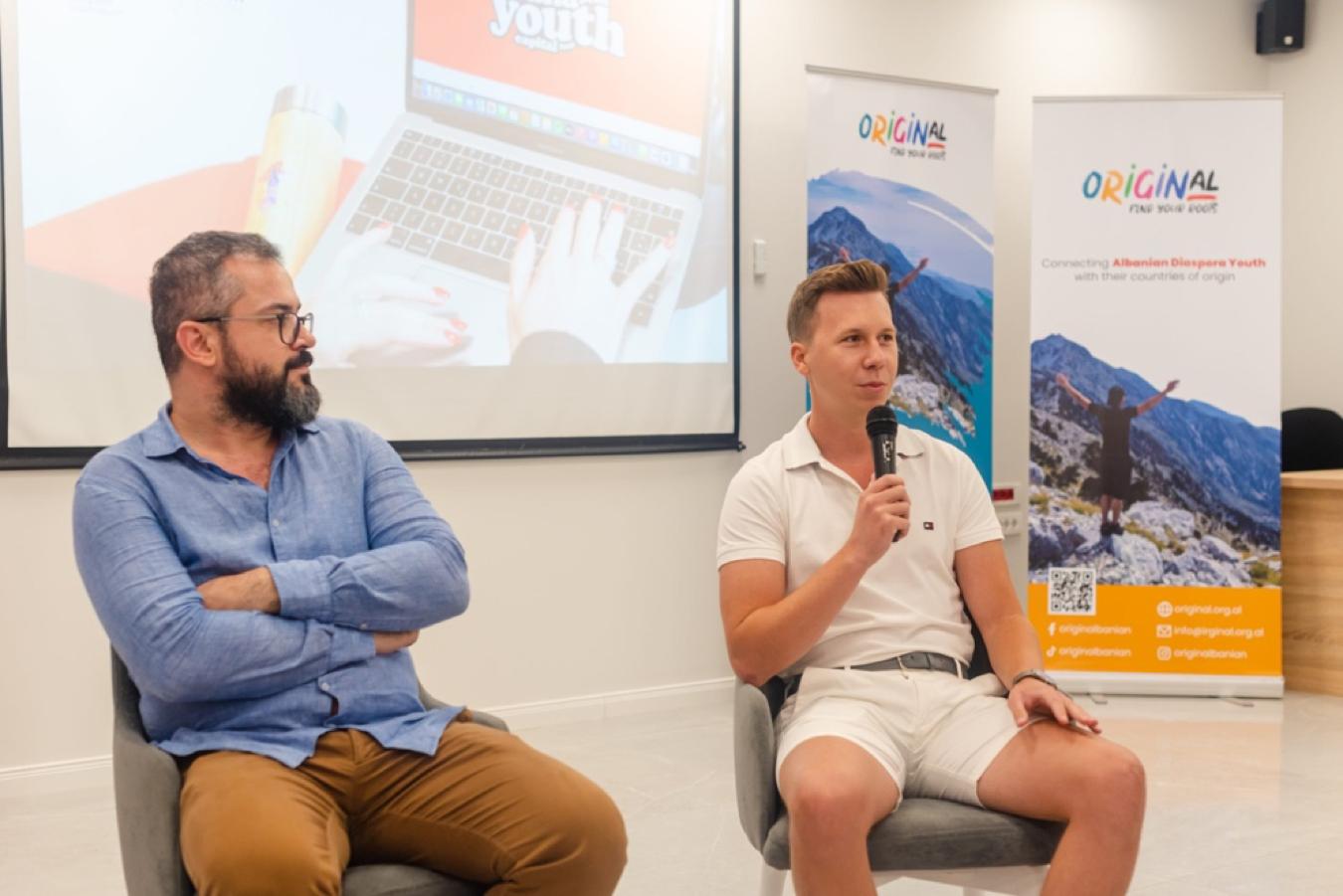
27 Youth Employment Magazine
Themes of the month:
Temporary work abroad: How could your Project support exchanges among the members of the YE Family?
Promoting the value of diversity and inclusion among young people in the labour market, especially those pertaining to race/ethnicity, gender and gender identity/ expression, religion, age, sexual orientation, socioeconomic class, and disability.
28 Youth Employment Magazine
Diversity and Inclusion for a Stronger Workplace
Cultural diversity is important because countries, workplaces, social groups and schools increasingly consist of various cultural, racial, and ethnic groups. Inclusion is the best way for us to learn from one another, and make the most of the benefits of such diversity. An inclusive labour market is a labour market that allows and encourages all people of working age to participate in paid work and provides a framework for their development.
Europe has been striving for many years to bring about a labour market that is more inclusive. Nonetheless we still see youth employment, particularly amongst vulnerable groups, as being low. Consequently more effort, policy and funding is being directed to ensure that young people can be integrated within the labour market.
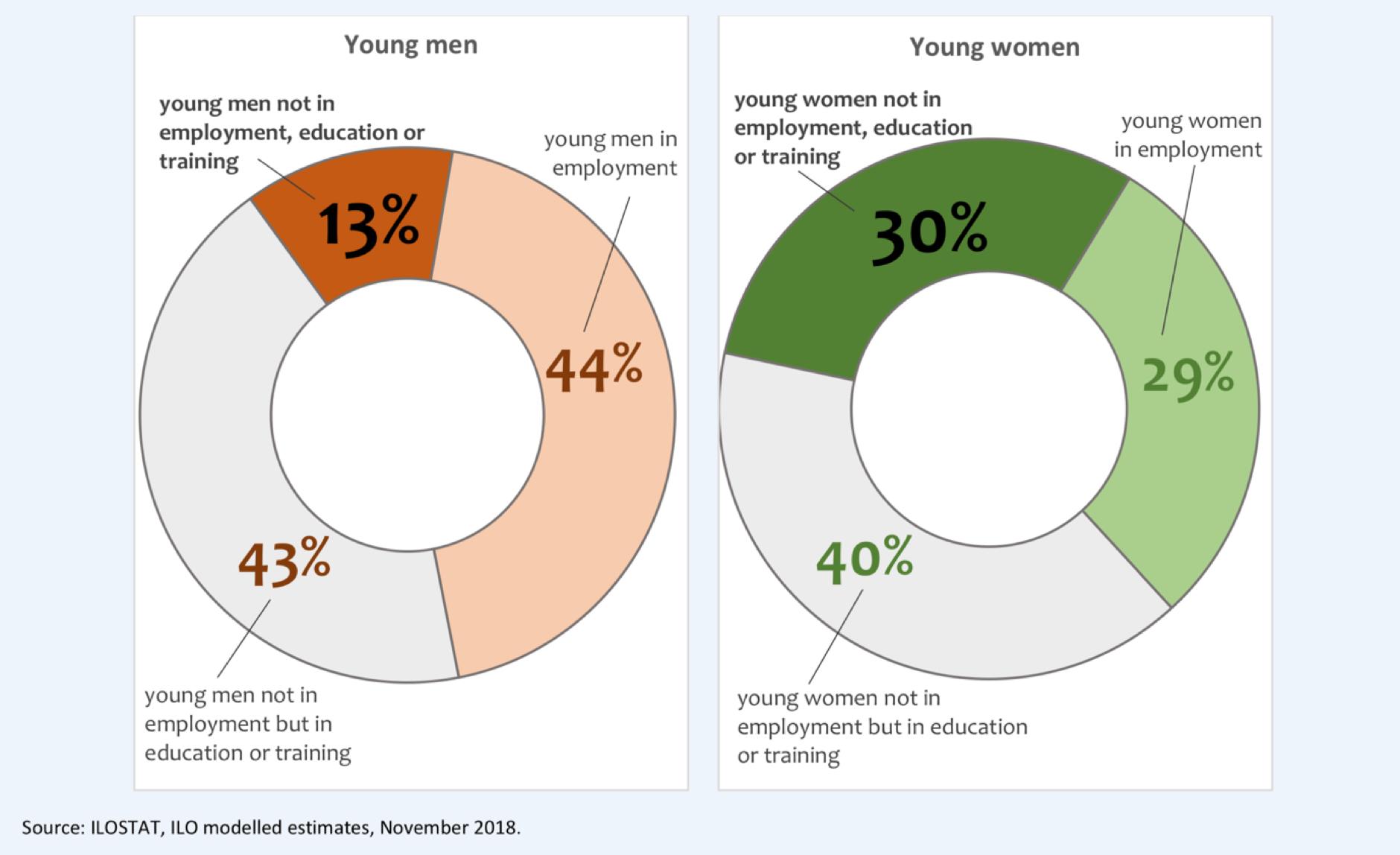
• Building resilient policy making approaches, the pandemic showed that governments can react fast to implement sweeping labour market, but it also exposed the inadequate labour market policies for supporting young people;
• Making policy making more participatory, effective policy listens to the needs of those it is meant to support;
• Using an integrated approach to develop holistic policies, this would include skilling, education, employment, welfare, housing etc; and
• Using emerging technology and big data to support and evaluate policy making and understand the labour market challenges.
In turn holistic polices would include youth policy structures that:
• Develop skills and invest in vocational training, improve skills matching, and encourage a more flexible education system;
• Provide proper and high quality guidance and mentorship to young people;
• Improve social safety nets for young people, this could take the form of a Universal Youth Credit;
• Use targeted fiscal policy during economic downturns and supporting those negatively impacted by technological innovation, research shows that supporting young people has a wider impact on the economy in general;
• Invest in high productivity sectors, such as AI and green jobs, which have the potential sustainable long term growth; and
• Improve the legal and regulatory protection of workers evolving in line with labour market changes.
A labour market that is more inclusive is a result of both institutional interventions and holistic policies. Within this perspective, institutional interventions would relate to:
These policies need to have specific considerations for NEETs, whereas they need to encompass the inclusion of all youths within the labour market, vulnerable youth groups need to have specific interventions. Hence these policy measures need to consider specific strategies for
29
Youth Employment Magazine
these vulnerable groups. This could related to reducing the relationship between early school leaving and NEET risk, whereby coaching and mentoring would be very important. Or alternatively health policy that would also consider improving rehabilitation opportunities or providing more job opportunities for young people with illnesses or impairments.
Diversity and inclusion have been themes, which within Europe, have been widely given consideration and importance. It is acknowledged that through diversity we achieve our strength. Nonetheless, the labour market still needs to achieve the flexibility and readiness to fully embrace diversity. This can be instigated with the right policy AND the proper implementation of such policy. The green transition and our strive to a more sustainable economy provided the right added impetus to achieve this.
Article written by Jobsplus in collaboration with Anna Maria Darmanin on behalf of Project Intercept.
Project Intercept
30
Youth Employment Magazine
The value of diversity in business
Diversity is not measured or reflected in numbers and KPIs, but in the culture of each organization.
The value of diversity and inclusion in business is multidimensional, as we can see by the proven benefits it offers. The reasons are many, however, if we wanted to emphasize the three most basic ones, we would limit ourselves to the following:
Active employee involvement: Working for a company that offers equal opportunities allows employees to feel a greater connection to the company and optimism about the prospects that offers.
Corporate Trust: The importance of having a culture that 'embraces' diversity and inclusion plays a vital role as it creates a tangible sense of trust. This contributes to the creation of conditions that favor innovation, creativity and diversity in an environment that allows employees to feel safe, be themselves and perform to their full potential.
Attracting talents: Adopting a culture of acceptance of diversity contributes to maintaining and developing the quality of human capital and at the same time makes the company attractive to future employees. Employees with recognized value, always want to join companies that cultivate an environment of equal treatment, in which, regardless of nationality and gender, all employees have equal opportunities for professional development.
Improving numbers and indicators is not enough
Simply increasing the number of employees with different backgrounds, genders or ethnicities in an organization does not necessarily translate into a diversity of opinions and ideas, as this primarily requires the establishment of a culture of acceptance, integration and appreciation of diversity. Otherwise, employees may become discouraged and lose their motivation, which leads to a decrease in their productivity, as well as inevitable conflicts.
Culture with a purpose
Diversity is about more than just gender. It's about abilities, preferences, beliefs, culture, status, etc. Building a culture of acceptance means intentionally combating conscious and unconscious bias that stems from social and corporate codes, and the resulting behaviors and actions. The effort must be continuous and requires businesses to evaluate initiatives, increasing their impact. This goal cannot be achieved without the nonnegotiable commitment and contribution of management at all stages.
The first steps for business
Payment equality is extremely important – especially if we take into account the pay gap between men and women in Greece, which, according to recent studies, reaches 15%. Apart from the salaries, however, there are other issues, which are equally important. A typical example is the very low participation of women and minorities in senior and top managerial positions of responsibility and administrative boards.
Businesses looking to address these issues can ensure that:
• When recruiting employees, HR managers and/or their external consultants, value diversity and present shortlists based on unbiased selection procedures.
• The acceptance of diversity and inclusion must be part of the integration programs of new employees, but also of the training of all employees.
• Policies and procedures have been put in place as the organization develops, helping to integrate them into the business operation and at the same time, avoiding last minute "corrections".
• The integration and acceptance of diversity should not be the goal and area of responsibility only of the human resources department, but should be the responsibility of everyone and constitute a key part of the corporate strategy.
31
Youth Employment Magazine
The role of leadership in establishing "Diversity and Inclusion"
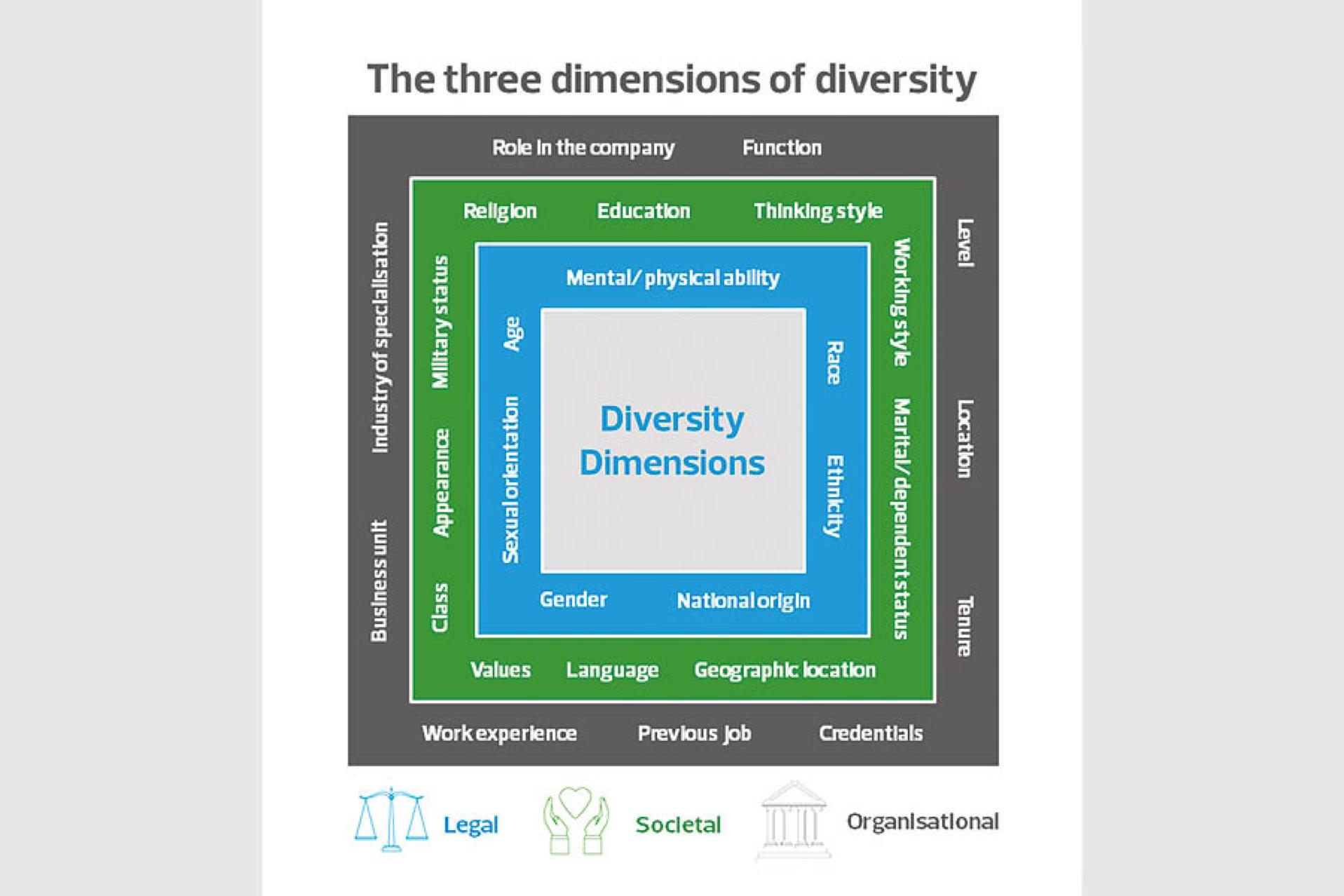
Business leaders must create a culture that allows all employees to feel comfortable to be themselves and not feel that their gender, personal preferences or circumstances will affect their development within the company. In addition, they must set an example for employees and ensure that acceptance of diversity is reflected in the senior leadership team of the business. And, thirdly, they should not hesitate to seek support from specialist advisers. Sometimes, when we are too close to the problem or inside a business, it is difficult to either see the root of the problem or to be able to make the necessary changes. The leader must be open to asking for help to manage the situation in the best possible way and make the necessary corrections.
Written by Elena Stylianou, PARTNER RSM GREECE
https://www.fortunegreece.com/article/h-axia-tis-diaforetikotitas-stisepichirisis/
32
Project SEPAL Youth Employment Magazine
Diversity is a blessing, not a burden
The way we think and act, as the adults we are today, is a reflexion of our early education, meaning the values, ethics and beliefs we follow, as a result of all the experiences and people who’ve influenced our lives in some way. Diversity, among others, should be promoted as a core value, starting in childhood, making one understand that being different is not a justified reason to push someone away, but rather keep him close and be open and willing to learn.

Even though humanity has made progress towards this direction, accepting diversity is still a battle to fight, both in our personal and professional lives. Ranging from gender identity and various ehnicities/ races to religion, sexual orientation or disabilities, the Earth is a multicultural environment, which can only function through acceptance, tolerance and harmony among its peoples. And today, in the 21st century, young people are still facing many challenges when it comes to the labour market.
Skills or personal choices? Which balances more?
The majority of women are still underpaid and underrepresented compared to men workers. Employers and even coworkers put a tag on you and judge according to your race or sexual orientation, not providing equal access to opportunities and social integration. In this debate, many employers lack focus on what actually matters: one’s experience and capacity to perform at his job, rather than his particular charactheristics or personal choices. The truth is that companies who’ve embraced diversity as part of their mission and vision, have a stronger sense of inclusion and integration, which leads to the creation of a sustainable company culture. Not only is it vital for the company’s success, but it also contributes to a better mental health among its employees, who feel accepted and are guaranteed the right to freedom of expression.
In addition, the benefits are unlimited. Bringing new perspectives to the table, more innovation at the workplace, the ability to solve problems faster, increased creativity & profits, strengthening core values, better decision making and internal communication, and overall, a company reputation that stands out.
Speaking of best practices in this field, Airbnb, the american booking platform for rentals, is providing us with an example of company culture that has built its grounds on inclusivity, starting with the „Airfinity” program, launched in 2015. 3 years ago, there was a total of 12 employee resource groups, for those coming from similar backgrounds, such as African-American or LGBTQ (Medium). Moreover, the Airbnb has a Global Head of Diversity and Belonging, helping them reach the 2025 goals which include 20% of the US employees to come from the category of underrepresented minorities, growing diversity, and adding interview questions to evaluate the candidate’s ability to accept diversity (AirBnb).
33
Youth Employment Magazine
Measuring equality
In the US, for example, The Human Rights Campaign Foundation had published a report, showing how american companies treat their employees, based on sexual orientation and gender identity preferences.
In 2022, approximately 842 businesses got a 100% score on the Coraporate Equality Index, being seen as the “Best Places to Work for LGBTQ+ Equality.” Apple, Nike and American Airlines have a 20 years history of reaching this percent, ever since the CEI has been launched in 2002.
European Institute for Gender Equality. Gender Equality Index. n.d. https://eige.europa.eu/gender-equality-index/2022/EU
Human Rights Campaign Foundation. Corporate Equality Index 2022. 2022. https://reports.hrc.org/corporate-equality-index-2022 Medium. How Airbnb Fosters Belonging in the Workplace. 2019. https://medium.com/@info_37650/how-airbnb-fosters-belonging-in-theworkplace-b2b8edb7bceb
Compared to 208, 10 years ago, now there are 662 companies who’ve established guidelines to facilitate the transgender inclusion of managers and employees. The results are based on a series of questions, which cover 3 main criteria: workforce protection, inclusive benefits, supporting an Inclusive Culture & Corporate Social Responsibility (Human Rights Campaign Foundation).
At European level, however, The European Institute for Gender Equality has an interactive Gender Equality Index, which provides results from 2013 to 2022, for the EU countries and their scores from 0 – 100, according to the level of equality between men and women (European Institute for Gender Equality).
To conclude, diversity on the labour market brings more benefits than most of us are aware of. Making people feel accepted, encouraged and heard at the workplace should be a priority in each company’s mission, to make the world a better and more inclusive environment, through innovative ideas, valuable cultural lessons and fresh perspectives. Consider it a blessing, not a burder or reason to discriminate against others.
Resources:
AirBnb. Working to Make Airbnb More Diverse and Inclusive. 2020. https://news.airbnb.com/working-to-make-airbnb-more-diverse-andinclusive/
34
Youth Employment Magazine
Diversity is a value - sharing international experiences among NEETs in the StayOn project
Promoting the values of diversity and inclusion among young people in the labour market is a very important task entrusted to intellectuals, academics and the economic shapers of modern Europe and the world. This diversity is understood not only in terms of culture, but also in terms of ethnicity, gender and gender identity, religion, age, sexual orientation, socio-economic class, and disability. Implementing projects that take these aspects into account has an important impact on developing and strengthening the socio-economic policies of the economy itself. The StayOn 1 project highlights and fosters such impact and values.
The situation of young people on the labour market, dramatically affected by the effects of the ongoing economic and financial crisis, is a serious challenge for the European Union 2. Nowadays there is a lot of emphasis on the economic development of NEETs 3 and promoting the values of diversity and inclusion among young people in the labour market. Much international action is needed to help spread the wings of young people. The StayOn project, funded by Iceland, Liechtenstein and Norway through the EEA and Norway Grants Fund for Youth Employment, serves this purpose. StayOn is a transnational project coordinated through the cooperation of eight European partners whose ultimate objective is to create conditions that enable young people to "stay on" rural areas by ensuring access to opportunities, benefits, services, and jobs without excluding their diversity. StayOn, through coaching and training, allows young people to gain experience. The trainings cover many aspects, such as learning a foreign language, learning to navigate the world of Internet marketing, learning to search information sources and many others that
help to discover diversity of the world, thoughts, events, sources of information and what is the most important - the good aspects of diversity of the group.
Diversity refers to the importance of understanding and appreciating the differences between race, ethnic, religion, age and gender groups. Young people between 20 and 29 years old who live in rural areas are more at risk of exclusion, mainly social exclusion. Therefore, the project emphasizes that diversity is an asset to build a society based on different but complementary values. Diversity unlocks innovation by creating a special environment where “outside the box” ideas are heard 4.
After the implementation of the first phase of the project in Poland, we already have some conclusions and can see how important it is to consider the diversity of our NEETs. After group training sessions conducted with a group of people of different ages, genders, and social, cultural, and religious beliefs, we see that these groups were more effective, better problem solvers as they consider multiple perspectives when approaching a problem.
Diverse groups are also more likely to cooperate flexibly as they are quickly able to combine the strengths of individual team members with different backgrounds into a single whole. With greater tolerance and understanding diverse groups can coexist with one another in the same society and work together for the good of the whole community.
1 Website of the StayOn project: https://www.stay-on.eu/ 2 https://www.eurosai.org/handle404?exporturi=/export/sites/eurosai/.content/documents/CC-AUDIT_COMPENDIUM_EN.pdf 3 NEETS: young people not engaged in education, employment or training 4 How Diversity Can Drive Innovation, the Magazine, December 2013
35
Youth Employment Magazine
Also, the diversity of the project partners and all stakeholders involved is an excellent opportunity as there are plenty of different experiences and knowledge to benefit from. By providing tools for effective intra and interproject dialogue by project partners, NEETs gain experienced trainers who not only impart sound knowledge but are also sensitive to their diversity and demonstrate the benefits of this diversity for their communities by unlocking potential.
Ahead is the next phase of the project – community catalysis and community co-innovations labs, in which community shapers will take forward important ideas and translate them into real and needed change in their regions in several countries in Europe. In this phase, too, we emphasize the importance of selecting a group in which diversity is preserved as it enriches the impact of our mission.
We believe that the StayOn project makes a real difference not only in giving NEETs knowledge and education, getting a job, but is also a prime example of how important in a group diversity is as the variety of different perspectives represented on a community shapers team.
Sources:
1. Website of the StayOn project: https://www.stay-on.eu/.
2. Youth unemployment and the integration of young people into the labour market. Audit reports published between 2013 and 2017, European Union, 2018, p. 11.
3. Ewa Krause, The NEET phenomenon - about young people three times nothing, „Problems of Professionology” Polish Society of Profiology nr 2/2016, Zielona Góra 2016.
4. Sylvia Ann Hewlett, Melinda Marshall, Laura Sherbin, How Diversity Can Drive Innovation, the Magazine, December 2013.
5. Mateusz Smoter, They are not learning and they are not working. Are they a challenge for public policy? Institute for Structural Research nr 03/2019, Warsaw 2019.
Natalia Truszkowska Kamila Wodka
The Polish Farm Advisory and Training Centre
36
Project
Youth Employment Magazine
StayOn
How promoting diversity and inclusion benefits young people in the labour market
When we talk about diversity and inclusion in the labour market, we shouldn’t just stop at words or look at statistics, but actually ask ourselves what kind of an environment we want to create. Moreover, we need to know and speak up about why these values are important. Young people, especially NEETs, the target group of the StayOn project, can both benefit greatly from these efforts and make the biggest difference for the future of inclusive culture.
conversation about the purpose of our efforts and, last but not least, invest in trainings. We must not assume things happen on their own, but actively work for quality relationships and better communication. In the StayOn partnership, that is the mission of BB Consulting’s team in their role of project integrators. Soft skills training, psychological safety and sensemaking are all essential to integrating differences for better collaboration.
Putting an emphasis on diversity and inclusion is seeing value in everyone’s potential contribution, their di ff erent backgrounds and perspectives as well as actual equality and collaboration that stems from it. In an environment where everyone is given a voice and heard, there is room for (young) people to learn from each other through their differences, and consequently create a better community for everyone together. If we acknowledge that this is what we are aiming for, we soon see that looking at numbers is not enough, though it is a good beginning. Diversity alone doesn't automatically mean an inclusive environment. It can quickly become void without real inclusive efforts, actions and system in place which aim at increasing access to opportunities for everyone as well as the same sense of belonging for minority groups than the majority. Both also being the goal of our project.
As Christine M. Riordan explains in her article Diversity Is Useless Without Inclusivity (Harvard Business Review), there are psychological dynamics that often work against inclusiveness and make it hard to achieve real progress and support. A similarity bias makes us naturally gravitate towards people like us, and subtler forms of discrimination often still result in certain groups participating less in decision-making or being judged more harshly than others. We might also lose the positive impact of diversity when minorities try to conform to the norm. Conversely, we might also experience resistance from the majority. To address and counteract these tendencies, we need to be ready to actively observe, reflect, talk, ask important questions, really listen to the answers, have a general
So, inclusion in our society and labour market means not just putting diversity on the agenda and monitoring the numbers, but maybe even more importantly including everyone in the conversation about why it is necessary and how it benefits the society as a whole. We must actively build an environment of respect and openness. We need different perspectives for developing critical thinking, imagination and flexibility which the current and future trends demand from the workforce. It should be noted that team members who feel included and have a sense of belonging are more engaged, responsible, prone to dialogue, open to participate, collaborate and share; making teams more efficient, too. It is not that farfetched, then, to say encouraging diversity and inclusion among young people is also equipping them with an important skill for work and life: communication, teamwork, leadership and more.
This is where and how the StayOn project can make a real difference. Its trainings, destined for NEETs in the rural areas, have a twofold role. They are actively working for a more inclusive world by making sure a disadvantaged group of young people with different backgrounds is included in the labour market. Additionally, they are promoting these values broadly by training the youth in an atmosphere of trust and appreciation, so they can become an example to follow and ambassadors for a more inclusive future.
BB Consulting Team
37
Project StayOn Youth Employment Magazine
Temporary work for young people - for those in education process especially during the holidays season - is a great opportunity to quickly and effectively earn the funds needed for living, subsistence, learning or just entertainment. This is an opportunity especially for people from poorer countries of the European Union who find temporary work in a richer country (e.g. Poles working in Western Europe), because the hourly/ day rate is much more higher and very attractive for them and even if they subtract the cost of living on the spot, after returning home, the savings from earnings significantly exceed the amounts that a given person would earn in their own country.
Even more attractive and differentiate form is a work exchanges, which are based on the idea of a collaborative exchange between someone who wants to offer their time and skills while traveling, and a host who is looking for a certain kind of help.
As a traveler, youth can offer a particular skill that hosts are looking for; something that they have experience with and would like to develop further. In exchange, youth can receive accommodation for the period they've agreed to work in, along with other benefits like meals, discounts on events and trips, language lessons, skills, competences & knowledge courses etc.
There's no limit to what kinds of places o ff er this form of exchange: hostels, campsites, NGOs, social projects, farms, ecovillages, restaurants, and even small businesses host travelers from around Europe (and world) for work exchanges.
It aims to inspire a sense of active European citizenship, solidarity and tolerance among young Europeans and to involve them in shaping their own as well as Union's future. It promotes mobility within and beyond the EU's borders, non-formal learning and encourages the employability and inclusion of all young people, regardless of their educational, social and cultural backgrounds, skin colour, sexual orientation or disabilities, eliminates social differences that are visible in one's own country and neutralize in a foreign one. At the same time it means promoting tolerance, building mutual understanding and cooperation between youth from different European countries.
Social, economic and cultural factors may complement the achievement of equity and inclusion in education and in the labour market, where the presence is often the next stage of the life path after completing education or in parallel still during it. What is important: inclusion is for all and inclusion is a process. For people with disabilities but also others on account of gender, age, location, poverty, disability, ethnicity, indigeneity, language, religion, migration or displacement status, sexual orientation or gender identity expression, incarceration, beliefs and attitudes.
Including youth in the labour market in general is a major challenge facing many European countries: the important moment of the transition from education to employment, the challenges and specific barriers facing young and vulnerable people today, combating economic inactivity and exclusion of young people. The EU supports Member States makes efforts to reduce youth unemployment and inactivity. The aim is to help young people develop their potential to shape the future of the EU.
38
Youth Employment Magazine
Temporary work abroad: How could your Project support exchanges among the members of the YE Family?
Promoting the value of diversity and inclusion among young people in the labour market, especially those pertaining to race/ethnicity, gender and gender identity/expression, religion, age, sexual orientation, socioeconomic class, and disability.
Young people deserve all possible opportunities to develop their full potential to shape the future of the EU and to thrive. They often face a difficult start in the labour market and his has been emphasized by the coronavirus pandemic. There are a lot of European initiatives supporting there aims, big ones like Youth Guarantee as well as numerous initiatives & projects as i.e. the FOLM Project - From Outdoors to Labour Market –which has benefited from a €3,400,000 grant from Iceland, Liechtenstein and Norway under the EEA and Norway Grants. The project participants were given access to a virtual platform designed to help NEETs - young people outside employment and education - with their training, advisory, and technical support when entering the labour market.
The expertise underlying the FOLM project has been based on ‘Social and personal development through non-institutionalized education model’ developed by the University of Edinburgh. The aim of the FOLM project was to develop young people’s every day and professional skills in order for them to become active job market participants, motivated to continue their education. As the basic assumption of the FOLM project was to address activities to young people from the NEETS group, also from small towns, which is usually automatically associated with facing social exclusion for various reasons (skin colour, sexual orientation – i.e. in Poland the general tendency is that the smaller the town, the lower the level of tolerance towards different differences), this project has greatly become part of the activities for promoting the value of diversity and inclusion among young people.
39
Youth Employment Magazine
Project FOLM
diversity
inclusion among
The concept of diversity and inclusion in the labor market have since dominated the policy space and have enjoyed several discussions at both global and national levels. Apart from its economic benefits, it also serves as an important pillar in achieving the sustainable development goals1 and the aim of living no one behind. It embraces equality, acceptance, and fair treatment of all people regardless of race, gender, religion, sexual orientation or disability. While diversity and inclusion are used together to describe fairness, equality, non-discrimination etc, they are interconnected but mean different things.
The terms “diversity” and “inclusion” have no single agreed definition. They are used in various contexts, scenarios and even at various levels including societal level, individual level, and organizational level to describe situations where people from different cultural, socioeconomic and societal backgrounds, belonging to a different race, gender, ethnicity, sexual orientation, religion , and disability come together with the same objective(s) of achieving a set goal(s). Both terms are anchored under several United Nations declarations and covenants including, for instance, the UN Universal declaration of human right2 and the Universal declaration on cultural diversity3. Both instruments stress the importance of respecting every individual based on the right to exist and associate on an equal basis without any form of discrimination(s).
The EU has strong commitments regarding diversity and inclusion. This is anchored in several instruments and declarations including the charter of the fundamental right of the European Union4. Specifically, chapter III of the charter stresses the importance of Equality. Articles 20, 21, 22, 23, and 26 emphasized the principle of Equality before the law, Non-discrimination on any ground including sex, race, color, ethnic or social origin, genetic
features, language, religion or belief, political or any other opinion, membership of a national minority, property, birth, disability, age or sexual orientation. Cultural, religious and linguistic diversity, Equality between men and women (inclusive of employment, work and pay), and the Integration of persons with disabilities.
“When we’re talking about diversity, it’s not a box to check. It is a reality that should be deeply felt and held and valued by all of us.” – Ava DuVernay
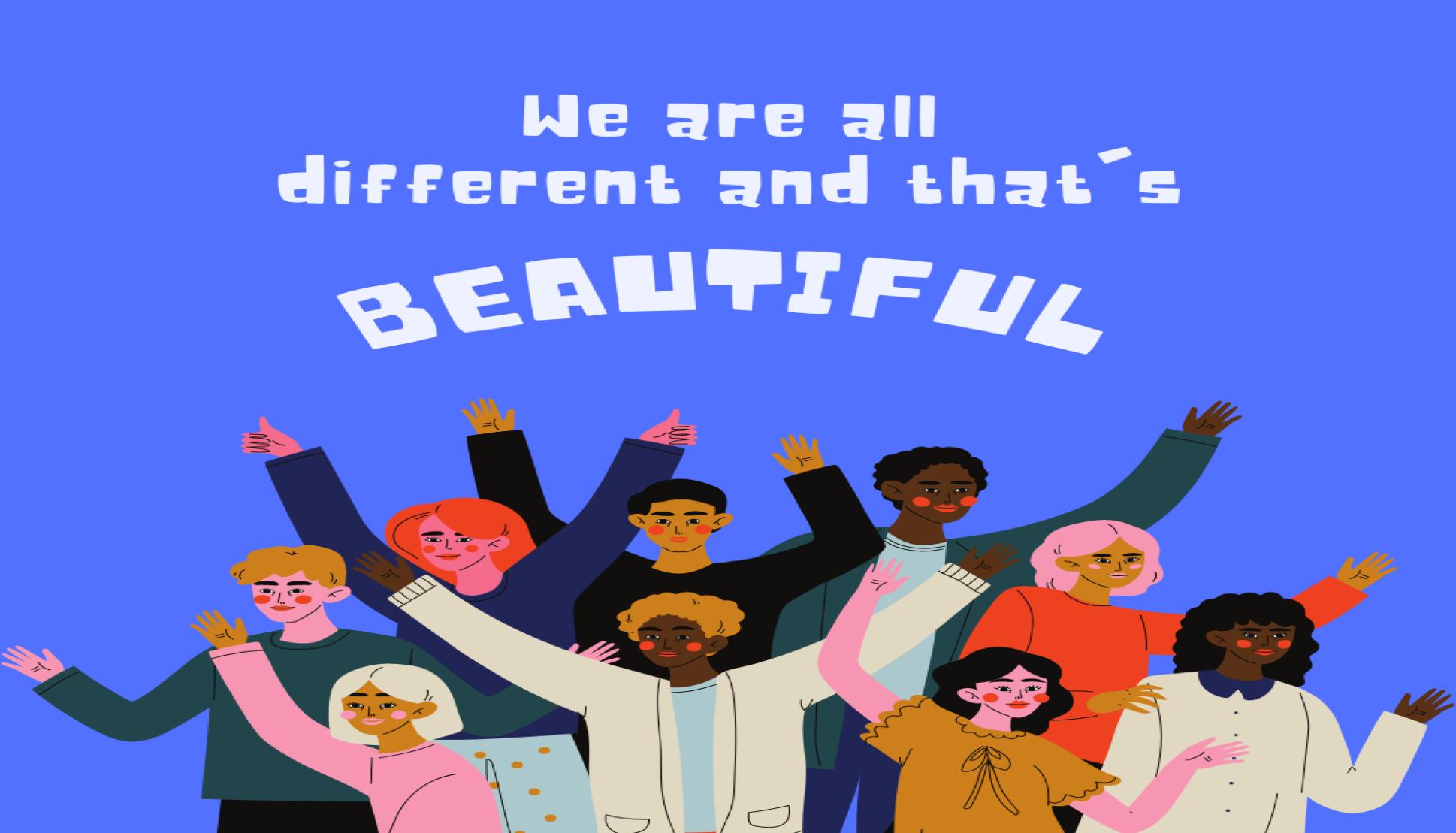
40
Youth Employment Magazine
Fig 1. Beauty of Diversity (source: Canva)
Promoting the value of
and
young people in the labor market, especially those pertaining to race/ ethnicity, gender and gender identity/expression, religion, age, sexual orientation, socioeconomic class and disability.
No doubt that the terms “diversity and inclusion” has generated a lot of debate in recent years. While several efforts and commitments at global, regional, and national levels are geared towards ensuring a higher level of diversity and inclusion in workplaces, there is still much to be done to make it a reality. For instance, in the EU, such efforts include the racial equality directive5, the anti-racism action plan 2020-20256, the people first initiative7 (specific focus on gender equality, antiracism, Roma community, LGBTIQ persons, and persons with disabilities), and commitments from organizations (private and public including NGOs, employers, etc) towards the diversity charter8, and the EU diversity month9; an annual event where a month is dedicated towards raising awareness about diversity and inclusion in workplaces across the EU. Despite of the commitments made by several EU countries toward the realization of diversity and inclusion, discrimination still persists in the region. For instance, a report by Eurofound10 on working conditions and sustainable work revealed that first-generation immigrants (both male and female) are at least 5 times more likely to experience work-related discrimination based on race, ethnic background/color, religion, and nationality.
Persons with disabilities still face discrimination in the workplace in the EU despite several strategies and initiatives to improve their employment situation. Records show that only 50.6 % of persons with disabilities are employed, compared to 74.8 % of persons without disabilities11. This revealed a shortfall of the 75% target set to be achieved by the Union. While efforts are being made by countries to achieve inclusion and promote diversity of persons with disabilities in the region, evidence shows disproportionate statistics across member states. Thirteen countries (AT, DK, EE, FI, FR, IT, LV, NL, PT, SE, SI, and SK) have employment rates of persons with disabilities higher than the EU average of 50.6%, while ten (BE, BG, EL, ES, HR, HU, IE, MT, PL, and RO).
Fig 2: Work-related discrimination by migrant status and sex (source: Eurofound)
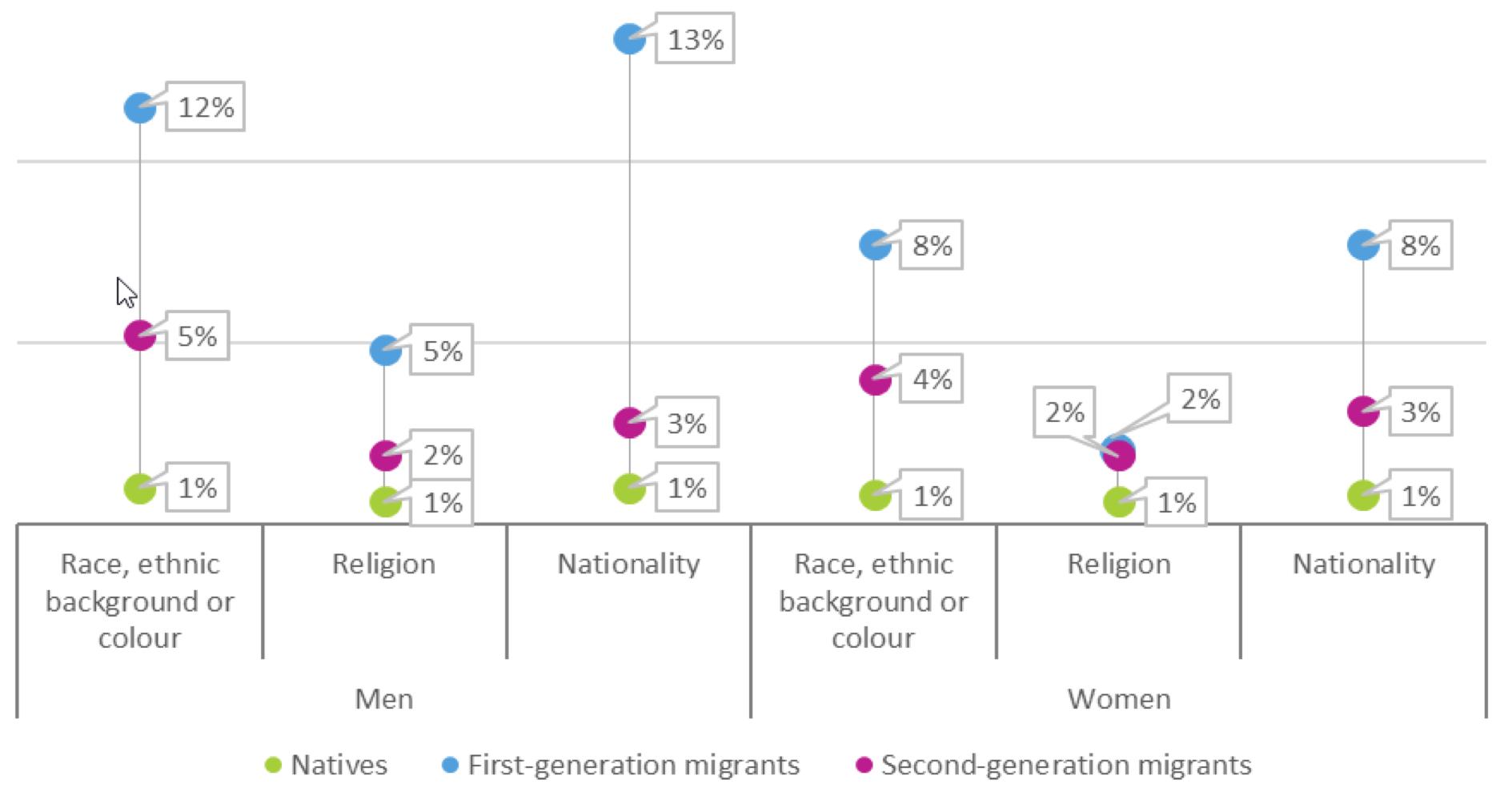
Fig 3: Employment rate of persons with disability across the EU (age 20 –64). Adapted from: European comparative data on Europe 2020 and persons with disabilities Data source EU-SILC UDB 2018 and Eurostat
It is important to note that some countries in the EU are taking various approaches to improve the situation of inclusion and diversity in the labor market. For instance, in the Netherlands, a legislative amendment authorizing the social affairs and Employment Inspectorate12 to oversee the enforcement of anti-discrimination policies was submitted to the Council of State after the summer of 2019. This makes it an obligation for employers in the Netherlands to implement policies to prevent discrimination in the recruitment and selection processes of candidates.

41
Youth Employment Magazine
In Germany, the General Equal Treatment Act13 (AGG) seeks to eradicate discrimination either in the workplace or civil matters based on sex, religion, ethnicity, age, disability, or sexual identification. The federal antidiscrimination agency (ADS) was established and charged with the responsibility of supporting people who felt or are facing any form of discrimination within the country. In Spain, several actions have been taken by the Spanish government to ensure the inclusion and integration of immigrants and other minority groups in the country. This includes the National Action Plans on Social Inclusion14 and multiculturalism across several sectors including schools and the media. In Italy, although there is no national policy to promote the economic and social integration of immigrant workers, Italian citizens and immigrant workers have the same social rights15. Also, various employers in the region have diversity and inclusion statements in terms of “equal opportunity” stating they welcome everyone to apply for jobs regardless of their color, culture, ethnic group, religion, etc.
Way forward
There is a need to promote diversity and inclusion among young people in the labor market today. The merits of having a diverse and inclusive workforce are enormous, and as a demographic group that is driven by change and courses, young people should be encouraged to push for such an environment. Everyone should be given their dues regardless of religion, ethnicity, sexuality, or disability.
Suggested ways to promote diversity and inclusion in the workplace from an employer or executive decision-maker perspective:

• Introduce a policy for honoring a variety of cultural and religious practices: Diversity does not mean not seeing the difference but embracing it; acknowledging the uniqueness in the team and respecting the diverse cultures, beliefs, sexuality, etc that exist within the team.
• Build a multigenerational workforce: Building a multigenerational workforce not only ensure the promotion of inclusivity but also
enriches the team with multigenerational ideas, experiences, and knowledge, which in turn translates to higher productivity.
• Eliminate bias in the evaluation process and promotion opportunities: This includes fair selection based on merit during employee relations in the workplace.
• Foster diverse thinking: One of the beauties of an inclusive and diverse environment is the flowing pool of thoughts made rich by peculiar adventures. Allowing an environment where thoughts can be different is both interesting and healthy.
• Open a dialogue about gender pay inequality: Create rooms for discussion on inequality and discrimination. There is still a lot of work to be done in promoting diversity and inclusion and we all have to play our path in the process. It is important to remember that problems are solved, and innovations are made when we harness the diversity, energy, and creativity of all people, especially the young ones.
Source: author’s note
42
Youth Employment Magazine
• Sustainable development goals. https://sdgs.un.org/goals
• UN Universal declaration of human right. https://www.un.org/en/ udhrbook/pdf/udhr_booklet_en_web.pdf
• UN Universal declaration on cultural diversity. https://www.ohchr.org/ sites/default/files/diversity.pdf
• Charter of fundamental right of the European Union. https:// www.europarl.europa.eu/charter/pdf/text_en.pdf
• Racial Equality Directive. https://eur-lex.europa.eu/legal-content/EN/ TXT/?uri=celex%3A32000L0043
• EU anti-racism action plan 2020-2025. https://ec.europa.eu/info/sites/ default/files/ a_union_of_equality_eu_action_plan_against_racism_2020_-2025_en.pdf
• EU people first initiative. https://ec.europa.eu/info/sites/default/files/ a_union_of_equality_eu_action_plan_against_racism_2020_-2025_en.pdf
• EU diversity charter. https://ec.europa.eu/info/policies/justice-andfundamental-rights/combatting-discrimination/tackling-discrimination/ diversity-and-inclusion-initiatives/diversity-charters-eu-country_en
• EU diversity month. https://www.eudiversity2022.eu/
• Eurofound - Racial discrimination is not a thing of the past in the EU. https://www.eurofound.europa.eu/publications/blog/racialdiscrimination-is-not-a-thing-of-the-past-in-the-eu
• Employment and disability in the European Union. https:// www.europarl.europa.eu/RegData/etudes/BRIE/2020/651932/ EPRS_BRI(2020)651932_EN.pdf
• European commission. https://ec.europa.eu/migrant-integration/news/ dutch-government-outlines-actions-fight-labour-marketdiscrimination_en
• General Equal Treatment Act. https://www.antidiskriminierungsstelle.de/ EN/about-discrimination/order-and-law/general-equal-treatment-act/ general-equal-treatment-act-node.html
• National Action Plans on Social Inclusion. https://www.sanidad.gob.es/ fr/destacados/docs/PNAIN_2013_2016_EN.pdf
• Busetta, G., Campolo, M.G. & Panarello, D. Immigrants and Italian labor market: statistical or taste-based discrimination? Genus 74, 4 (2018) https://genus.springeropen.com/articles/10.1186/s41118-018-0030-1
43
References
Project YES! Youth Employment Magazine
diversity
Involving and helping young people successfully integrate into the labour market is particularly important for their personal and professional development and for society at large.
The diversity we encounter in terms of socio-economic class, illness and disability, especially mental health problems in a time that allows for free choice and expression should widen the range of possibilities for a young person. Instead, these young people often feel rejected and isolated because of their differences. What are the needs of these young people, and to what extent do they intend to achieve successful realization and find their place in a competitive and dynamic world? Unfortunately, across Europe and especially in more conservative countries like Bulgaria, this is still a difficult process and daily efforts to promote acceptance of the differences are extremely necessary.
We at the Youth House "Hidden Likes" and the L.I.K.E Project have focused our attention and efforts on one specific group. This is the group of young people with mental problems who have every right and opportunity to live a fulfilling life despite their difficulties. Our goal is to support them, changing the attitudes of society.
What are we doing about it?
• We organize therapy groups that aim to help users understand the problems and difficulties they face both personally and in finding a job. Understanding your problem’s nature is the first step to initiating change. We discuss what is good for them, and what the goals they set for themselves are and help them set new ones. With
inclusion
the therapeutic groups, we achieve the main goal – that young people with mental problems have the confidence and selfesteem that they are full-fledged citizens with rights and opportunities for equal work and social realization.
• We organize campaigns in the community to raise awareness about mental health issues, to understand people with such illnesses and disorders and ways to communicate with them and accept them. We use all information channels - television, radio, printed materials, and social networks - for anti-stigma messages that promote the tolerant acceptance of young people with mental problems and the avoidance of discriminatory treatment towards them.
• Part of our work is also aimed at employers in that they are informed about how to work with people with mental illnesses and problems. What is mental illness? What is the benefit to the employer of employing young people with mental health problems and disabilities? What are the characteristics, needs and difficulties of people with such problems and how they can best be integrated into the workplace?
• We conduct seminars for experts from organizations and institutions to find common approaches to changing policies and initiatives that facilitate the realization of youth with problems.
• We organize Open Days, podcasts and Q&A sessions to discuss public concerns about interacting with, working with or meeting young people with mental health disorders.
44
Youth Employment Magazine
Promoting the value of
and
among young people in the labour market, especially those pertaining to race/ethnicity, gender and gender identity/expression, religion, age, sexual orientation, socioeconomic class, and disability.
One of the indicators of a healthy and fulfilling society is how stronger, healthy, and successful individuals will treat weaker and harmed people in some aspect of their lives. What conditions will they create to live and function in our society, having equal rights and the opportunity for a meaningful and satisfying life…
Diana Yankehayova, Project L.I.K.E. intern Project L.I.K.E.
45
Youth Employment Magazine
Diversity and inclusion: YOUTHShare diversity a “huge machine” for labour market integration

usually isolated from the labour market. More than this, in practice all these groups were free to express themselves during training activities and we empowered them to do so. As an example, Muslim trainees needed during the classes a short break for the prayers. Naturally, we happily accommodated their request and adjusted the e-learning classes accordingly with the consent of all trainees”.
Skills come in all forms and can be obtained by any individual with the means to access education. The Key Account Managers (KAMs) of YOUTHShare’s Transnational Employment Centres in Italy, Spain, Cyprus and Greece give us their own perspective in the value of including all young people in the labour market, regardless of one’s religion, sexual orientation, socioeconomic status and other characteristics that do not interfere with the actual intellectual capabilities of the person.
“At the YOUTHShare project, inclusion is a constant value!”, says Ms Aimilia Markaki , KAM of the Greek branch of the Transnational Employment Centre. “In the YOUTHShare Project, all these years we have been working on trying to be open to all new variants of diversity that emerge in today's society. The constant interaction with NEETs throughout the years has enabled us to remain alert of changes that may occur” she comments, and adds: “YOUTHShare is an example of open-mindedness and acceptance of different groups! Our selective criteria were targeted to women, migrants, aged 24-29, and other groups of society that were
Ms Mari Badenes Galiana, the KAM of the Spanish branch, refers to the successes of her branch in including young people in the training cycles: “The Spanish Employment Centre prepares young people with learning difficulties, migrants, refugees, low socioeconomic class for later inclusion in the labor market. Preparing them to face up to the challenges and fostering their future employment opportunities through individual sessions,workshops and accompanying them” and she concludes, “The YOUTHShare project in Spain has reached over 200 hundred young people and engaged them in the Spanish employment centre, taking part of different workshops, events and coaching sessions, helping them to improve their skills and abilities to get a job”.
As a “huge engine” the Italian KAM, Ms Claudia Caggiano, refers to the YOUTHShare project, that combines all its forces with the goal to provide young NEETs with the skills to enter the labour market: “The first step towards an increasingly inclusive world of work starts right here: from the management, to the KAMs, to the beneficiaries (NEETs), people from different backgrounds with different goals, of different ages, genders, interests: a huge engine that, despite the obstacles, works together to create and offer opportunities”, and continues “For the past four years, YOUTHShare has represented an innovative dimension of inclusion and opportunity […] Indeed, the project, in both the training and internship phases, has created spaces for discussion, inclusion and enrichment that will certainly continue to open doors to a new world of labour in the future”
46
Youth Employment Magazine
[...] “Nearly a thousand young men and women, including migrants, have had the opportunity to be trained for free, have had the chance to do national- but also (and especially)- transnational internships”, Ms Caggiano concludes, underlying the work that has been done in the framework of YOUTHShare.
“The KAMs supported all the individuals without any of the social categories having a negative aspect to recruitment. In addition, the project gave people from all socio-economic backgrounds the opportunity to participate, explore the platform, network, do internships and generally improve their employability in an inclusive way”, says Ms Foteini Sokratous , the KAM of the Cypriot branch of the Transnational Employment Centre, highlighting the inclusiveness of the YOUTHShare project.
Ms Sokratous concludes: “Intersectionality is the connection between social categories (e.g., gender, race, disability, sexuality) for a person who may belong to more than one of the above-mentioned social categories. For example, a Queer Black woman, often identifies with one element of her identity (for instance by the gender or race or sexuality) and this can be problematic because that person may experience discrimination and marginalization for multiple reasons within society. In the labour market, individuals often are discriminated against not only for their gender or ethnicity but for multiple reasons. The project achieved to help people to enter the labour market without facing any discrimination regarding any of the social categories they may belong”.
Authors
Aimilia Markaki, Key Account Manager, Greek branch of the Transnational Employment Centre
Claudia Caggiano, Key Account Manager, Italian branch of the Transnational Employment Centre
Foteini Sokratous, Key Account Manager, Cypriot branch of the Transnational Employment Centre
Mari Badenes Galiana, Key Account Manager, Spanish branch of the Transnational Employment Centre
Project YOUTHShare
47
Youth Employment Magazine
Fostering diversity and inclusion: the employment of young people with disabilities in Spain
In the light of recent studies, surveys and metrics issued by the Government of Spain, the employment situation of people with disabilities and in risk of social exclusion is now more precarious than ever. It is estimated that by the end of 2020 a total of 1,58 million people in a working age (between 16 to 64) had a disability and 23,75 of men and 23,5% of women were employed, this is, only 1 out of 4 disabled people that were actively looking for a job were actually working by the time this survey was carried out.
Focusing on the situation of young people, according to different surveys and even though almost half (49%) of disabled people under 30 years old were actively looking for a job. This high rate of unemployment summed with the fact that the average annual salary for young disable people in Spain is of 13.675 euros before taxes, almost 7.000 euros less than the total average salary for disabled people in the country, paints a really grim situation for this specific group.
Despite the difficulties, the labor market reflects that the inclusion of people with disabilities is proving successful. In 2021, the number of contracts for this group increased by 24% compared to the previous year, according to the Spanish State Public Employment Service (SEPE in Spanish). And it is precisely among those under 25 years of age where this increase has been most noticeable (33%), although they account for less than 8% of total hiring. This increase in the employment rate comes from a variety of factors, including a more efficient legislation, a more inclusive and aware society and a change in the mentality of companies of the private sector by allowing people to break the stigmas of inactivity and dependence that has always accompanied this minority. It is also worth mentioning that due to the COVID crisis and how severely it has affected Spain, the way young people establish new professional and social relationships has drastically change. Several institutions that work
closely with young people have stated that there has been a shift towards isolation and increased use of ICTs and digitalization, reducing contact with young people due to the decline in face-to-face interactions. Today they have to make an effort in contacting and engaging young people in their activities, even if those activities were planned to increase the likelihood of them finding a new job opportunity.
From
FUNDECYT-PCTEX
we firmly believe that these changes in the way society works and connects with each other is intimately linked to the concept of social innovation. By helping different actors and institutions in the territories to adapt to the new needs and paradigm and to understand new ways of thinking and doing we can create a meaningful impact in our communities and improve the livelihoods and job prospects for everyone, but especially those in direr situations. By integrating the concept of social innovation in our environment we are sure we can create a space were inclusivity and diversity will no longer be something to be praised, but weaved into each community were the otherness will not be regarded as something to be ashamed but something that adds value and improves life for everyone.
48
Youth Employment Magazine
Project RAISEYouth
News from the Projects
Creative Center Ruse participares in Tourism Expo
2022 - Destination Varna
Creative Center Ruse will present the new services that it could provide to touristic companies and will search for new successful collaborations and opportunities for application and upgrade of its achievements and scope of work.

Virtual 360-degree tours could give tourists a realistic sense of a complete experience before they've even checked into a hotel, or even booked it. This service will allow a preliminary comprehensive inspection of the accommodation. And to complete the service, the Center can prepare a Google business profile and position the virtual walk in Google Street View, so that customers can better orient themselves to the location.
On October, 7th, the team of Creative Center Ruse started its 3 days participation in the exhibition Tourism Expo 2022 - Destination Varna, which for the sixth year in a row creates a good business environment for building useful contacts in the tourism industry. The organizers of the tourist expo are the agency for marketing communications ProVox and the Varna Association of Restaurateurs and Hoteliers (VARH).
The purpose of the Center's participation in the forum is to present to a wide audience its activities, innovative trainings and services developed within the frame of CODE project. By promoting its activity, the team of
49
Youth Employment Magazine
Project CODE
HRDA upgrades CODE project achievements
For more information about our courses, you can follow us on our Facebook page, and on Linkedin.
Project CODE
Although the activities under CODE project has been successfully completed, the team of HRDA continues with the follow-up and upgrade of the skills of graduates from courses.
On 02.11, Creative Center Ruse held the first meeting between advanced youngsters in the Adobe Photoshop software product. The students, who has enrolled in the second level course, have started professional upgrade of their works through collages and various photo manipulations. The level they have shown is a great start for professional development in the field of digital arts. At this age, children are temperamental and work extremely purposefully, in just an hour and a half, they created high-quality collages.
The training will continue until the end of December, and a certificate will be issued to those who have successfully completed it.
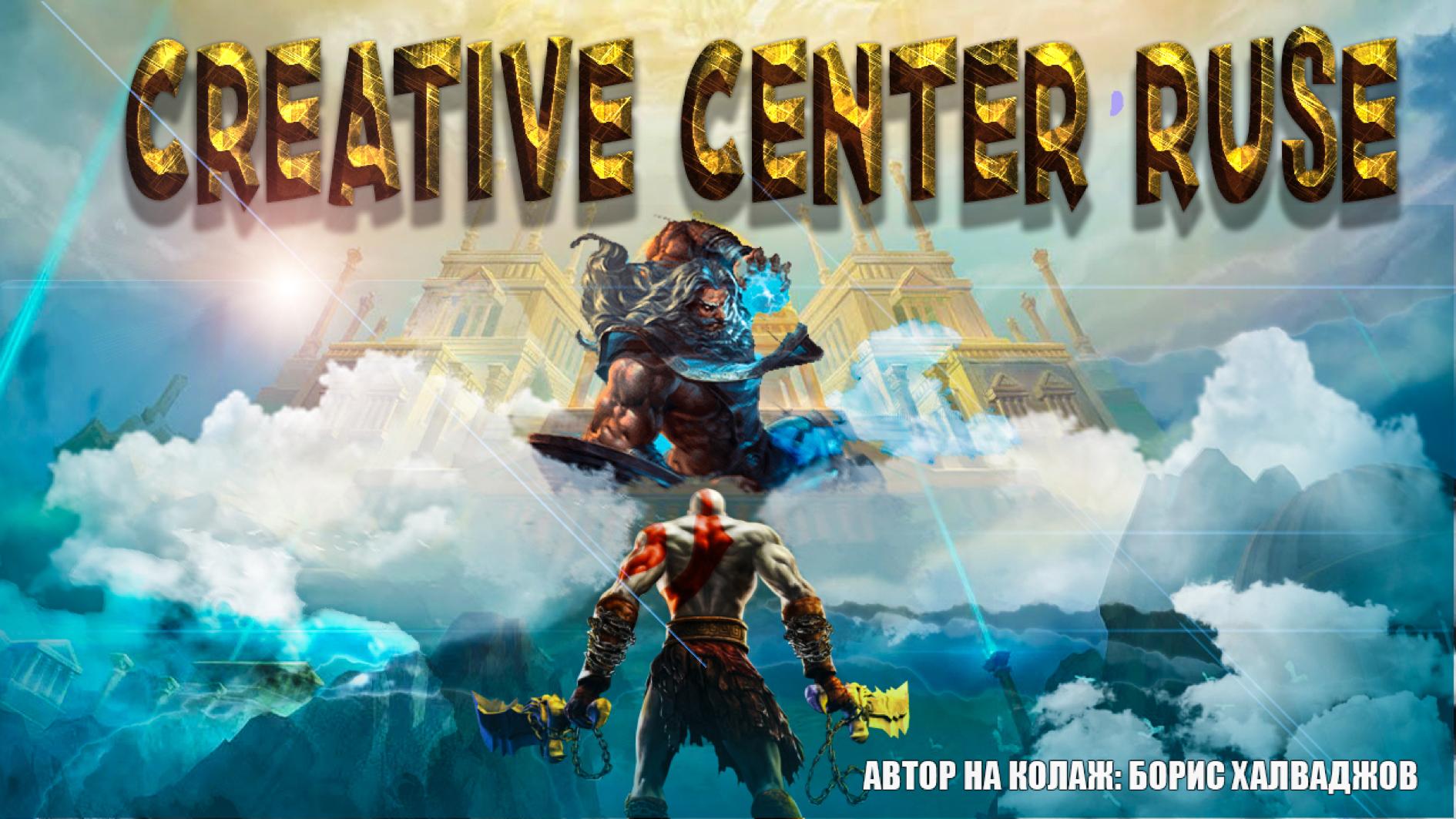
50
Youth Employment Magazine
Creative Center Ruse continues the training of students from the National Art School "Prof. Veselin Stoyanov" – Ruse
Creative Center Ruse continues the education of 11th grade students from the National Art School "Prof. Vesselin Stoyanov" – Ruse.
Each student has personal access to a computer, a graphic tablet and an individual account to the specially developed training materials for GRAPHIC SOFTWARE, Composition and color science and Pre-printing of advertising publications.
The training gives the young people the unique chance to work with professional digital art techniques, and to put into practice what they learned at school using Adobe Photoshop, which is licensed on all computers in the Center's hall. Thus, young people get great opportunities to grow in new technologies and receive guidance in their professional orientation after completing secondary education.

51
Youth Employment Magazine
Project CODE
Make Regional Collaboration Work
With this article we would like to share some insights on how regional collaboration among diverse partners might work. Additionally, we would like to highlight the importance, relevance and value of such collaboration to address unexpected and pressing needs using the example of the YESproject funded under the EEA Norway Grants Youth Employment initiative.
At the outset of the YES-project we were wondering whether interventions, such as mentoring, could be scaled up across different regions (scaling depth) and serve different target audiences (scaling reach). Another unanswered question was whether the intervention itself would need to be adjusted to different needs and whether that could be done in a costefficient, more sustainable way. Little did we know at that time that life would present us with unprecedented challenges.
One of our assumption has been that highly standardised mentoring services might be easier and more cost-efficient to scale. For organisation who have little or no experience it would be a straight forward process, for those who had more experience we expected more resistance as scaling scope would require to support all involved actors, i.e. mentors or coaches. When supporting over 1.000 mentors this can be a time consuming and expensive endeavour. Additionally, we wanted to have evidence and be able to draw learning and insights from working across different regions, with different target audiences, i.e. women, migrants/ refugees, the young etc.) to be able to adjust and improve coaching and mentoring processes and related techniques. We formed a consortium of implementation parters with different levels of experience in mentoring (Greece, Spain, Italy, Poland), selected expertise partners who who have been involved in scaling mentoring services across different regions and contexts (U.K., Germany) and researchers for impact assessment (Greece, Germany). While some of the partners had worked together in other projects, none had worked together with all partners.
Parola, Spieß-Knafl, Thaler (2022) describe three distinct turning points in the collaboration between academics and practitioners – nudges, pushes,
shoves– which reflect different levels of tensions and threat levels regarding collaboration among project partners and project outcomes. They suggest that such diverse collaborations need to be carefully facilitated and supported in order to make it work and lead to impactful opportunities for engaging and informing relevant stakeholders and possibly inform future programme design and implementation. Clutterbuck (2014) and Swenson (1997) have, among many others, highlighted the importance of taking time and offering different forms of support to help (diverse) teams managing conflicts and achieving valuable outputs and outcomes. Whilst we were aware that taking time for forming storming –norming – performing would be beneficial with a view towards project outcomes and impact, little did we know…
And then came COVID
When the COVID-19 pandemic arrived in Europe we were all shocked and overwhelmed. It is fair to say that scaling scope (processes and techniques) added a new dimension. While the assumption was that the mentoring intervention would only need smaller adjustments to make it work across different regions and target audiences, now a significant shift was required. Services had to be transformed from off-line to online formats, new issues needed to be addressed, i.e. dealing with uncertainty, developing VUCA skills, dealing with isolation, restrictions to travel and do business, etc. Did we know that our updated mentoring intervention would work? No! Did we have the answer(s)? Were we humbled by the enormity of the task at hand? Yes!
The main reason why we were able to address the need to adjust quickly is based in trust-based partnerships. We were able to establish a working alliance based on trust which created an atmosphere where experimentation and learning has been encouraged. This atmosphere took away the pressure to deliver perfect results and to focus more on potential learning from and with others.
52
Youth Employment Magazine
The diversity of the project partners allowed us to make use of available resources efficiently and swiftly. It allowed us to delegate tasks to those who were interested and experienced in contributing to improving existing interventions and programmes. Impact assessment and drawing insights and learning has been possible because we had researchers and academics on board. Expertise partners focused on improving and adjusting existing methodologies and approaches. Implementation partners tested and scaled up ideas and interventions as well as providing valuable insights and feedback.
We tried to highlight some aspects of the value and benefit of regional collaboration and indicated some options on how to make it work. However, it always needs courages donors such as EEA Norway Grants to create such opportunities – being fully aware that such a path can be challenging and might need skilful support to make it work and promote its outcomes. During the EU’s Regions and Cities week the region of Catalunya hosted a side-event which allowed to present some learning and findings.
To learn more about the YES-project’s approach to mentoring, the experience from an implantation partner and the impact assessment, please, go to the project’s website: https://youngentrepreneurssucceed.com/resources/ and watch the videos recoding of the EU’s Regions and Cities Week.
References: Clutterbuck, D. in Cox, E., Bachkirova, T. and Clutterbuck, D. (eds) (2018) The complete handbook of coaching. Third edn. Los Angeles: SAGE.
Parola, G., Spiess-Knafl, W. and Thaler, J. (2022) “The Butterfly Effect: How Academics and Practitioners’ micro-Practices shape Turning Points in Response to Paradox,” Academy of Management Learning & Education, 21(3), pp. 369–393. doi: 10.5465/amle.2021.0235.
Swenson, D. X. (1997) “Requisite Conditions for Team Empowerment,” Empowerment in Organizations, 5(1), pp. 16–16.
Joerg Schoolmann
53
Dr. Yiorgos Alexopoulos, Agricultural University of Athens
Youth Employment Magazine
Project YES!
Interview with Àlex Sastre, the General Director of Youth
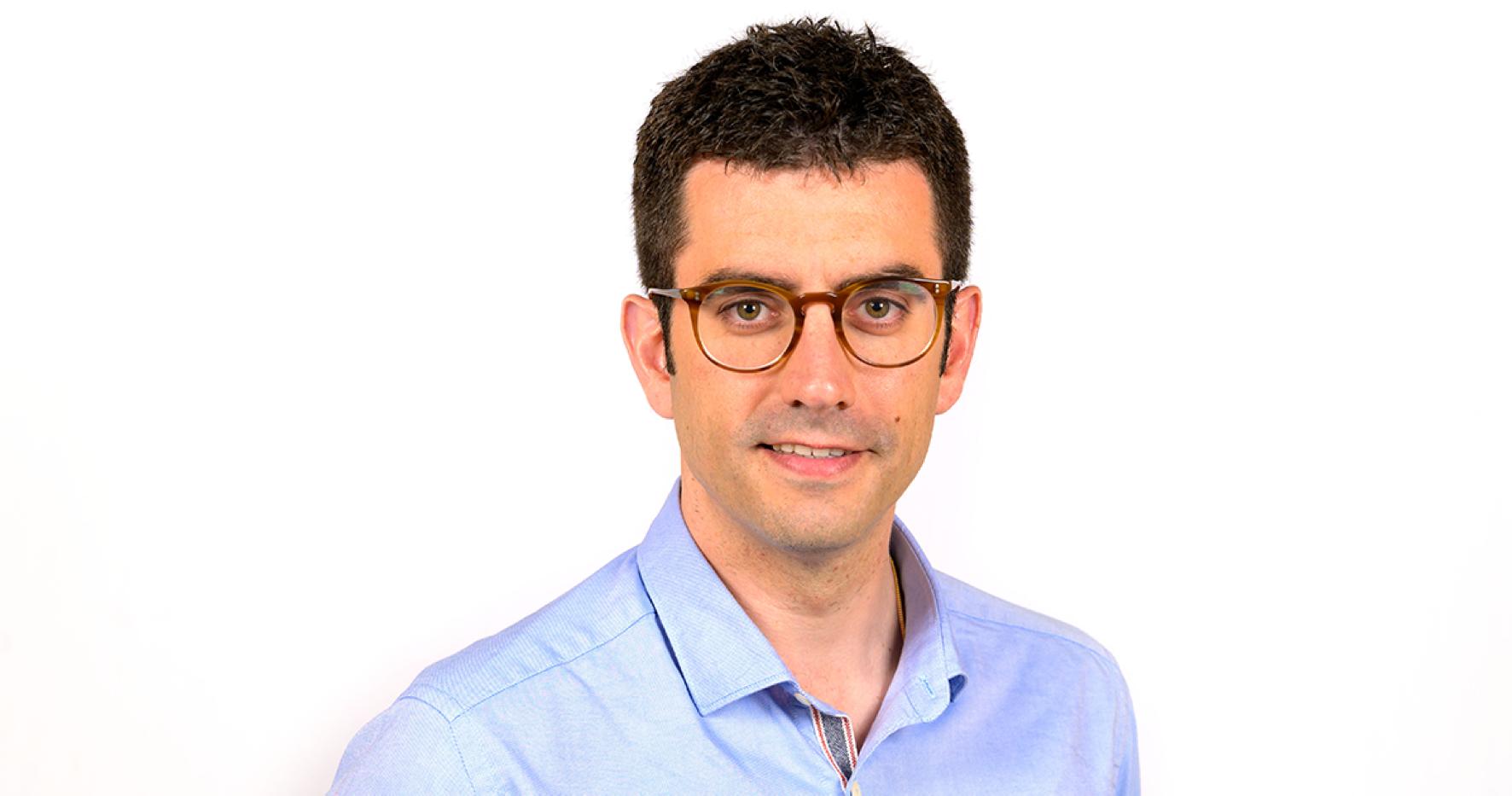
representatives, youth organisations and about 110 young people from 1st to 4th ESO, with GAME JAMs that enabled to pick their priorities, proposals and to reach out to this group with a gamified methodology and closer to their vital moment.
The Youth Congress was held last March, what is your assessment?
I believe that I can’t evaluate the Youth Congress without referring to the previous process that culminated in the Congress, since it was designed as a continuum.
In addition, nearly 1,200 young people completed the UTROPOLIS ESCAPE experience, which aimed to collect the voice of young people on how they wanted the policies that affect them to be for the coming years, and which includes their prioritisation in areas such as education, work, housing, participation or dialogue with the Administration. This reflection reached its climax on 17, 18 and 19 March at the Youth Congress of Catalonia. Three days in which all the actors involved in the definition of youth policies were called upon to participate in their construction. A Congress of Government, of the country, because its conclusions would be the basis for the Youth policies of the coming years. A hybrid Congress, face-to-face and online, where more than 400 people participated over the three days of the Congress, including political representatives and youth professionals, experts in the field, representatives of youth organisations and young people.
As you know, in May 2021, with the aim of developing a new youth strategy for the coming years, we began a process of consultation and joint work with all the agents involved in youth policies, which crystallised in March 2022 with the Youth Congress of Catalonia. Six driving groups were created, made up of representatives of the Directorate General for Youth and the Catalan Youth Agency, but also representatives of municipal organisations (Catalan Association of Municipalities and Counties and the Federation of Municipalities of Catalonia) and representatives of the National Youth Council of Catalonia, to design the actions prior to the Congress. In autumn-winter 2022, 20 activities were held, with the participation of a total of 640 people, which served to establish points of debate in the areas of governance, climate justice, equity, emancipation and digital transformation. Among them, more than 530 professionals, political youth
Thus, this whole process has had the voice and participation of more than 2300 people and has become key to address issues such as housing, education, work, health, climate emergency, social inequalities, feminisms, access to culture, etc.
However, it must be said that the pandemic situation added complexity to the development of the process and is likely to have had, in some cases, a demobilising effect. We are also aware that the timetable, the format or the characteristics of some of the proposed spaces have probably not been adapted or have not aroused enough interest in some agents linked to youth policies (youth professionals, political representatives, youth organisations or young people), and for this reason, we are considering some new actions in this final stage.
54
Youth Employment Magazine
The contributions and conclusions compiled during this whole process will be the basis for a new Youth Strategy, which is currently under construction. We will also consider those measures included in the monographic plenary session on youth held in May 2022, which also urges us to promote and work on several lines.
However, before closing this new Youth Strategy for the coming years, we believe it is essential to be able to make a final comparison and validation of the document with those agents who have been less present throughout the process of debate and reflection, either because they have not felt called upon to take part or because the timetable, formats or methodology has not been adapted to their needs.
For this reason, during the autumn of 2022 we will generate various contrast groups, focused on specific subjects and/or profiles (experts, young people, youth organisations, local authorities, representatives of the Departments of the Generalitat, legislative groups, etc.) to collect amendments and specific contributions to the drafting of what will be the new youth strategy.
And all this process, as it could not be other way, we will work together with the members of the current Governing Council of the PNJCat (municipal entities and the National Youth Council of Catalonia), who colead with Youth the design of the new framework of youth policies. The aim is that, before the end of 2022, we will already have the new Youth Strategy that should guide youth policies in the coming years.
It seems that, although it is decreasing, youth unemployment is still an unresolved issue. How do you think this problem needs to be tackled?
Indeed, youth unemployment is, unfortunately, a subject for improvement. As you know, in most European societies, even during periods of economic prosperity, youth unemployment is double that of the rest of the population. It is therefore clear that measures are needed to improve young people’s access to the labour market, but also fundamental, structural measures to help reverse this situation. And it is necessary to do so considering the existing inequalities within the youth group (due to
gender, geographical origin, level of studies, functional diversity, etc.) and the different needs for action that derive from them.
In this sense, I believe that it is essential to address several lines of action to reverse this situation:
We must continue to promote measures to encourage recruitment, making a very important commitment to provide autonomy and direct resources to young people, at a difficult time socially and economically for many families.
It is necessary to offer new opportunities to young people without qualifications, considering the rate for early school dropouts, as this is a basic factor for access to the labour market and for social inclusion.
We must continue to focus on strengthening Vocational Training for Employment, as increasing the professional qualifications of young people is one of the tools for improving their integration into the labour market, at all levels.
It is necessary to establish criteria for benefits or new measures with young people in mind, as they do not have access to the main subsidies due to the precariousness and lack of stability in their contracts.
It is necessary to work on employment policies in coordination with local agents. Although in recent years youth employment policies have had a high degree of territorial penetration, progress must be made in adapting them to the needs and characteristics of the different territories of Catalonia.
We must continue betting on the interdepartmental coordination of youth employment policies, also in the implementation of the new Youth Guarantee Operational Programme 2021-2027, in order to ensure comprehensive personalised interventions with young people, which will strengthen the programmes and actions with the best results in terms of labour market insertion.
It is necessary to continue weaving a network of care and support for young people, especially in terms of employment and education. In this sense, the National Youth Emancipation Network and the network of Youth Employment Referrals are essential instruments for providing personalised guidance support and individualised attention at key moments in their educational and employment transition.
55
What is the process for defining a new youth policy framework?
Youth Employment Magazine
These networks allow us to act preventively against premature abandonment and difficulties in accessing the labour market for young people, avoiding the start of disruptive trajectories that are very difficult to redirect, in the long term, and much more costly in terms of public spending.
And it is necessary to focus on knowledge sectors with added value. Although this is not a new measure, the truth is that there is still a long way to go to adapt the labour market to the knowledge society, which is necessary to generate qualified job opportunities for young people.
What is your estimation of the labour reform and its impact on youth employment?
It can be said that the labour reform puts forward some elements that could have positive effects on youth employment. However, it is necessary to see its application in the medium term in order to be able to estimate its real effects.
The disappearance of the contract for work or service and the increase in penalties in this respect could favour greater stability in the hiring of young people, who have always been over-represented in temporary contracts. The same applies to increasing penalties for very short-term contracts to reduce excessive turnover, which could also benefit young people. Likewise, the elimination of training and internship contracts, and the creation of a training contract based on two categories: “training in alternation”, when it is compatible with vocational training, university or professional certificate studies, and “obtaining professional practice”, when the qualification has already been obtained, could mean a gain in rights for young people. Until now, the misuse and overlapping of training and internship contracts has been a common phenomenon that has generated a lot of precariousness and instability among young people. These new features, together with the elimination of the probationary period, during which there was no severance pay, and the creation of a Trainee Statute, could help young people to acquire more stable employment paths, as they are the ones who suffer the greatest instability.
On the other hand, the reform also extends the scope of the permanentdiscontinuous contract, which, despite being a less damaging contractual modality, it is not clear what its effects will be on hiring, especially in the case of young people, as it is a modality that does not guarantee
continuity in the job and does not provide stability in hiring, since the cost of dismissal remains within the parameters of the 2012 reform. Therefore, as I said, we will have to be alert to the impact that this reform will have on the young population.
What assessment do you make of the National Youth Emancipation Network and the Youth Labour Offices?
As you know, the XNEJ is currently made up of 44 Youth Offices (OJ) and 221 Youth Information Points (PIJ) and its main task is to provide access to information, guidance and advice to young people mainly in areas related to emancipation (education, work, international mobility, housing and health).
For us, the National Youth Emancipation Network (XNEJ) is an essential instrument for the structuring of youth policies in the territory and, especially, to make possible the realisation of the life project of young people from the proximity and from their immediate environment. In this sense, we believe that these objectives are being fulfilled, as the presence in the territory, the trajectory of the services and the work of the different professionals who work there (543 according to the last diagnosis carried out) make them spaces of reference for young people.
An example of this, although not in the field of work, is that in the recent application period for the Bo Lloguer Jove, the offices and points of the XNEJ have attended to more than 1,600 young people in just a few days to accompany them in the process of applying for aid.
As far as work is concerned, it is one of the most requested topics and represented 16% of the more than 300,000 queries registered in 2021 in the XNEJ services. Likewise, the networking that takes place within the offices and points with other services and agents in the territory allows for the development and implementation of projects that are key for young people. A very clear example of this is the figure of the Youth Employment Referents, who are mainly located in the OJs and PIJs, which allows for very positive integrated work within these services.
56
Youth Employment Magazine
In this sense, we believe that in order to accompany young people, it is necessary to generate flexible workspaces that accompany these tasks. And youth spaces allow for this adaptation (in terms of opening hours, methodology and activities, characteristics and typology of the space, etc.) and configure an optimal space to achieve the objectives.
For this reason, the specific services offered by the XNEJ (whether linked to Employment or other areas) or the DGJ’s own Youth Employment Office located in Calàbria Street are an example. The specific focus of their services on young people makes it possible to attend to this group more effectively. All the services offered bring young people closer to the labour market and make it more accessible to them, whether in terms of job placement, socio-occupational counselling or access to self-employment. Moreover, the Youth Employment Office has adapted to the situation caused by the pandemic, especially in terms of diversifying the channels and formats of communication with young people. The use of telematic channels and social networks has allowed us to stay connected with young people. And this effort has become a key to continue being a reference for the rest of the XNEJ youth points and offices, with the Job Bank and the informative materials that are published periodically.
Autoocupació’s claim is: I am what I want to be. What about you? Are you?
I have a degree in chemistry, and when I was doing my practical laboratory work during my degree, I realised that research, internal experimental work, was not my field. When I finished, I did the CAP (the current master’s degree to become a secondary school teacher) and for almost 12 years I have been teaching mathematics and science in ESO and high school. And I wanted to dedicate myself for the same reason that I have also been a councillor in the Granollers City Council for more than 10 years: my true vocation is contact with people, service to people, and especially if it can be accompanying adolescents and young people in their growth, all the better. So, when I was asked to head the Directorate General for Youth, apart from being a real honour to be part of my country’s government, I thought it was an unbeatable way to sublimate this personal vocation during a complicated period for young people. But at the same time
exciting because of what it means to put all my work capacity into this cause. So, therefore, I am what I want to be!
Project YES!
57
Youth Employment Magazine
Opportunities for Roma Youth in Spain
Roma youth in their labour market integration and access to decent employment.
The number of Roma inclusion measures in employment is significantly smaller than in other areas. No new data regarding the impact of Covid-19 were reported in 2021.
Through SEPAL project we have been working and analysing the situation of Roma youth employment, factors of risk, vocational issues, labour market perspectives and define new lines of interventions to improve labour and social insertion.
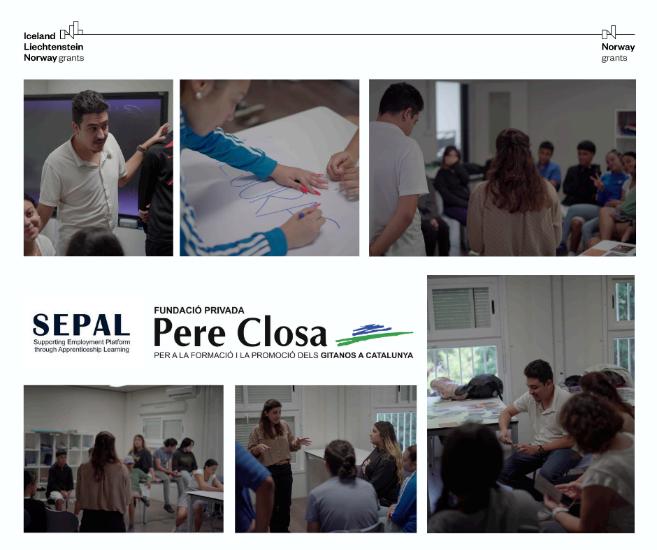
Following up the work through SEPAL Pro project, during this year we have organized a series of workshops and trainings aiming the promotion of the Social and Solidarity Economy (SSE) as an important alternative of labour insertion. Social and Economy is an economy whose social purpose is fundamental.
Roma discrimination in the labour market harms everyone, not just Roma. Equality of opportunities and treatment in employment is part of the fundamental principles and rights at work that are the foundation of social justice, and are therefore an integral part of the ILO’s Decent Work Agenda.
Many initiatives have focused on Roma inclusion and non-discrimination over the last decades.
The overall balance of these initiatives highlights the need for further systematizing approaches to address the underlying factors that impair
During October 2022, we talked to and trained young people on how they can connect with SSE. Bon Pastor, is a neighbourhood with a potential and considerable Roma community as well as a high-level of poverty. Approximately 15 youngsters, participated in the workshop discussing ways in which we can portray their realities in the SSE taking into consideration their cultural and social particularities.
They did not know what social and solidarity economy is, which are the objectives; what kind of opportunities it offers them, who are the political and local agents and actors’ protagonist of SSE in their territory and what resources we can implement in order to guarantee their participation.
So, during the second part of the workshop our youth group called Changemakers, explained to them what is SSE, how it works, who are the local agents and why their participation is important before and during the implementation of SSE policies.
58
Youth Employment Magazine
In fact, the changemakers group is composed by NEETs and volunteers engaged with SEPAL Pro project.

After this first workshop, we agreed to keep working together in order to adapt the Social and Solidarity Economy policies to their realities.
Isuf, Project Coordinator SEPAL PRO Spain
Project SEPAL
59
Enerida
Youth Employment Magazine
Need for NEETs in local communities –Young Service Steward Program
Our Young Service Steward program is aimed to prevent the growing competence gap between activation programs and the digital and soft skills needs of the labour market and to mature employment within welfare and environmental services.
The engaged NEETs impact
The Young Service Steward program cannot be successful without the commitment of involved young people, so we place particular emphasis on their satisfaction. To reach this, we plan to:
Thanks to the “European Year of Youth 2022” the role and support opportunities of youth come in the spotlight at all decision-making level in whole Europe. We strongly believe the “Think globally, act locally” principle related to the involvement on NEETs to local communities, that’s why YSS strive to make impact for the NEETs and communities by developing and using a very new toolset to reach our project goals.
Solid experience from the Scandinavian countries have proven, that the strongest positive impact on youth unemployment and negative exclusion, appears when all main stakeholders (public/private/NGO) in a local community contribute to solutions, and to join efforts to increase the pathways and attention towards the NEET 25-29 target group. This cooperation between stakeholders can have various formats. The developed tools of the program - such as – digital competence training, life skills trainigs, guide for counsellors and mentors - will be based on the results of the need description of the local implementation.
A special Norwegian developed “Mapping Tool” will be introduced. The mapping tool will be a tool for trainers/consultants working with the NEETs in orders to better find the connection between the individual youth and the possibilities for job/training and education. The tools can be used both as self-assessement and under guiding of consultant. Approaches are:
1. Mapping of the NEETs individual preferences
2. Mapping of the NEETs work interests
3. Mapping of the NEETs story and actual life challenges
• Deliver counselling activities that are specifically targeted at improving young people’s mental and physical wellbeing.
• Involve multidisciplinary experts in counselling and training activities: psychologist, coach, pedagogue etc.
• Organise project activities in a way where it is possible gradually to create relations and links to include the target group of NEETS (individually or in smaller groups) into other network/relations active in the local community.
• Prepare a viable format where each of the participating NEET can measure/experience their individual improvements and visualize it according to own needs.
The involved stakeholders’ impact
If we do our job as good as we planned the local stakeholders will follow the progress and it may make them open to taking the results forward independently after the project finished:
• Stakeholders will speak positively with their collaborators and local areas about the project and the tools developed in the project.
• Stakeholders will continue to work with the target group after the YSS project, as it is a win-win situation for them. (Some of them are currently working with the target group members, and participation in the YSS project will allow them to increase both knowledge and exponentially improvements in their goals.)
60
Youth Employment Magazine
Stakeholders will build relation to other providers of public work schemes and basic skills training for youth to develop relevance and participant motivation of education and employment offers in the local community.
Often in targeted communities (rural areas) of our Young Service Steward Program having less opportunities for maintaining the necessary structure and competence needed to support the NEETs. Having impact for local communities in mind, project will work for reducing poverty, contribute to more sustainable cities and communities and reduce the inequalities. To help the local communities our goals are:
• To prepare the NEETs to be able to to think on their own how to find a job, or start their own business (by improving their personal and digital skills)
• To provide a toolset to heighten the e ff ectiveness and successfulness of local activation programs (best practices, guidance) and to keep improving their quality by further usage of the project results.
All the developed tools of the YSS Project will be available from the project website of the Young Service Steward Program. Follow us, to stay informed: https://yssproject.eu/
Project YSS
61
Youth Employment Magazine
On nudges, pushes and shoves: The rise and fall of projects
Giulia Parola, Dr. Wolfgang Spiess-Knafl (ECSF at Munich Business School) and Prof. Dr. Julia Thaler (Bundeswehr University Munich) have recently published the article "The Butterfly Effect: How Academics' and Practitioners' Micro-practices Shape Turning Points in Response to Paradox" in the top-tier journal Academy of Management Learning & Education.
This article:
→ shows the NUDGES needed to move away from worst practices embedded in the stale, corrosive presumption of “this is just another project“,
→ explains how to best deal with PUSHES or overt cases of tension, which many times represent action opportunities to turn things around, and
→ illustrates how SHOVES or moments of forced renegotiation might still be the chance to get your project on the right track.
This paper and the entire issue, including all other articles and book reviews, are available for free download through October 31 at this link: https://journals.aom.org/doi/full/10.5465/amle.2021.0235

Enjoy the read! www.stay-on.eu IG @stayon_project
FB www.facebook.com/stayonproject21
Parola, European Center for Social Finance
This study starts from the assumption that partners are encouraged to collaborate in projects but then often left alone to do it. However, it is inspiring to watch friendships form out of unexpected people and places. And it is interesting to observe how often the little things bring fundamental change in the relationship among people that do not see eye to eye. This is true even in a consortium of organizations involving professionals from various countries with diverse backgrounds, different work and personal values, and expected to perform quite diversified roles in a project.
Project StayOn
62
Giulia
Youth Employment Magazine
StayOn 2nd Knowledge Transfer Workshop - Ireland
community entrustment. This involved idea generating among partners, addressing of any potential issues, and a supportive coaching session. Over the past year the StayOn project partners have worked closely together and forged strong connections, which were strengthened by the second knowledge transfer workshop in Ireland.
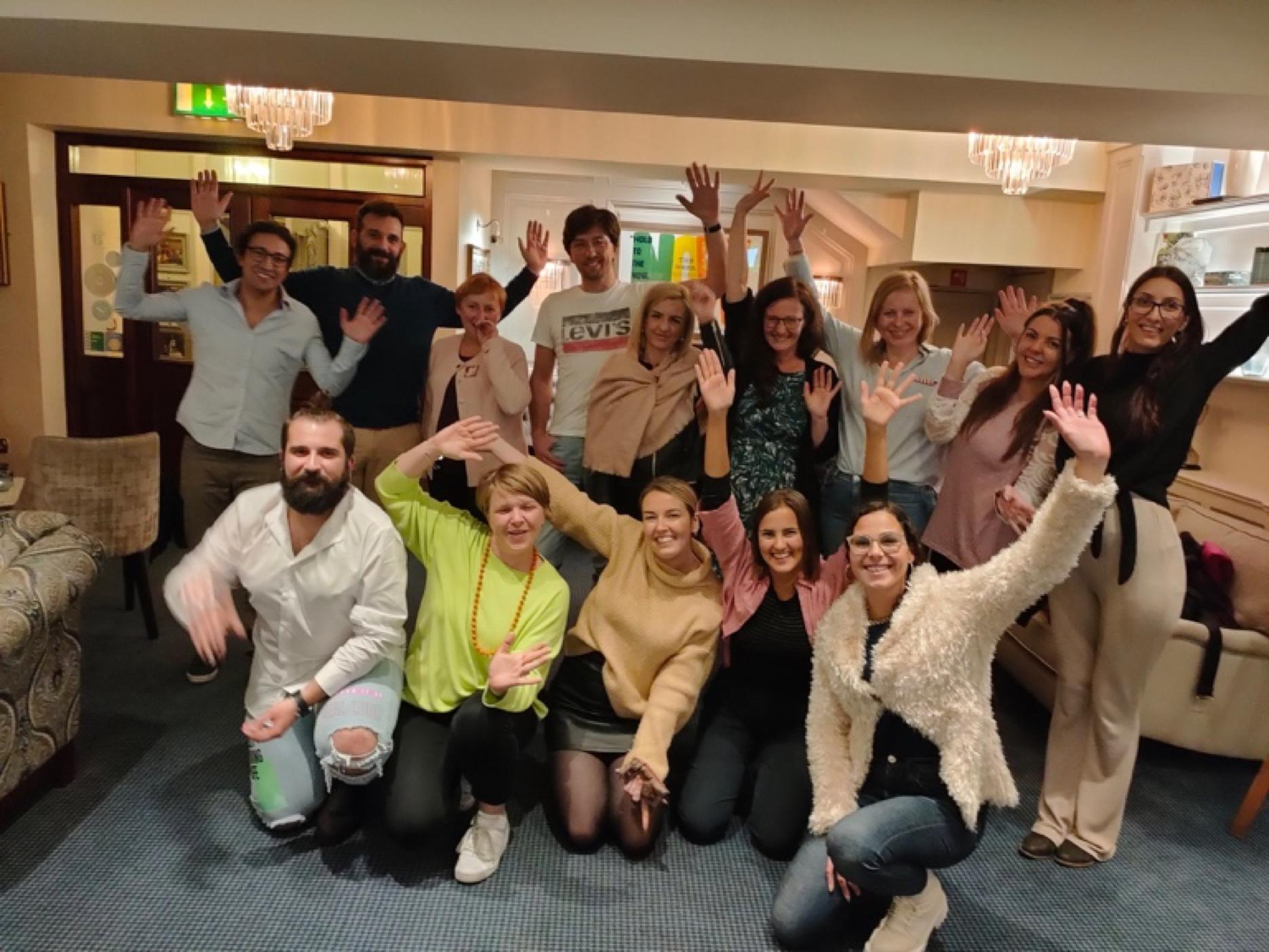
As we enter year two of the StayOn project, Meath Partnership hosted the second knowledge transfer workshop in Ireland on October 6th and 7th, 2022. The workshop was designed to bring together our project partners from Greece, Slovenia, Italy, Ireland, Poland, Portugal and Germany to reconnect with each other and with the envisioned dream for the project –‘young people recognise and develop their superpowers (activism, participation and creativity), and use them to StayOn rural communities’.
While reconnection was the overarching theme of this workshop, the focus was on the implementation of the project to date, including sharing of best practices and less successful experiences, and how partners can create a StayOn ‘buzz’ to engage more stakeholders in the upcoming project phases; community catalysis, community co-innovation labs and
63
Meath Partnership team
Youth Employment Magazine
Project StayOn
Blue Generation Project updates
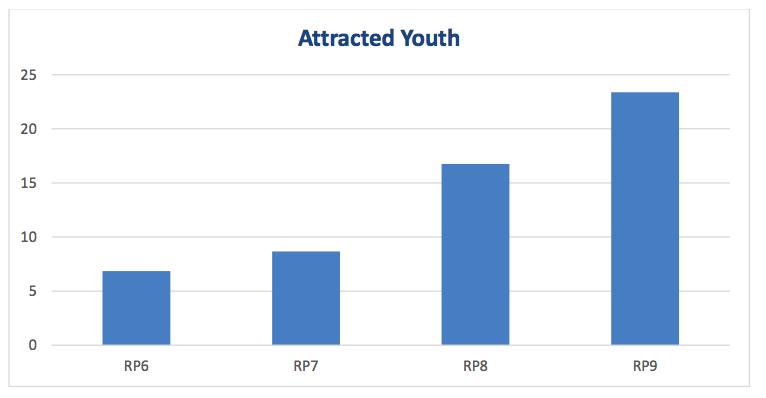

Continues its efforts and has attracted more than 23,000 youth NEETs to the Blue Economy through promotional visits organized at almost 300 organizations (high-schools, universities, VET schools, NGOs, and local communities) in Bulgaria, Greece, Poland, Portugal, Romania, and Spain.
360o Virtual Reality Videos for 2 Blue Economy sectors: Fisheries and Marine Biotechnology
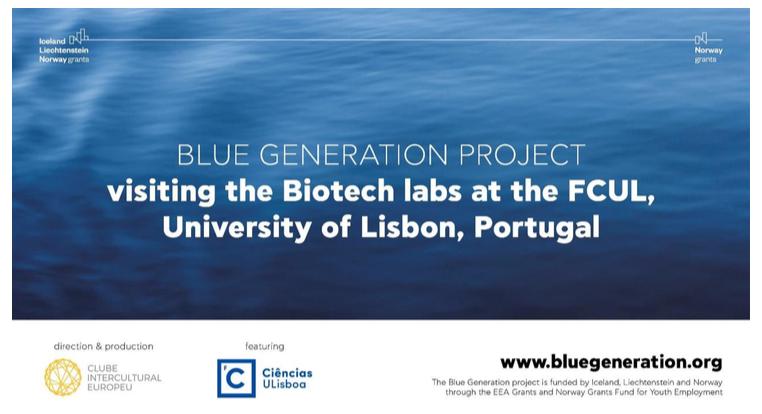
Clube developed the VR Video in the Marine Biotechnology sector.You can watch the video here and see the daily routine of the Research Group on Bio adhesion & Biomimicry of the Faculty of Sciences of the University of Lisbon.
Militos Consulting S.A. developed the VR Video in the Fisheries sector. You can watch the video here and discover what it's like to work at the Piraeus fish wharf, the largest fish market in the Balkans.
64
Youth Employment Magazine
The Blue Generation International Conference
The Blue Generation International Conference was held in Palma de Mallorca on September 29th, and brought together the Blue Economy Sectors and youth. We had very inspiring speeches and experiences, not only from Blue Economy experts, but also from EU and OECD officials, representatives of NGO's, governmental and public institutions, inclusion centres and most important from our youth, who described how they have benefited from the Project.
my knowledge in one more field of the shipbuilding science" said Dimitris, who studies naval engineering in the University of West Attica in Greece.
During the 4-day training organized by Militos Consulting S.A., we provided 12 hours of training in nautical theory and the basic principles of boat carpentry at a shipyard and in a carpentry workshop. Some of the participants have already been chosen by companies in the broader ship building and maintenance sector for employment and all of them received a digital badge and a certificate.
Training seminar on the specialty of the Assistant Boat and Ship Carpenter

"The assistant boat and ship carpenter course of BlueGeneration Project was a really good opportunity for me to specialize practically

65
Youth Employment Magazine
Project Blue Generation
“Evaluation should be for people” – conclusions from 3rd International Evaluation Congress in Poland
On October 22, the 3rd International Evaluation Congress was held, coorganized by the Youth Impact project partner The Jerzy Regulski Foundation in Support of Local Democracy (FSLD) with the Polish Evaluation Society (Polskie Towarzystwo Ewaluacyjne, PTE).
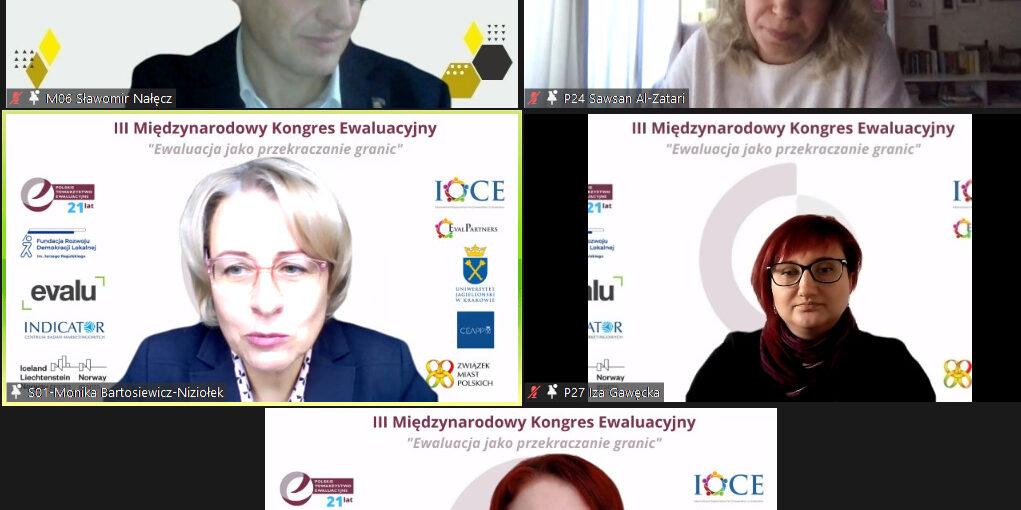
The main topic of the event was “Evaluation as crossing borders”, which indicates the challenges faced by evaluation in the national and international dimension, and also emphasizes the need to re-evaluate and introduce significant changes in the standards of evaluation as a social activity, on local level.
The event was opened by Monika Bartosiewicz-Niziołek, President of PTE, also one of the experts within Youth Impact project. There were seven panels all of which focused on different aspect of evaluation and its social context, among topics there were: “Trust and its lack in assessment and evaluation of systems” or “Evaluation in local governments”.
One of the panels entitled “Evaluation of local projects supporting youth employment from the perspective of new evaluators” was led by Sławomir Nałęcz, Ph.D., from FSLD, Youth Impact project expert. The main aim of the panel was to identify challenges faced by emerging evaluators in youth employment projects as well as to present the solutions found to deal with them. The panel was attended by: Sawsan Al-Zatari (Co-Chair of EvalYouth MENA, member of the EvalYouth Global Mentoring Program), Alena Lappo (Member of the Board of the European Evaluation Society (EES), co-leader of the Network European Emerging Evaluators (yEES!)), Monika Bartosiewicz-Niziołek, as well as young evaluators who are starting their work in the profession and are participating in the mentoring program of the Youth Impact project: Bogusław Koseł, Maja Musialik, Izabela Gawęcka, Dominika Romejko and Karolina Wójcik-Smołucha. Thanks to
different perspectives and experience of the panelists the audience got a rich picture of novice evaluations of local youth projects.
As Monika Bartosiewicz-Niziołek noticed, “As young people, you easily build your relations with the environment, you have no problems with contacts with your peers. You are sensitive to social or environmental issues. We can learn a lot from you. In the 1990s, in Poland we had only one book on evaluation at our disposal“.
“Evaluation should be for people, from people, it should be bottom-up”, emphasized dr. Sławomir Nałęcz.
66
Youth Employment Magazine
Conference participants argued that evaluators may be simply called partners, observers, as in Poland, the term evaluator may trigger unfavorable attitudes among the audience. “It is very important for us to be evaluation ambassadors, able to convince others to it, speak the language of benefits, and show that evaluation has nothing to do with criticizing or judging, although it is so often associated with that by the outsiders”, concluded Bartosiewicz-Niziołek.
The conference is co-organized by The Jerzy Regulski Foundation in Support of Local Democracy as part of the Youth Impact project funded by Iceland, Liechtenstein and Norway through the EEA Grants and Norway Grants.
by FRDL
Project Youth Impact
67
Youth Employment Magazine
Youth entrepreneurship in accelerating climate action
World population is expected to reach 8 billion people in 2023 according to the United Nations (in 2026 according to the U.S. Census Bureau) and even today the world consists of 1,8 billion young people between the ages from 10 to 24, which is said to be the biggest generation of youth in our history. The threats posed by climate change reach us from everywhere, whether it’s the social media, news or daily conversations with our friends and relatives. There is no doubt that this issue has increased the levels of uncertainty about our future or future generations. The tremendous mobilization of young people around the world demonstrates their enormous possibility to hold decision-makers responsible. They say that the older generation has failed, and they – young people – will bear the consequences.
There are plenty of initiatives that put efforts into involving and supporting young people in climate action. For example, one of them is Youth and Environment Europe (YEE), the largest independent European network of non-profit environmental youth organizations. Their mission is to help young people tackle the climate crisis by raising awareness, promoting international collaboration and knowledge sharing among their members and increasing youth participation in environmental and climate decisionmaking processes (1). Erasmus has also launched projects related to youth entrepreneurship for sustainability and moving towards a more circular, green economy, where little is wasted, and pollution is minimised (2). There are also a number of hackathons organized among 65 countries under Climathon – international movement of local change makers and innovators helping cities achieve net-zero emissions, among whom we can find policymakers, entrepreneurs, youth, business leaders, academics and students. A hopeful note on youth participation was also seen at the recently held COP26. Members of Youth European Forum worked with their members, UN youth delegates and activists to ensure references to the importance of youth participation in decision-making on climate policy. The final agreement “urges Parties and stakeholders to guarantee meaningful youth engagement and representation in international, national, and local decision-making processes, including under the Paris
Agreement,” thanks to pressure from young people present at COP26.
This is the first time that youth participation in decision-making has been expressly stated in any COP outcome (3).
The youth are now important agents of change in fighting the climate crisis. They are innovative, entrepreneurial and ready to put their efforts into finding more sustainable, greener ways of life and enhancing climateconscious society. Therefore it is important to include them into decisionmaking processes and climate policy planning and support their entrepreneurial initiatives in coping with the climate crisis.
1) https://yeenet.eu/about-yee/
2) https://ec.europa.eu/programmes/erasmus-plus/projects/ priorities_2019-2024_en
3) https://www.youthforum.org/cop26-outcomes
by FRDL
68
Youth Employment Magazine
Project Youth Impact
Second edition of the evaluation workshop serie in Poland is completed!
competences of young people towards better employment and entrepreneurship. The classes also focused on the practical aspects and creating evaluation tools in groups, which motivated and engaged the participants to actively acquire knowledge.
The issues presented in classes are described also in the Entrepreneurship Toolkit, which is available on Youth Impact project website, soon it will be also available on the FRDL website. By the end of the Youth Impact project the online course will be available for everyone on Moodle (registration needed).
In the mid-December Foundation in Support of Local Democracy – Polish team of Youth Impact project – finalized the workshops of the blended learning course “Towards Better Youth Entrepreneurship Projects”. The aim of this training was to develop evaluation skills in organizations and institutions implementing projects in the field of supporting entrepreneurship of youth in the 15-24 age group. Among our participants of the workshops are representatives of organizations conducting activities for the development of youth entrepreneurship.
The course included e-learning materials carried out on the Moodle platform, as well as four workshop meetings with trainers via Zoom. The course was carried out in two groups, with participants from various organizations, from different parts of Poland, sharing the same goal of studying evaluation to better conduct projects for young people. Meetings with the participants included the issues of the evaluation process and project logic, preparation of evaluation, data collection and analysis, and the use of evaluation results, as well as developing the
 by FRDL Project Youth Impact
by FRDL Project Youth Impact
69
Youth Employment Magazine
Young adult NEETs aged 25-29 in Poland, Czech Republic and Slovakia
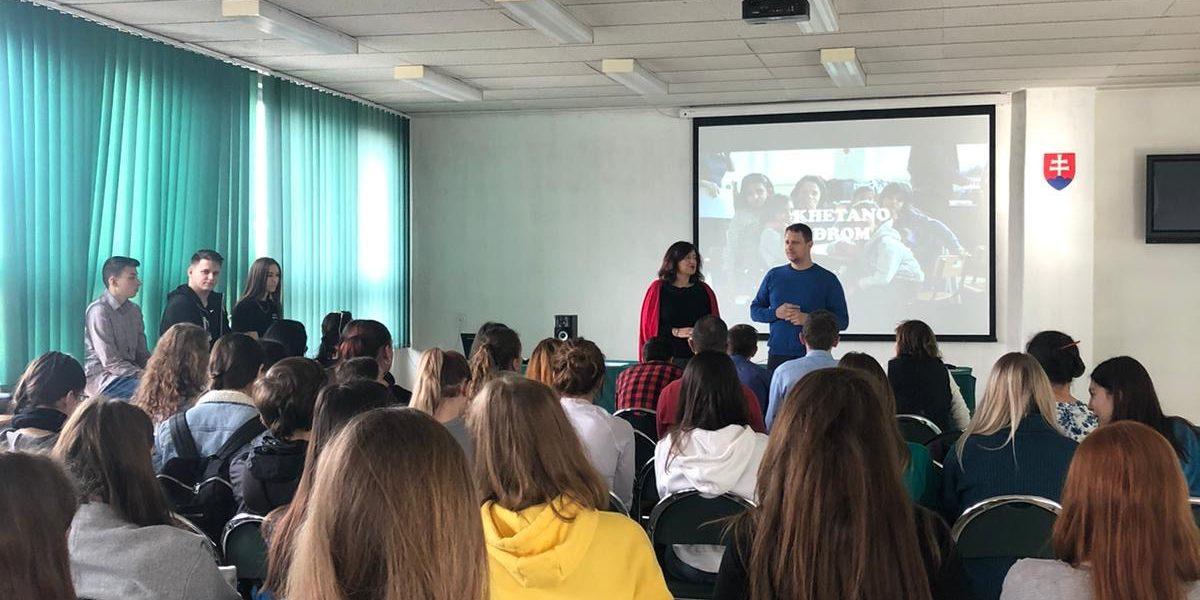
Young people aged 25-29 is a group of special interest in public policies related to transition between education and work. This fact was highlighted in 2020 when the adoption of the EU Council recommendation reinforcing Youth Guarantee took place. The recommendation included this age group as a part of young people (15 – 29 y.o.) entitled to receive a good quality offer of employment, continued education, apprenticeship or traineeship within a period of four months of becoming unemployed or leaving education. The study provides current characteristic of the target
group of this recommendation together with analysis of the influence of COVID-19 pandemic, its subgroups and brief categorisation of projects addressing their needs.
See the whole expert study here.
Project Youth Impact
70
Youth Employment Magazine
Excellence Programme evaluation results roundtable in Poland
criteria, research methodology, detailed results and conclusions, the speakers also proposed a number of recommendations for planning projects supporting professional activity of young people and designing their evaluation. Among the tips were such recommendations:
• Coordinators or leaders of target groups should be consulted on training delivery schedules to avoid overburdening participants with duties (e.g. September, June)
• In projects aimed at young people, it is worth including antiviolence activities, supporting people experiencing abuses, but also all kinds of awareness and preventive activities, because young people often face violence
At the beginning of March, another “evaluation roundtable” was organized as part of the Youth Impact project in Poland. During the meeting on the ZOOM platform on Tuesday, March 1 at 6:00 p.m., it was possible to listen to and discuss the results of the evaluation studies carried out by the participants of the Evaluation Research Excellence Programme. The event was held under the patronage of the Polish Evaluation Society.
The program is addressed to young evaluators – people who wanted to evaluate a project supporting youth employment or entrepreneurship, but needed support in doing so. During the cooperation, researchers were provided with mentoring support by Monika Bartosiewicz-Niziołek, an expert of the Youth Impact project and the president of PTE.
During the webinar, the results of their evaluation research were presented by Bogusław Kosel and Maja Musialik (project “Joint Employment Initiative of Youth to Meet the Needs of the Cross-Border Labor Market”) and Izabela Gawęcka (project “Active for 100 Years”). In addition to presenting the subject and scope of evaluation, research questions, evaluation
• It is worth considering the project method as one of the forms of conducting classes, engaging groups of participants in a joint action aimed at achieving a specific result, e.g. developing a business plan
• In evaluation, it is worth translating the project language into the language used by project participants, e.g. a “training trip for leaders” could have been remembered by them under a completely different name
• It is worth verifying the findings of the ongoing evaluation as part of ex-post evaluation (including deferred evaluation) in order to assess the effectiveness, utility and sustainability of the project.
You can find out more about the recordings from the “round table” on Youtube here. We invite you to watch it!
Written by Zofia Penza-Gabler (FRDL)
Project Youth Impact

71
Youth Employment Magazine
A learning organization or how can evaluation help us learn?
Round table for organisations working with youth facilitated by: Barbora Komberec Novosadová, Jan Hněvkovský and Jakub Vrobel
This article is a brief summary of the roundtable attended on 9 February 2022 by professional evaluators and representatives of leading Czech organisations and institutions working with youth.
The roundtable was held online and it was organised under the auspices of the Czech Evaluation Society.
The aim of the roundtable was to introduce the participants to the concept of a learning organisation. The facilitators worked with the following questions:
• What is organizational learning and what are the characteristics of a learning organization?
• What does this mean in the practice of a non-profit organization?
• What tools can we use to develop learning in our organisations?
• How can we use evaluation to learn?
• How does effective learning help us to have a greater impact?
1/ INTRODUCTION (brief theoretical background outlined by the facilitators – summarized below):
Why do we to learn?
In terms of the VUCA world concept , learning is absolutely essential if we want to succeed.
If we are only engaged in the 1st feedback loop, we may be solving very complex problems and creating more and more defined + rigorous methodologies and rules to manage them, but we never ask whether our action is even meaningful.
In contrast, strengthening the 2nd loop means using only a few simple principles and constant feedback (similarly as within complex ecosystems, e.g., in an anthill).
What exactly is a “well-functioning organization?”
It needs to be looked at not only from a technical perspective but also from the perspective of relations, while the latter is absolutely key to delivering well-functioning services. We are used to using tools such as logframes and tracking outcomes in general, but the viewpoint of relations view is sometimes missing.
What is essential:
• well-set processes;
• well-functioning interpersonal relationships – without them there are no results.
A learning organisation is one that creates, preserves and transfers its knowledge in order to improve its performance. Evaluation and monitoring are one of the resources that we need to achieve this.
It also means creating a space in which the organization sets up so-called feedback loops, which are of two types:
1. Level 1: Are we doing things right? That is, “How well are we delivering on our organisation’s strategy?”
2. Level 2: Are we doing the right things? That is, “How relevant our organisation’s work is?”
There is a distinction between formative evaluation (during the process; providing feedback that shapes us and helps us to improve; answers the question “are we doing things right?”) and summative evaluation (final, what has been achieved; answers the question “are we doing the right things?”). But even the summative evaluation should help us as a basis for deciding how to move forward.
An example of good practice is that an evaluation of what has happened precedes a decision on the way forward for the organisation + this forms the basis for the NGO’s theory of change (it can also serve as a basis for the donor).
72
Youth Employment Magazine
Preserving and transferring knowledge to make it more effective –including its common components (digital or physical); but often lacking the use of this information in practice, to be used further (due to other, more urgent tasks). However, if time and resources are invested in working with these documents, or working with a team (e. g. shadowing), such an investment pays back many times over.
However, elements of the theory of change can be automatically applied to the functioning of the whole organisation – to the whole annual cycle. How can we make learning an entertaining and regular part of our work?
The ideal is to start with small steps and partial tools that would help us deal with everyday situations and become a normal part of our practice.
The full reports in English is available here.
Project Youth Impact
73
Youth Employment Magazine
Evaluation from the perspective of donors and NGOs – Do we even care about the same thing?
Roundtable for institutions and organisations working with youth.
The aim of the roundtable was to look at evaluation through the eyes of donors and beneficiaries, distinguishing in the first case also the perspective of institutions and foundations, and to work with the following questions:
• What should be the aim of the evaluation from your point of view?
What do you want (or need) to learn from it?
• What do you use the evaluation results for?
• To what extent and under what circumstances do donors/ governing bodies trust the evaluation results submitted by the supported organisation?
• What problems are you facing?
• Can you share any examples of good or bad practice? Do you have specific recommendations or practices that could be useful for the supported organisation?

• Can the results of the evaluation in fact cause damage for a beneficiary?
Learn more about the Roundtable here.
74
Youth Employment Magazine
How to conduct evaluation with active youth, and how to with the inactive ones?
different. Therefore, the participants of the meeting agreed that one of the first tasks of the researchers should be the initial diagnosis of the study group in order to adapt the way of conducting research to this. Experience shows that researchers must be prepared to change sometimes one of the methods, even during the evaluation, if it turns out that it does not provide reliable information necessary to answer the main research questions of the evaluation.
In addition, the discussion included many other important recommendations relating to 3 main issues:
• How to reach active and inactive youth?
• How to obtain information from active and inactive youth?
• Is it possible and is it worthwhile to conduct research on active and inactive young people?
On Wednesday, March 30, round table #3 in Poland on the evaluation of projects supporting employment/entrepreneurship of young people was held as part of the YOUTH IMPACT project.
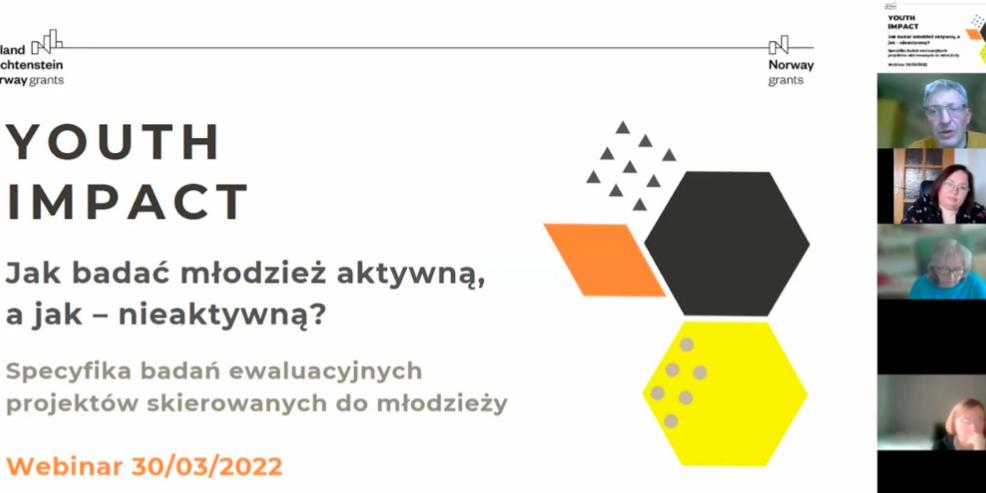
This time the panelists were experienced researchers from the Polish Evaluation Society: Alicja Zajączkowska and Magda Urbańska. The meeting was chaired by Dr. Sławomir Nałęcz from FSLD.
The motto of the discussion was the question: How to conduct evaluation with active youth, and how – with inactive?
This question became the starting point for the exchange of experiences from many studies carried out on people from 15 to 29 years of age, taking into account both their level of activity and the varied level of competences and life situation (disabilities, family situation, past crises). Depending on the characteristics of the studied group, its diversity and attitude to evaluation – the scope, depth and methodology of the research will be
Although 90 minutes were planned for the entire round table, the discussion turned out to be so interesting that the participants decided to extend the meeting a bit in order to exchange practical solutions to problems they encountered during the evaluation research with young people.
The recording from this round table was posted on Youtube. You can find it here by FRDL
Project Youth Impact
75
Youth Employment Magazine
“NO LIMITS”
The aim of the evaluation was to find out whether and to what extent the objectives of the project were met and what is its current and expected impact. The evaluation has been focused on the whole project, on the one hand it is the process of its implementation, administration, and management and on the other hand the form and content of its outputs, results as well as their dissemination and usability in the future, or as inspiration for other organizations and actors working with disadvantaged youth.

Key words: disadvantaged youth, young people with special needs, volunteering, labour market, inclusion, skills, data collection, qualitative research, European Solidarity Corps, Slovakia, case study, focus group, project evaluation.
“NO LIMITS” project (n: 2020-2-SK02-ESC11-002505) that is a case study of this article, lasts for 24 months (1.9.2020-31.8.2022). The project main goal was to increase integration between local community and young people with disadvantages (social, economic) or special needs (mental or physical disability) and promote mutual solidarity between society and young people with fewer opportunities through one year long volunteering experience.
Additionally, to the main project goal there were identified three other goals aimed to improve the quality of life of young people with fewer opportunities and/or special needs through an inclusive approach at local level and through the access to new activities for them, therefore to increase and develop the competences and skills of these young people in order to be more competitive in the labour market and last but not least to raise awareness of the needs of young people with disadvantages or special needs to general public. The primary target group of this project and so of the evaluation were three young people from Slovakia who come from disadvantaged backgrounds (social, economic) and/or have special needs (physical, mental disadvantage).
Read the full report here.
Ivana Garanová Petrisková
Project Youth Impact
76
Youth Employment Magazine
Impact evaluation in small and medium-sized organizations.
the impact of such projects were presented by Rafał Trzciński from the IDEA of Development Foundation and the Polish Evaluation Society, using data on the employment of project recipients and the control group selected by the PSM method.
Impact evaluation in small and medium-sized organizations. Is it possible? – this was the topic of the round table organized by the Jerzy Regulski Foundation in Support of Local Democracy as part of the Youth Impact project.
The webinar took place on July 5, 2022, and allowed to present a number of examples of the use of counterfactual methods to measure the actual impact of the project on its recipients. Dr. Tomasz Gajderowicz showed, among others, how the randomization of the selection of participants in vocational activation projects implemented by Labour Offices or by external entities in combination with data on employment status before and after the intervention proved much greater effectiveness and durability of activation of the long-term unemployed carried out by external entities. Interestingly, the relevant ministry, on the basis of another, poorly performed evaluation study giving opposite conclusions, decided to stop outsourcing vocational activation.
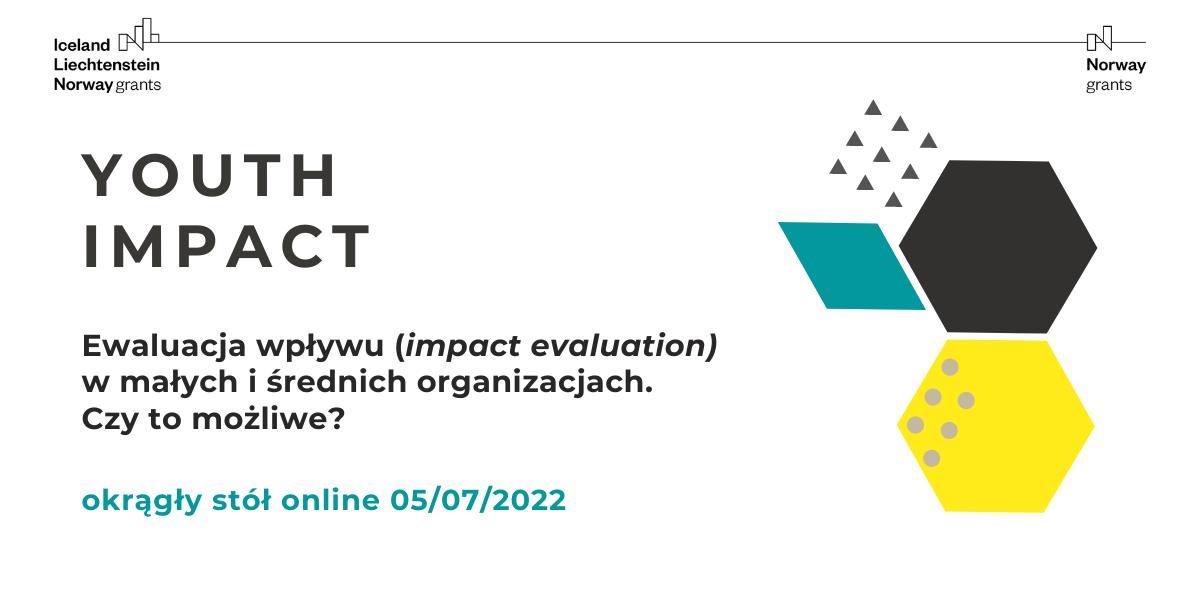
Equally interesting conclusions can be drawn from activation projects, the effectiveness of which turned out to be low. The results of the evaluation of
Regarding small projects, the panellists proposed, inter alia, comparing the effects achieved by participants from different editions of the same project or different projects from the same program, ensuring that the composition of the compared groups is similar by random selection(it is worth using stratified drawing) or forming the compared groups using PSM, possibly by using the DiD or RDD models. It was also recommended to verify with facts to what extent the effects described in the project theory occur in the prescribed manner and to use qualitative methods for the exploration of processes that are to lead to the achievement of the project’s goal. The moderator of the meeting – Dr. Sławomir Nałęcz from FSLD –expressed the hope that the subject of impact evaluation in small projects will be continued, e.g. at the webinars of the Polish Evaluation Society, which was a partner of this round table.
We invite you to watch the recording of the event on the FRDL channel on the YouTube platform at https://youtu.be/-yzPrC34zgo
by FRDL Project Youth Impact
77
Youth Employment Magazine
Is it possible?
Creative techniques in evaluation
We invite you to read expert study in Polish written by Alicja Zajączkowska – evaluator, social researcher, trainer, business advisor, mentor, who specializes in social research and evaluation, social innovation, development strategies, and organization and project management.
Read more here.
Project Youth Impact
Few people, especially young people, like to fill out extensive questionnaires and take part in boring focus groups. However, these are not the only ways in which evaluators can gather data for the evaluation of various activities in which young people participate.

Projection techniques are becoming an increasingly popular instrument of qualitative research used in evaluation research. The development of projection techniques in evaluation takes place especially in relation to evaluation in education, or innovative projects.
The projection techniques adopted for evaluation in this study have been called creative techniques in evaluation. Creative research techniques in evaluation can be used to obtain opinions from an individual, single person and a group of people, most often then taking the form of a workshop. The term workshop evaluation technique is often used for this creative group form of data acquisition. The aim of the study is to present various creative techniques in evaluation and the benefits of using them. The author have devoted special attention to discussing the challenges of using creative techniques in the evaluation of young people.
78
Youth Employment Magazine
Ex-ante evaluation – or why and how to conduct evaluation before the project begins
Evaluation is an examination of the value of a project. It serves to ensure the quality of its implementation and results. It can support project management and decision making. Often, evaluation is carried out only at the end of the project and focuses on assessing whether its objectives and results have been achieved.
This article shows that thanks to evaluation it is possible not only to summarize the achievements of the project, but also to better plan and, consequently, to implement the project. Initial evaluation, also known as ex-ante evaluation, serves this purpose. It can be done – and is worth doing so – when the planned project is still in the idea stage and the concept of its implementation is only emerging, or when it is in the early stage of implementation, when practically no project activities have been undertaken yet.
We invite you to read expert study in Polish written by Beata Ciężka, one of the founders of the Polish Evaluation Society, an expierienced evaluator and trainer.
Read more here.
Project Youth Impact
79
Youth Employment Magazine
2023: European Year of Skills and the YOUTHShare

economies, social economy, and IT and web-based economy. In other words, working on enhancing the skills of people, and especially young people, is hard, but in the end highly beneficial.
Why this introduction?
Because earlier this year, the President of the European Commission Ursula von der Leyen, in her annual speech (State of the Union Address –SOTEU) before the European Parliament, proposed for 2023 to be the European Year of Skills. President von der Leyen focused on the shortage of skills in Europe, with the need to put immediate effort in professional education and upskilling. The proposal was made with the aspiration that 2023 will be the year where the focus on education, upskilling and digital skills will be stronger, “with the effort to achieve the goals set out in the Digital Decade: 80% of Europeans with digital skills and 20 million ICT specialists by 2030” (1). In her address, President von der Leyen also highlighted the importance of knowing what staff are needed in every sector and how the fulfillment of these job positions will be spot on, in terms of skills.
Integral part of the implementation and success of the YOUTHShare project is the training programme, with the double aim, on the one hand to enhance the skills of beneficiary NEETs and on the other hand to support the Key Account Managers (KAMs) in outreaching, coaching, job matching and skills utilizing for the trainees. The training manual for the KAMs, and the training handbook and educator’s manual for the NEETs have been produced by educators, researchers and social work experts, with the view to introduce NEETs to resilient sectors of the Mediterranean
The proposal was adopted in October by the Commission and 2023 is officially declared as the European Year of Skills. In the relevant article on the Commission’s website, it is stated that “The Digital Economy and Society Index shows that 4 out of 10 adults and every third person who works in Europe lack basic digital skills […] To encourage lifelong learning, Member States have endorsed the EU 2030 social targets that at least 60% of adults should participate in training every year, already presenting their national contribution to meeting this target”. It is also stated that “A special focus will be given to activate more people for the labour market, in particular women and young people, especially those not in education, employment or training” (2).
80
Youth Employment Magazine
The Commission’s proposal for “a fresh impetus to lifelong learning” consists of 4 recommendations: a) increased, more effective and inclusive investment in training and upskilling, b) ensuring that skills are in line with the needs of the market, c) taking into account people’s aspirations and skill sets to match them with job opportunities, and d) appeal to people from third countries with the skills needed with learning opportunities and mobility and making more easy for their qualifications to be officially recognised.
In conclusion, another aspect should also be taken into consideration: To understand that skills are not only for bettering one’s career prospects, but also for improving their daily, social lives, like life skills and skills that strengthen social inclusion. With all these in mind, it should be interesting to see what 2023 has in store for us.
1 - https://digital-skills-jobs.europa.eu/en/latest/news/2022-stateunion-2023-will-be-european-year-skills
2-https://ec.europa.eu/social/main.jsp?
langId=en&catId=89&newsId=10431&#navItem-relatedDocuments
Project YOUTHShare
81
Youth Employment Magazine
Singular or Plural? Understanding the multiplicity on EU employment policy

there “one EU policy” on the subject matter? The re-branding of mobility is an obvious and far-fetching case. But is this an exception?
As already noted, the first normative texts addressing specifically the issue of youth unemployment can be traced in 2005: The integrated Employment Guidelines (Council Decision, 2005/600/EC), suggested that the employment rate targets be achieved through measures aimed at increasing employment supply and flexibility, addressing skills mismatch, and investing in human capital.
A different Council Recommendation from the same year (2005/601/EC) articulated the Council’s views on how to achieve the Europe 2010 targets for economic growth and employment through, amongst other, reforms in the labour market that promote ‘adaptability’ and ‘flexibility’.
Starting from 2005 and with a growing intensity year by year, a wide variety of EU normative texts on employment, and more specifically, on youth employment can be recorded. Policies range from up-skilling and reskilling, to subsidies in order to support the first job placement. Among them, mobility schemes are re-branded for the needs of addressing youth unemployment. Labour mobility is definitely not new. Established in 1987, the EuRopean Community Action Scheme for the Mobility of University Students better known as Erasmus programme became a flagship for European integration. Purpose of the programme was to promote “cultural, social, and academic exchanges between European students”. 9 million students have up to date travelled to different institutions and got exposed to different academic cultures. Yet, since 2012 mobility is part of the toolbox addressing youth unemployment. Before the obvious questions arising, regarding the suitability of such a programme in tackling labour market issues, one has to start from a rather fundamental question: Is
Commission Communication COM (2005) 206 amongst its three strands includes the ‘employment, integration, and social advancement’ strand referring to the attraction and retention of more people in employment; the improvement of adaptability of workers and enterprises, and the flexibility of labour markets; and increased investment in human capital.
The ensuing financial crisis in 2008 led to The European Economic Recovery Plan (Commission Communication, COM(2008) 800, 2008) proposing two main exit strategies from the crisis including ‘boosting market demand and ‘smart’ investment in skills’.
In the turmoil of the deepening crisis, the 2010 Broad Economic Policy Guidelines (Council Recommendation, 210/410/EU, 2010) and Employment Guidelines (Council Decision 2010/707/EU, 2010) were primarily focused on monetary and financial stability. To boost employment, Member States were encouraged to promote labour market reforms towards the concept of ‘flexicurity’, while the development of skills
82
Youth Employment Magazine
in accordance with labour market trends was considered another key target.
It was only in 2010 that a specific to the youth policy appears. The Youth on the Move initiative (Commission Communication COM(2010) 477, 2010) comprised four major themes including the ii) the upward trend for employees’ higher qualifications’ and ‘life-long learning and its relation to educational or training programmes’.
At the end of 2011, with EU youth unemployment over 20% and as high as 40% in some countries, the Commission launched the Youth Opportunities Initiative. This initiative became the policy framework for the Youth Guarantee (Commission Communication (COM2011) 933, 2011). The target group of youths included both the unemployed and the NEETs. The communication called on the Member States to launch national policies for tackling the phenomenon while, at the same time, suggesting that ‘The EU level can play a supportive role […] in two ways: By reviewing national policies and performances […]; by providing financial support to national and cross-border action’.
The recommendation intended to provide Member States with a cohesive framework for action. To achieve this, it was structured in six interdependent but discrete fields, which are often mentioned as guidelines. I will be focusing on the third guideline: ‘Supportive measures for labour market integration’ comprising two strands: The first regarded upskilling of ‘low skilled’ individuals into education and training schemes, aligned with labour market demand needs. The second referred to labour market-related measures, which included reducing, when possible, nonwage employment cost; the use of employment subsidies; promoting interregional or international mobility based on the supply of employment or apprenticeships.
As European economies started to recover, the 2015 Broad Guidelines for Economic Policy (Council Recommendation EU 2015 11/84, 2015), readvocated the need for productive investments. The supplementary Employment Guidelines (Council Decision EU 2018/1215, 2018) noted that the labour market demand side should be supported through eliminating ‘hiring barriers’ and promoting ‘responsible entrepreneurship’ and self-employment.
Up until now, the supply side politics were obvious. On a stark change of perception, the communication ‘Towards a Rich Job Recovery’ (Commission Communication (COM2012) 173, 2012) in April 2012 recognised three basic fields of action, from which we focus on two: i) job creation; ii) restoring the dynamics of labour markets. The suggested measures for job creation included hiring and tax subsidies. Furthermore, the communication underlined the usefulness of enhancing flexibility in working relationships.
The Commission proposed a Youth Employment Package in December 2012, which included: i) a Youth Guarantee; ii) suggestions for a European Framework for Traineeships; iii) a European Alliance for Apprenticeships, which was launched in July 2013; and iv) actions for promoting young peoples’ mobility. The flagship of youth unemployment policies, the Youth Guarantee (Council Recommendation 2013/C 120/01, 2013), published in April 2013.
The European Parliament Resolution (2018) on the YG attempted to adopt a long-term perspective. Concerning implementation, Member States were criticised for not having converted the YG Council Recommendation to a more binding form of national policy!
The Reinforced Youth Guarantee (Council Recommendation 2020/ C372/01, 2020), published in October 2020, without deviating from past practices, focuses on the demand side with wage subsidies and ensuring that the beneficiary receives a quality job offer.
A 20th century analysis of what is a “policy” would point towards the following direction: A policy is not a conscious response to a problem but a conceptual framework towards solving a problem. In other words, a policy is identified when the shift from AN issue to THE public issue is also identified.
83
Youth Employment Magazine
It is interesting, therefore, to understand when youth unemployment becomes THE public issue. Despite the persistently high youth unemployment level in the underprivileged areas of the EU, youth unemployment becomes THE public issue only in 2010.
What is more striking though is an apparent policy shift. During the first stages of the financial crisis the mainstream economic paradigm -supply side economics- had a direct impact on the pertinent policy texts (reskilling, up-skilling, adaptation of the employee to new conditions etc). Yet, in 2012 we noted a policy shift. The demand side perspective comes in the forefront and persistently noted in the policy texts following Youth Guarantee. After that the supply and the demand side economics co-exist. This paradoxical co-existence is not the only one. The noted constant effort of the European Commission to achieve full compliance of the Member States to the “recommendations” is a sign of the multiple levels of addressing youth unemployment: Central EU policy compared to national policies. Given that policy includes implementation, we can partly rephrase the previous ascertainment. If there is a policy shift, then this regards the EU Commission. The Member States applied versions of that policy and they have been criticised for that reason. In that respect the ‘one EU policy’ principle seems to collapse.
The re-branding of the mobility between EU member states in order to tackle youth unemployment represents an extreme case, and more specifically one that is connected to a steadily growing culturalization of the EU youth policy. Nevertheless, the above shift in the direction of the EU employment policies and even more the apparent difference between central european policies and national implementation, represent a more subtle, yet widespread multiplicity of, sometimes contradicting, policies.
Author Ioannis Papageorgiou
84
Project YOUTHShare Youth Employment Magazine
The Cowork4YOUTH Baseline Study: an interview with Dr. Elish Kelly
In the previous issue we announced (with some excitement) the publication of the Cowork4YOUTH project’s Baseline Study on the Impact of Youth Employment Policies. Today it’s time to take a closer look at the content of the Baseline Study, with Dr. Elish Kelly as our guide. Elish is a Senior Research Officer at our Irish project partner, the Economic and Social Research Institute, which led the research team behind the Baseline Study.
The Cowork4YOUTH Baseline Study offers an extensive look at the situation of the labour market and the youth employment policies in the project’s study countries in the years 2008-2020. Based on annual European Union Labour Force Survey (EU-LFS) microdata, the study examines: i) employment rates; ii) unemployment rates; iii) long-term unemployment rates; iv) NEET rates; and v) inactivity rates. It looks at these indicators both for the overall population, and divided by gender. Furthermore, the study also includes calculations of sectoral youth employment shares for economic sectors that correspond to the region types being focused on in the project.
The Baseline Study on the Impact of Youth Employment Policies and its Executive Summary are freely available from our project website: www.cowork4youth.org
The Cowork4YOUTH Baseline Study is a collaboration of researchers from institutions in 5 di ff erent countries. How does such an international collaboration work?
First, maybe to mention the benefits of the international collaboration that took place for the Baseline Study is that it allowed for identification and learnings on employed and unemployed youths and NEETS across each of
the partners’ countries, in terms of the youth situation within each country and relevant policies and programmes that have been put in place in the various countries since 2008 to support their youths.
In terms of the mechanisms by which the international collaboration took place, one country partner was identified to lead on the Baseline Study, in this case Ireland. The Irish research team devised an outline for the Study in January 2022, consulted on the outline with its Cowork4YOUTH project partners at the Steering Committee meeting that took place at the end of that month, agreed on its framework with the research partners in February and commenced the Study’s data work in March 2022. The lead partner undertook the data analyses contained within the Study, which are based on EU-Labour Force Survey (EU-LFS) microdata. Once complete, the relevant country partners whose country was covered within the Baseline Study, in this case, Spain, Italy and Greece (in addition to Ireland), reviewed their country’s chapter analyses and provided feedback on the work. These research partners also provided information on the economic context within their country for the period of the Study (2008-2020) and the relevant policies that had been put in place over the period to assist their employed, unemployed and NEET youths. While this country chapter work was going on, the non-Baseline Study country research partners collated and provided an overview of European policy in this area between 2008 and 2020. After the country chapters were finalised, these research partners also summarised the main findings from the Study and drew out the main policy implications that arose from the Study. The Baseline Study then went through a peer-review and revision process, before being finalised for publication at the end of July 2022.
85
Youth Employment Magazine
The Baseline Study notes differences in the employment situation of youths between countries and even between regions in the same country. What would you say the cause of this is, and what are the implications?
Yes, that is correct. While the four countries examined - Greece, Italy, Spain, and Ireland - share similar issues, there is also considerable variation in the composition of the challenges within and between the countries. While it is difficult to pinpoint with certainty the exact reasons for the discrepancies in the employment situation of youths between the study countries, and within countries, there are some potential explanations. First, the period covered in the Baseline Study is 2008 to 2020, and one needs to bear in mind that there were already existing inequalities between the countries, and regions within the countries, before this period that will have contributed to the observed discrepancy in findings over the study period. These discrepancies will also have impacted the effectiveness of any common policy responses implemented over the period of the study, such as the Youth Guarantee. There are also structural determining factors at play in the socio-economic development of the national contexts of the study countries, as well as the countries’ regions, that will have affected the cohorts under study and, consequently, the Study’s findings, both before and during the period covered by the Study. For example, variation in institutional settings (e.g., centralised versus multi-level governance systems). Specific to the period of the Study, there is significant heterogeneity in the findings across each member state, and within states, due to variation in the impact of the 2008 Great Recession across the countries, along with differences in the labour market policies introduced at a national level in each country over the period.
Having taken a broader look at European labour policies since the Great Recession, would you say they have been successful?
One cannot unquestionably say yes to this question, and I think the fact that we see variation in the findings across the study countries shows that there has been variation in the effectiveness of European labour market
policies to assist youths in each country examined since the Great Recession. This Study identified a number of key youth employment policy responses implemented by the four study countries to address the severe impact of the Great Recession, both individually and also collectively under the European Youth Guarantee (YG). In doing this, the research highlighted the different effects that such a European policy can have due to divergent country conditions, both economic and social, and also, as already mentioned, variations in institutional settings across countries.
Was there anything unexpected among the findings?
Maybe another way to think of this question is were there any interesting findings as opposed to unexpected, given that one of the objectives of the study was to identify and provide a baseline of the actual situation within each country between 2008 and 2020.
In terms of interesting findings then, one of the main ones, and which has already been referred to, is that even though the Study found that the countries examined share similar issues there is considerable variation in the composition of the challenges within and between countries.
The study found that by 2019 no country had returned to pre-recession levels of youth employment, and rates of youth unemployment remained between 20-30% for all countries in 2019 except for Ireland (9.1%). Longterm youth unemployment rates across the four study countries are marked by recovery to, or close to, pre-recession levels except in the case of Greece. NEET rates showed signs of recovery except for Italy where they have failed to decrease significantly from 2014 levels. One of the main findings from the Study was the identification of large variations in the make-up of employed, unemployed, long-term unemployed and NEET youths in the four study countries.
86
Youth Employment Magazine
The study also considers differences in the employment situation of men and women in the study countries. Did you gain any insights concerning diversity and inclusion in the labour market, which is the topic of this issue of the Youth Employment Magazine?
The research highlighted that differences exist between men and women across the four study countries. For example, labour market indicators for female youths trailed their male counterparts in Greece and Italy in nearly all measures examined. This gender difference was less pronounced in Spain and Ireland, largely equalising or becoming marginal in later years for youth employment and unemployment rates. Nevertheless, in spite of this convergence, male rates of youth employment remained higher in all countries as of 2020. With regards to NEETs, in both Spain and Ireland males dominated NEET rates after the peak of the Great Recession, but in more recent years females have constituted the larger percentage of NEETs. Also, while the Study found a general upward trend of inactive youths in all countries, the rate was higher for females.
Did you face any particular challenges concerning the collection and the analysis of the data? And if so, how did you overcome them?
The analyses contained within the Baseline Study are based on EU-Labour Force Survey (EU-LFS) microdata, which we applied to Eurostat to access for this study. The calculated rates in the Baseline Study do not always line up with those published by Eurostat, which is due to the use of quarterly data by Eurostat for its published results, whereas annual data were used in the Baseline Study and each data source is based on a different weighting scheme. Nevertheless, the discrepancies between the annual and quarterly data are minor.

87
Youth Employment Magazine
Project Cowork4YOUTH
Youthwise: An initiative by the OECD

include to be between 18-30 of age, be fluent in english and be highly interested in the theme of the year they are applying for (for instance, for 2022 is for “an inclusive and green future for & with young people”). Regarding the activities, Youthwise delegates provide their generation’s ideas and insights to the OECD, participate in the organisation’s closeddoor meetings and consultations with a variety of topics, speak on panels and attend webinars on behalf of the initiative, write documents and create audiovisual material on behalf of Youthwise, participate in workshops, and get to know how international policy-making works through networking.
Here at Cowork4YOUTH our focus is on young people and how to reinforce their employment opportunities, but we also take a look at movements that involve youth in a broader aspect, such as inclusiveness and participation in policy-making. Therefore, we follow closely any initiative and plan that involves this age group - and one of them is Youthwise.
Youthwise is an OECD initiative launched in 2021 with the aim to promote “youth perspectives and ideas” within the organisation, as well as to “improve youth understanding of the organisation’s work and international policy making”. The focus of the 2021 campaign was learning and unemployment, and, as stated in the initiative’s website, the input was also provided to the Youth Action Plan; an EU initiative with the goal that EU external action enhances the place of young people on a political, social and economic level and supports them into getting involved in policy and decision-making.
Youthwise consists of a Youth Advisory Board of 24 young (aged 18-30) delegates that get selected by an inter-generational OECD jury each year, and come from countries-members of the OECD. The selection criteria
In the framework of these initiatives, a workshop was organised by the 2022 OECD Ministerial Council Meeting (MCM), where members of Youthwise were brought together along with representatives of youth organisations like Youth Ambassadors Society, UNESCO and Les Jeunes Européens, as well as OECD experts, where proposals regarding youth participation, policy action for future generations and environment and the planet were recommended. Specifically for youth participation, the proposals entailed promoting diversity in government and other public institutions concerning youth participation, improved access to information that are of high importance to youth, and giving the space to young people to create jobs that mirror their perspectives and offer them the chance to achieve change. As for policy actions for future generations, the proposals included for schools to prioritise essential skills, including creativity and problem solving, so that young people are not “only good workers but also fulfilled citizens”.
Source: https://www.oecd.org/about/civil-society/youth/youthwise/
Check our project’s website for news and stories: https://www.cowork4youth.org/
Project Cowork4YOUTH
88
Youth Employment Magazine
Casarrubuelos in the RAISE Youth project (2018-2022)
improve their general employability. Always favouring the creation of employment from a sustainable and environmentally friendly perspective. In addition, the Casarrubuelos DEMO Center has also become a collaborative space for the generation of ideas and networking, where young people can increase their network of contacts and where the ideas contributed by the members of the community can be collected, promoted and put into practice.
Casarrubuelos’ participation in the RAISE Youth project has been very productive and interesting. Thanks to it, and to the funding and support of the EEA and Norway Grants, the First Vermicomposting Demonstration Center in Europe has been established in Casarrubuelos (Madrid – Spain), as a collaborative center with a surface area of 2450m2 for being used by the whole community, within the framework of the Circular Economy and to promote the experimentation and the dissemination of innovative agrienvironmental activities

The heart of RAISE Casarrubuelos are our youths. Concretely, more than 600 NEETs that have known the activity, training courses and mentoring programmes of RAISE Youth Casarrubuelos. With more than 300 NEETs that have participated in our trainings and about 70 NEETs having started a business or got a job, while other 15 are in the process of creating their own business.
From the professional team of Casarrubuelos, we are very proud of all our young people and the effort they have made to become more valuable workers. Our commitment to them has been total and we have tried to provide them with real help and support in their training and professional training processes. Thank you all for letting us be part of your success stories, overcoming and personal and professional growth processes!!!!
RAISE Casarrubuelos is a social project too for the sustainability of municipalities, through the recycling of urban organic waste by means of composting and vermicomposting. RAISE Youth Casarrubuelos and its DEMO Centre of circular economy, have as main objective to give support and qualified training to NEETs, with the intention of helping them to become entrepreneurs and/or to
And thanks, of course, as well, to our European partners and colleagues in the RAISE Youth Project promoted and funded by the EEA & Norway Grants, without whose initiative, support and funding none of this would have been possible. It has been a pleasure to be part of one of your interesting projects to achieve a green, competitive and inclusive Europe.
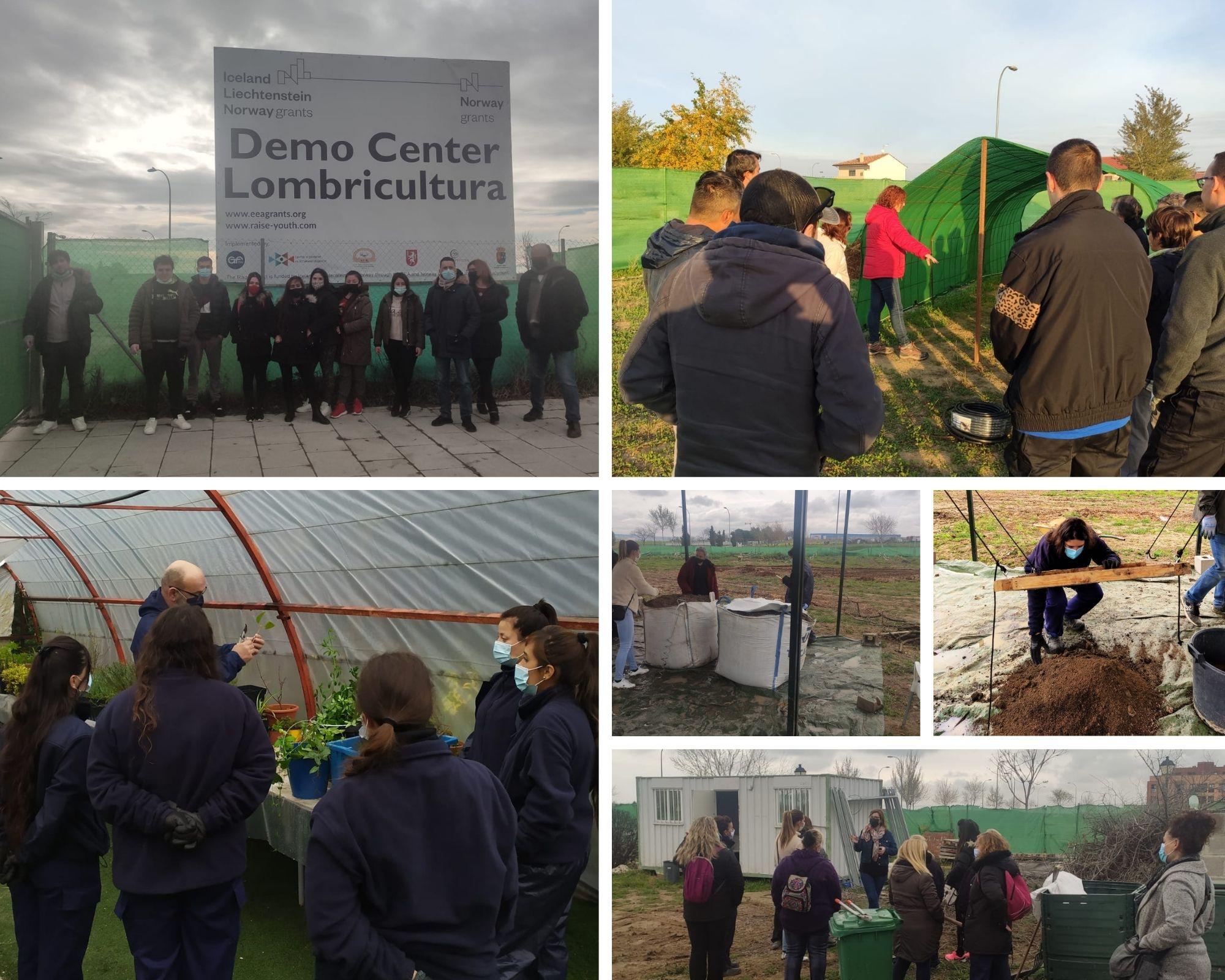
89
Youth Employment Magazine
Project RAISE Youth
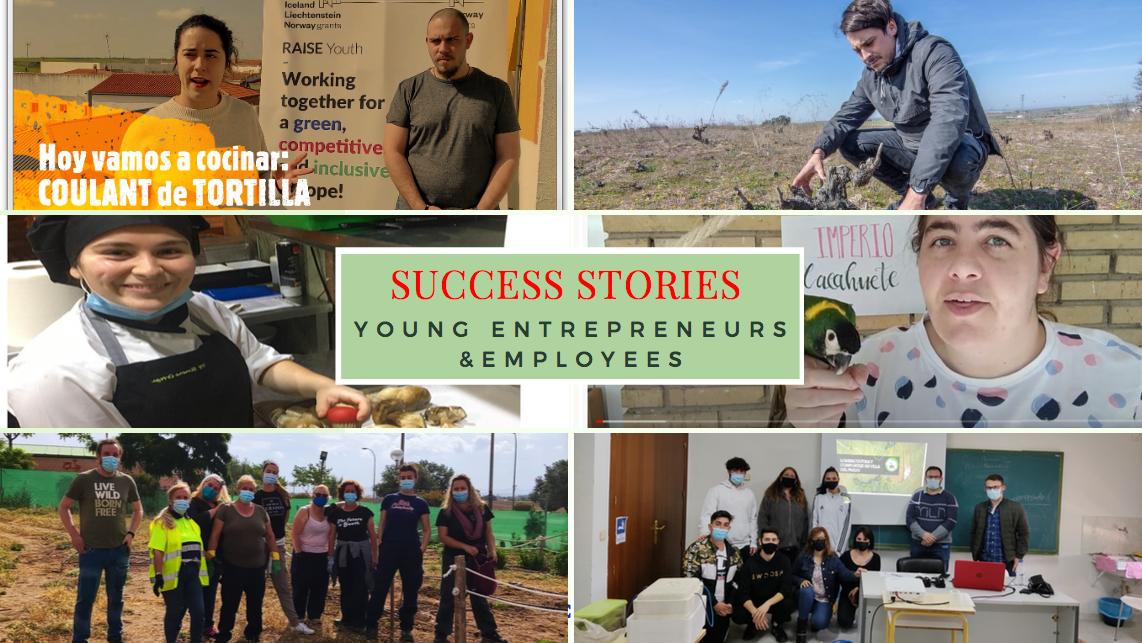
90 Youth Employment Magazine
RAISE Youth - Rural Action for Innovative and Sustainable Entrepreneurship for Youth
a final reflection from Constanta & Tulcea
NEET youth is one of the most vulnerable groups, and those living in rural areas are even more exposed to various risk factors: scarce of job opportunities, low income sources, low educational opportunities etc.
Romanian rural NEETs are no exception form this unfortunate rule. This is why the ‘Raise Youth’ project has addressed this delicate topic in some of the most challenged areas in Romania, bringing a fresh dimension onto the sustainable development and sustainable agriculture, as well as onto the ecotourism.
counties
management, money management, understanding eco-tourism, acquiring basic knowledge on sustainable agriculture, and even entrepreneurial skills. All these assets, although completely new to most of the beneficiaries, were very welcomed and highly appreciated, and the beneficiaries have agreed to further expand their knowledge in this field.
These topics are new to NEET young people, as they are rather new to most of Romanian young people. Nevertheless, young people are more interested in topics connected to environmental protection nowadays, more than 10 – 15 years ago. Apparently, climate change and angry storms have set a pathway for active curiosity and even the will for civic engagement.
In Romanian Dobrudja region (Constanta and Tulcea counties), the project has connected young people from more than 30 villages. Thus, over 200 young people became beneficiaries of the ‘Raise Youth’ project. Should we keep in mind that officially, these people are difficult to track and to bring to (non)conventional educational frameworks, then 200 means a lot. Plenty of time invested in connecting with the municipalities, hundreds of hours spent identifying and selecting the right people as beneficiaries, making sure these young people are open to new ideas and eager to discover the world, to connect to their peers and even to follow strangers to unfamiliar topics.
Some of these uncharted territories comprised workshops on time
Due to the project activities, 10 NEET young people in Dobrudja region got hired in the tourism industry, as well as in agriculture companies. Thus, they have improved their life by having a source of income. During an informal discussion, they have declared to be proud of getting a job after being assisted through the ‘Raise Youth’ project.
According to our survey, over 100 beneficiaries have become more aware about their own resources (life skills, various knowledge and abilities) and thus have become more self-confident. As a result, they are more likely to be self-reliable and generate income. In fact, one of our main goals in this project was to drive NEET young people to broaden their horizons and to set higher life goals. We have focused on increasing their self- confidence, by organising online seminars and in-person workshops on vocational counselling, digital marketing, or building cross-generation support.
The vocational counselling online and in-person workshops opened the door for a serious debate on the educational resources and opportunities in the rural areas. This delicate, yet very important topic needs to be addressed by public authorities on a continuous basis, until new vocational schools will open their doors, and rural youth will no longer face disadvantages or be marginalised for not being able to attend schools to far from their home, or with no possibility to be hosted for the studies.
91
Youth Employment Magazine
The project has provided valuable resources for employability and entrepreneurship, but it has also created the framework for civic engagement. Thus, some of the beneficiaries have proved to be proud volunteers and active citizens, shaping strong partnerships with the municipality, during local seminars for community design. The events were organized in the home villages of the beneficiaries, and brought together NEET youth, local councilors, public servants, who have improved their dialogue. According to the participants, most of them would like more support from the municipality regarding community services for youth, job information or training.
Furthermore, we have organised environmental protection activities such as cleanup sessions, or short hikes to local forests, where we have facilitated discussions about the benefits of having and maintaining a clean environment. Such activities were highly appreciated by the participants, as a strong way of getting people of all ages involved for a better cause. In fact, these events have been the perfect opportunity for the NEET beneficiaries who are parents, to bring their own children to our activities.
Apart from the success stories, this project has faced some challenges as well. As in the rural area life is difficult and job opportunities are rare and
low paid, some of our beneficiaries chose to work abroad, in WestEuropean countries, in low-skilled activities in construction or in agriculture industry. This is in fact one of the ‘daily routines’ in rural Romania, the country with the lowest per capita income in the European Union.
At the end of the day, the ‘Raise Youth’ project has brought a ray of sunshine and has improved the life of several hundreds of people, while impacting their relatives and friends, as well. Similar projects, who teach people how to fish instead of giving them a piece of bread, prove to have stronger and deeper impact.
Cosmic Barzan, RAISE Youth regional demo center coordinator for Constanta - Tulcea counties

92
Ioana Manaila, RAISE Youth Romania communication manager
Youth Employment Magazine
Project RAISE Youth
Contributors & Credits
CONTRIBUTORS
From the Fund Operators
Mateusz Wiśniewski
Francesca Bombarda Sara Barbi
External Contributors
Thomas Mc Grath
From the Projects
Jobsplus
Anna Maria Darmanin Elena Stylianou
Natalia Truszkowska Kamila Wodka
BB Consulting Team
Diana Yankehayova
Joerg Schoolmann
Yiorgos Alexopoulos Enerida Isuf
Giulia Parola
Meath Partnership team FRDL
Zofia Penza-Gabler
Ivana Garanová Petrisková Ioannis Papageorgiou
Cosmic Barzan Gojana Paponja Alina Adomnicăi Monika Peter Tzvetkova Anna Lipińska Kyriaki Kyprianou Maria - Evangelia Gretsi Laura Pacareu Flotats Ioannis Papageorgiou Kremena Yordanova Radka Zgarbova Francisco Simoes Amber Darmanin Anastasia Vlachou Ioana Manaila Katarzyna Udała
Themes of the month:
Projects: 0033; 053; 058; 086; 0181; 192; 314; 345
DIRECTOR
Gian Luca Bombarda
93
Youth Employment Magazine
Cover image: YOUTHShare, Yenesis, StayOn, SEPAL
The contents of the Magazine are the sole responsibility of the authors and can in no way be taken to reflect the views of the Donors.
born with the intention of sharing the results and updates of the projects participating to the Fund to showcase the main achievements of implemented activities.
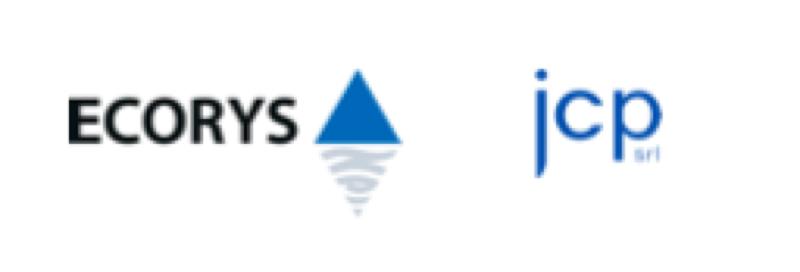
Follow us: www.youthemploymentmag.net

Don’t miss the Youth Employment Forum!
Go to the Forum
Contact us: themag@youthemploymentmag.net
Official number: 3380/2019
FUND OPERATED BY:
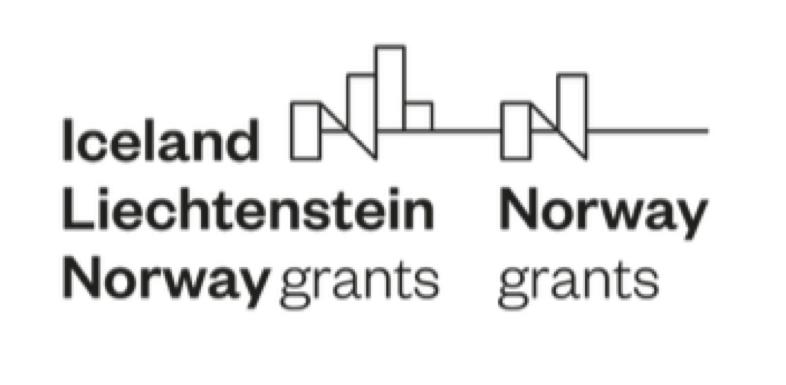
94
Youth Employment Magazine









 Luca Bombarda The Fund Director
Luca Bombarda The Fund Director

 Thomas Mc Grath Our Irish Journalist
Thomas Mc Grath Our Irish Journalist



































































 by FRDL Project Youth Impact
by FRDL Project Youth Impact

















